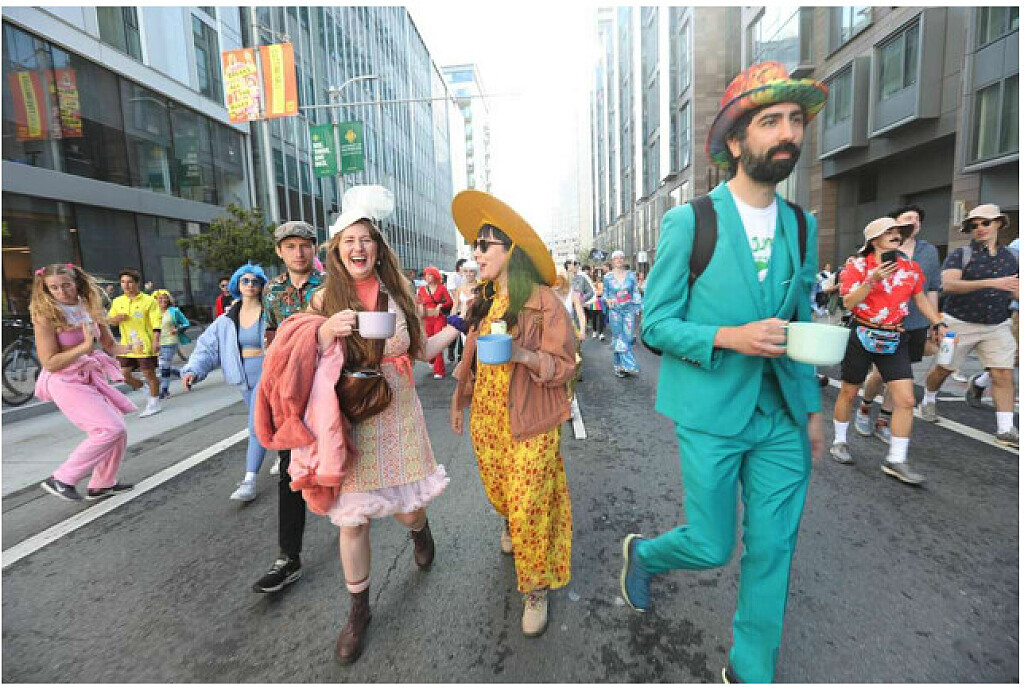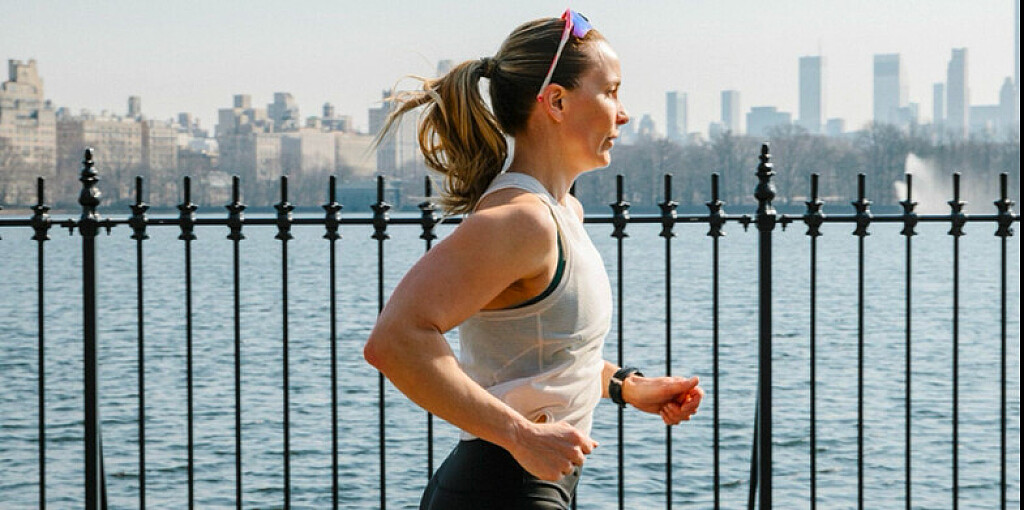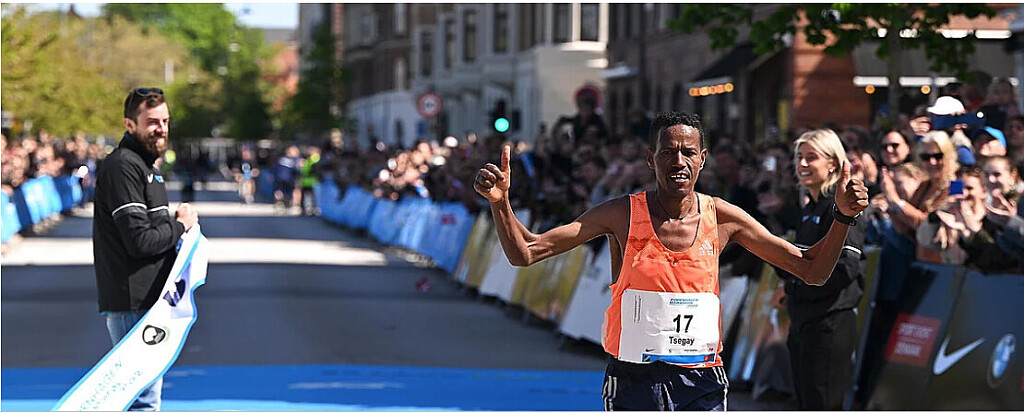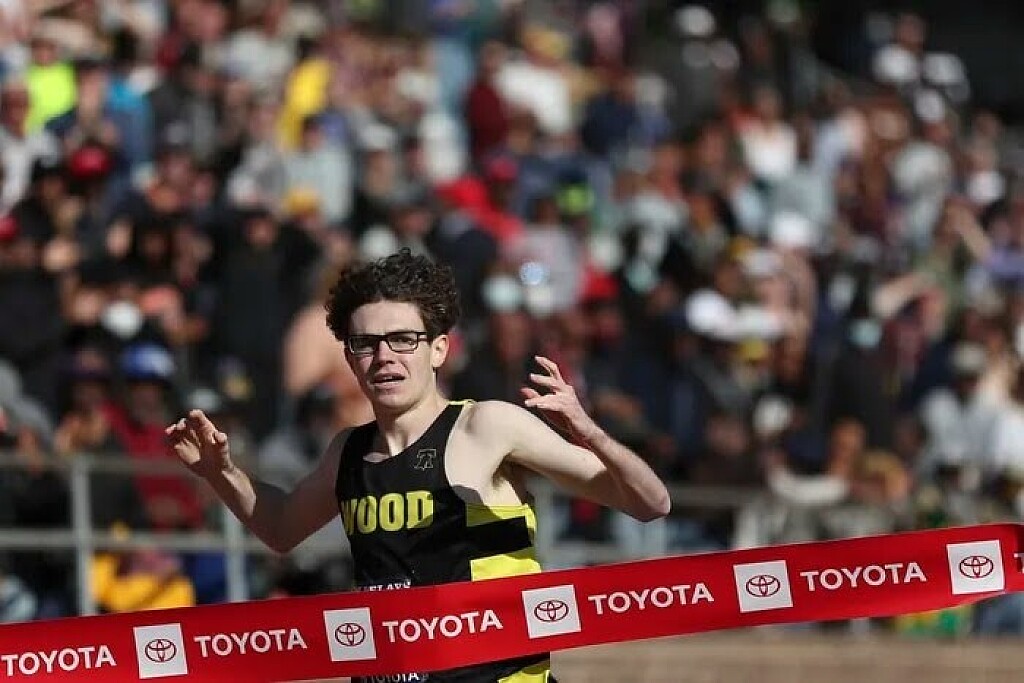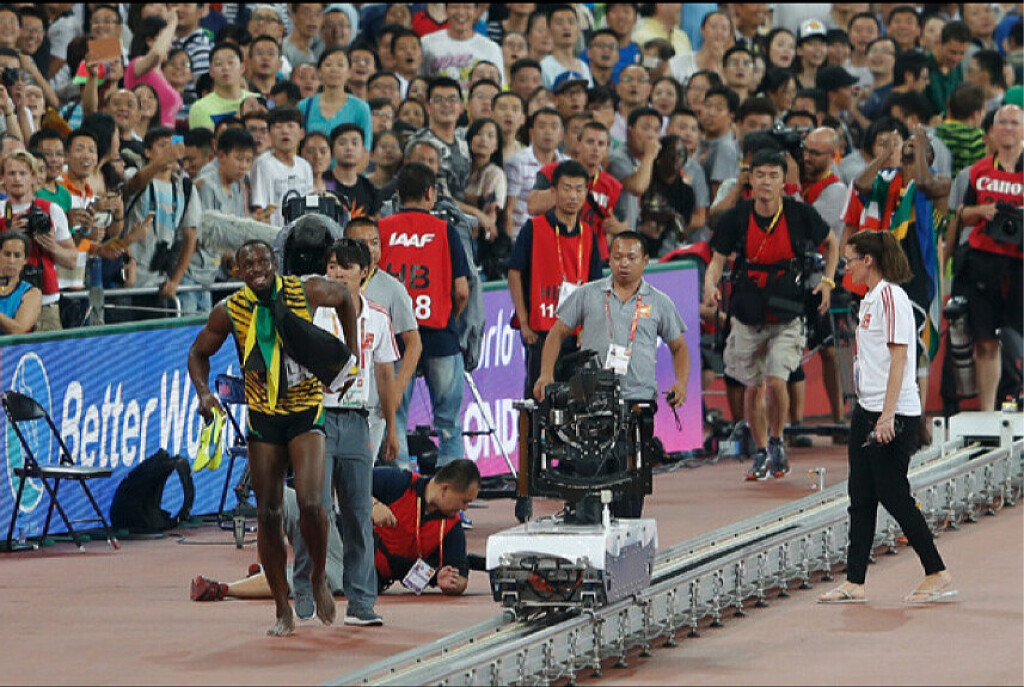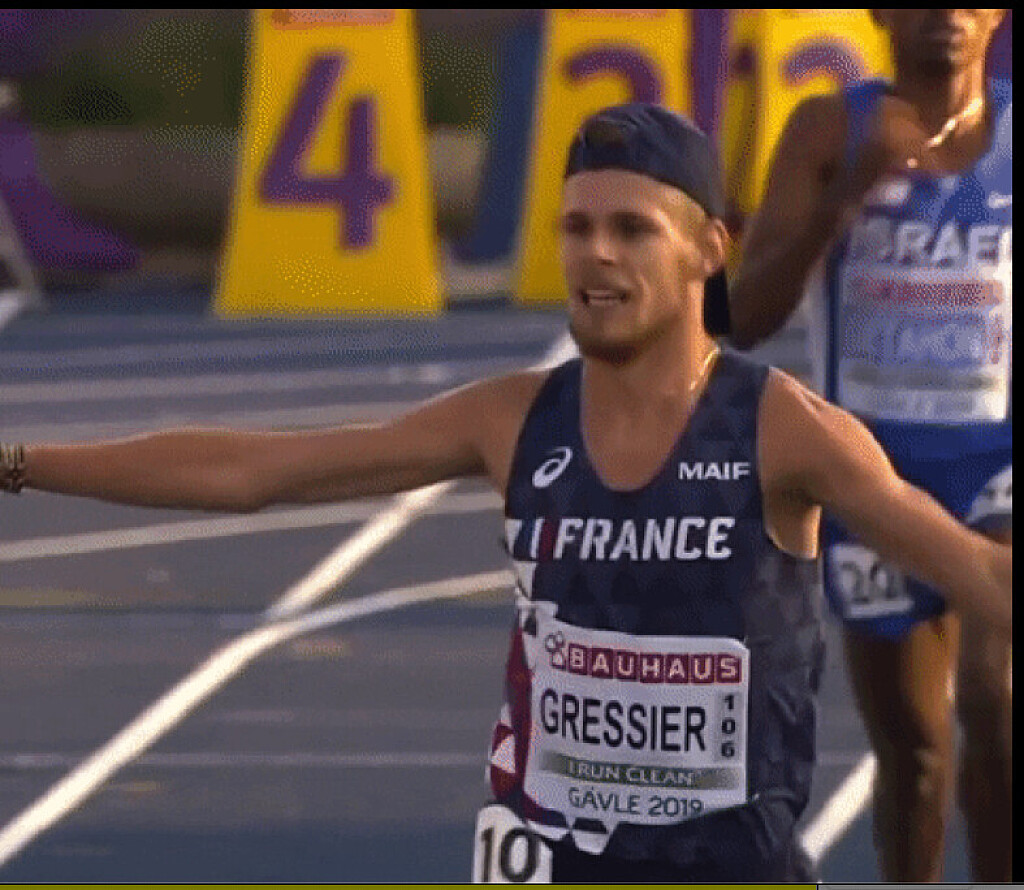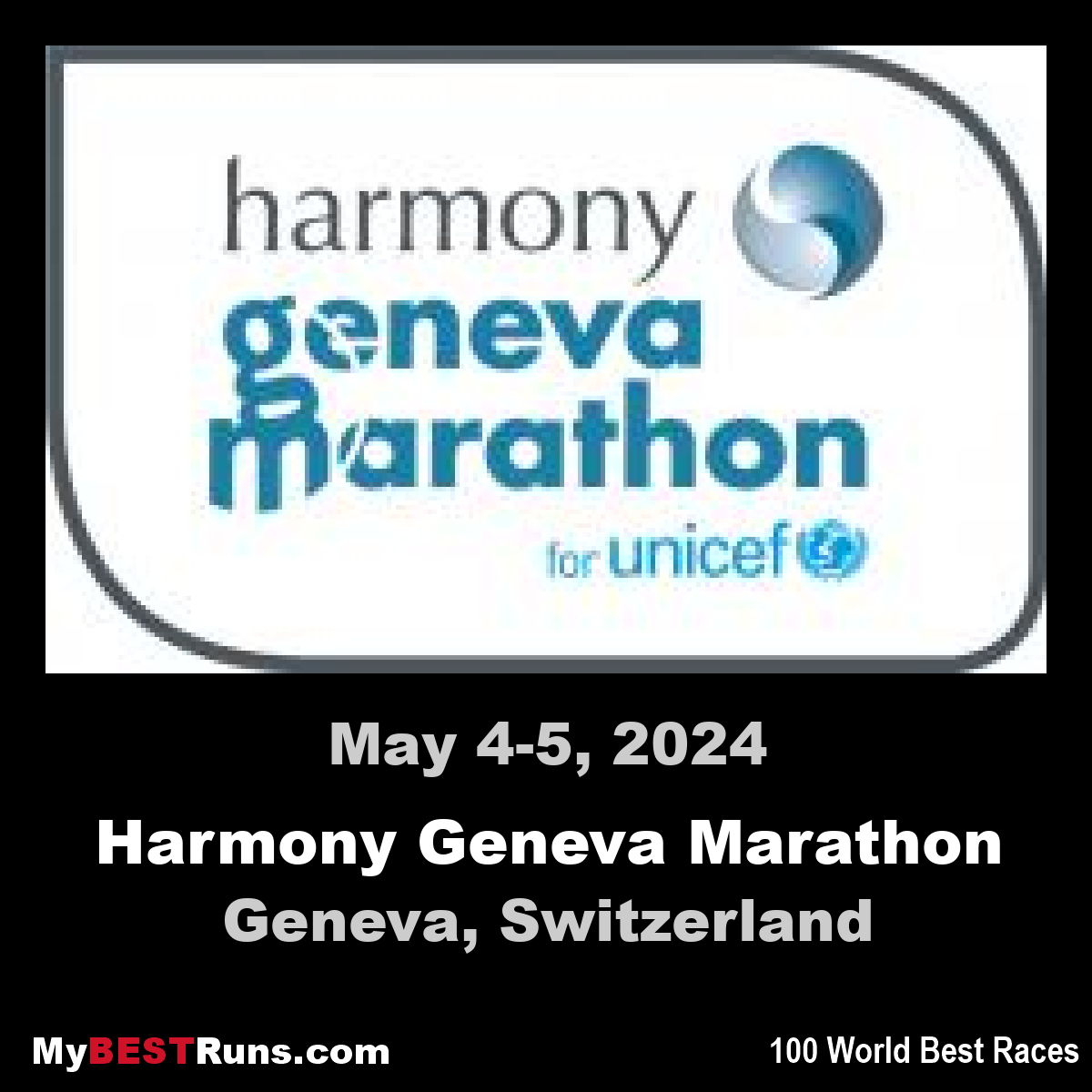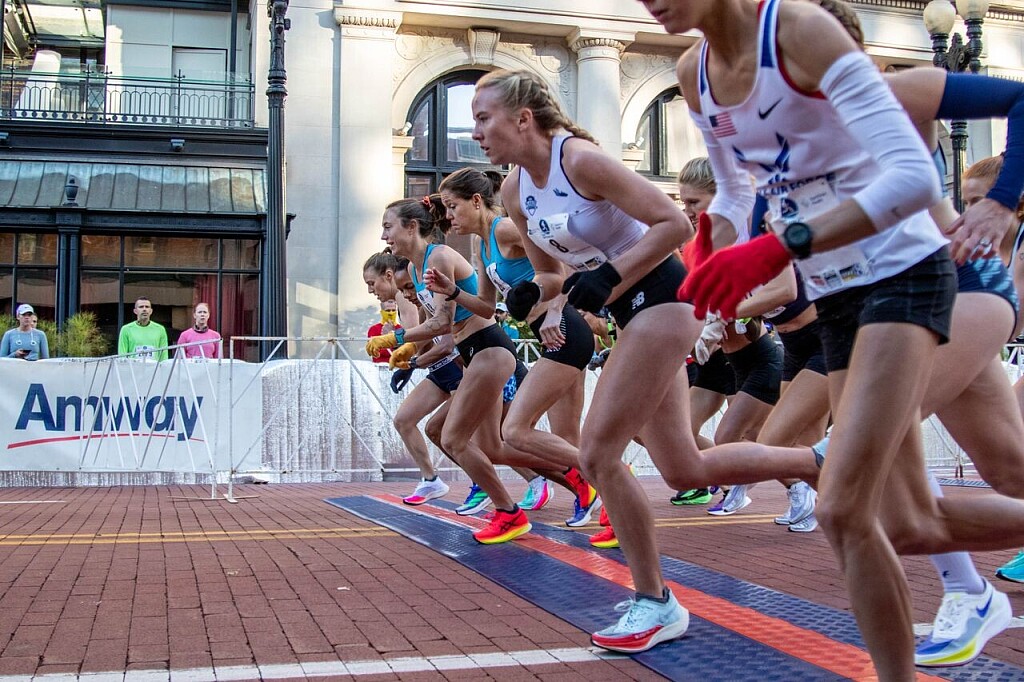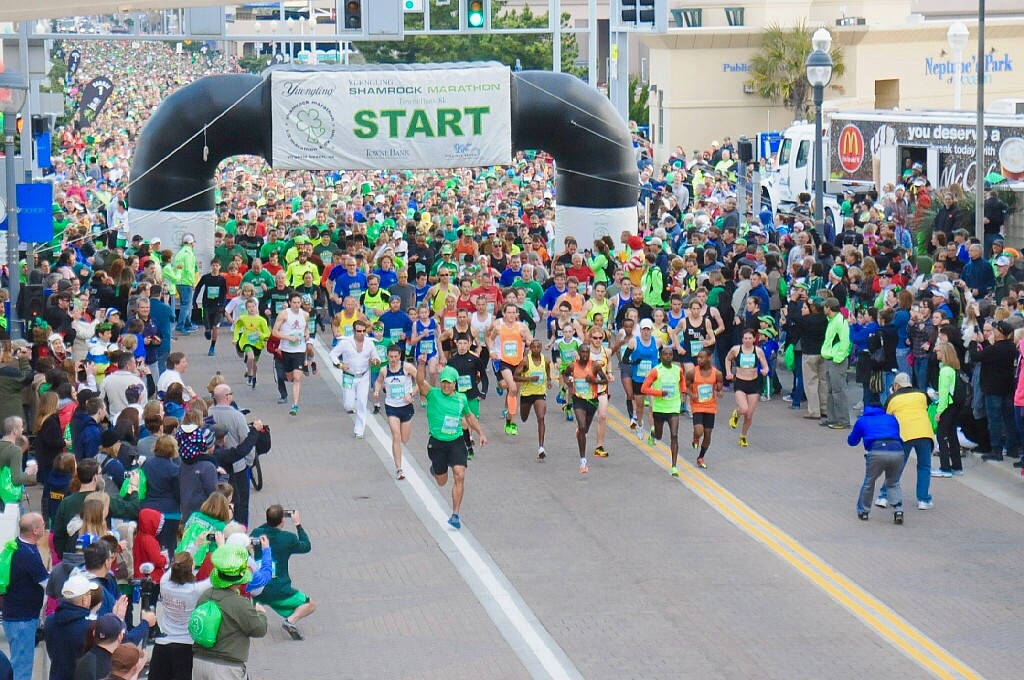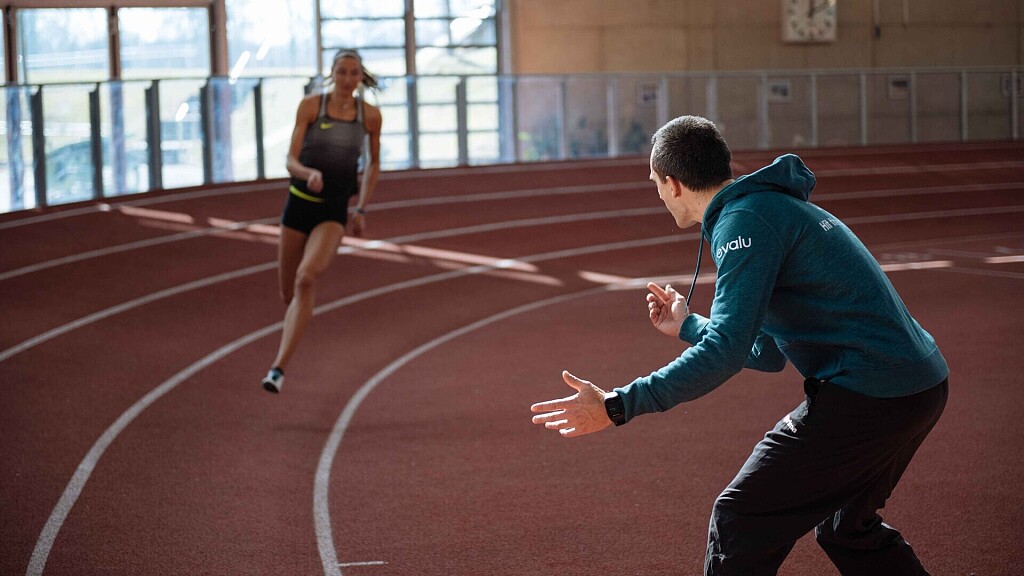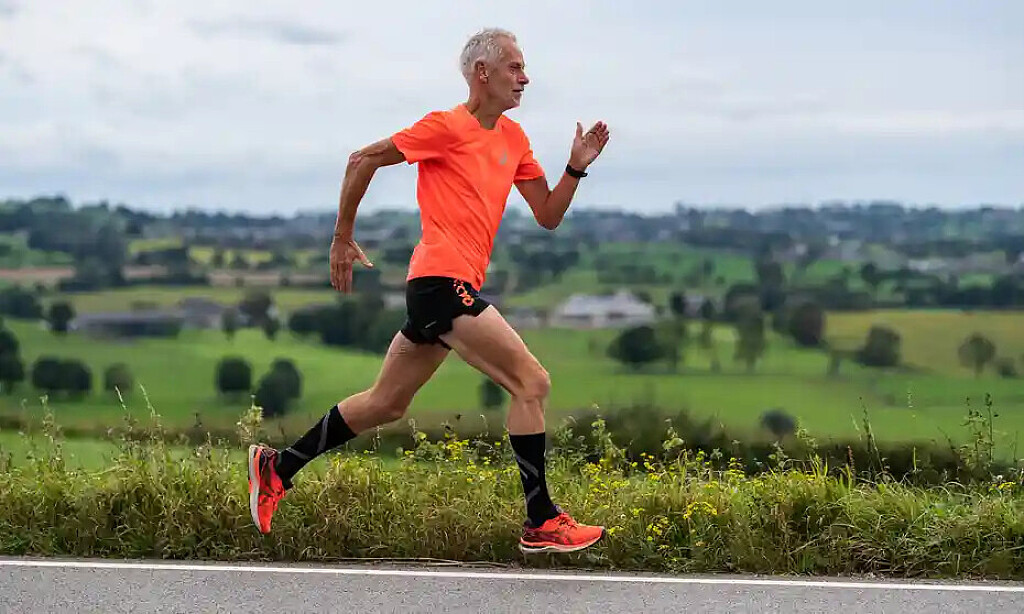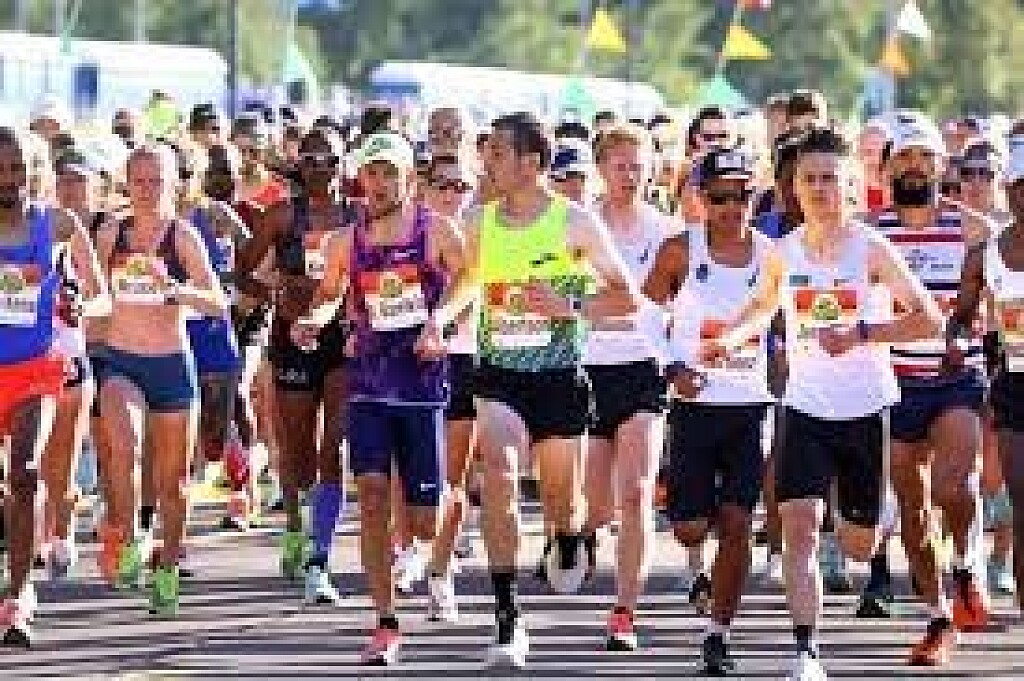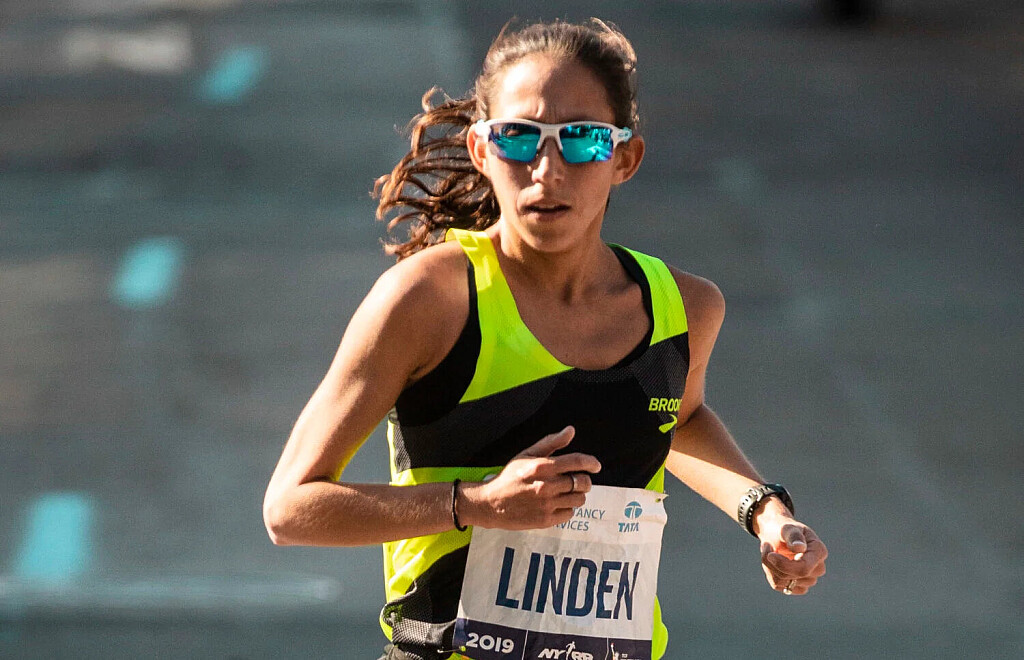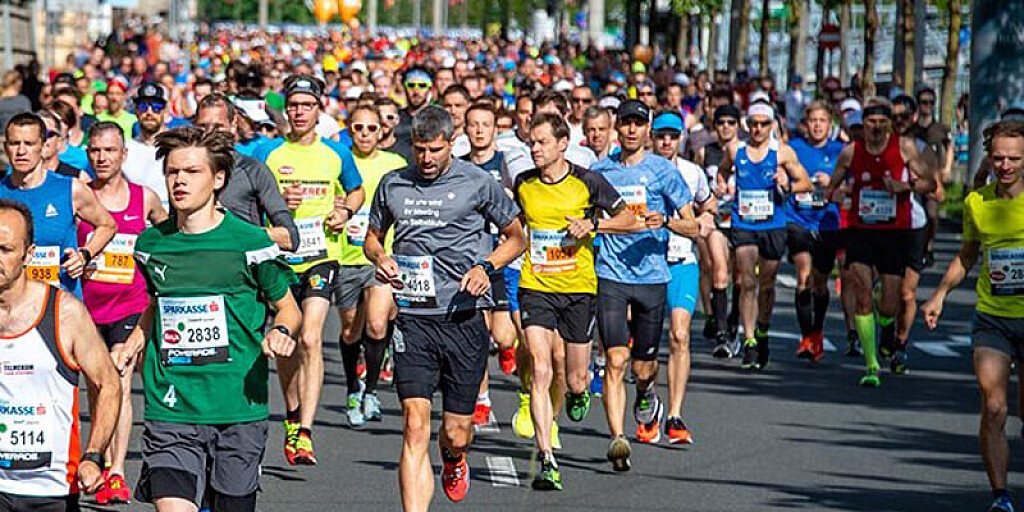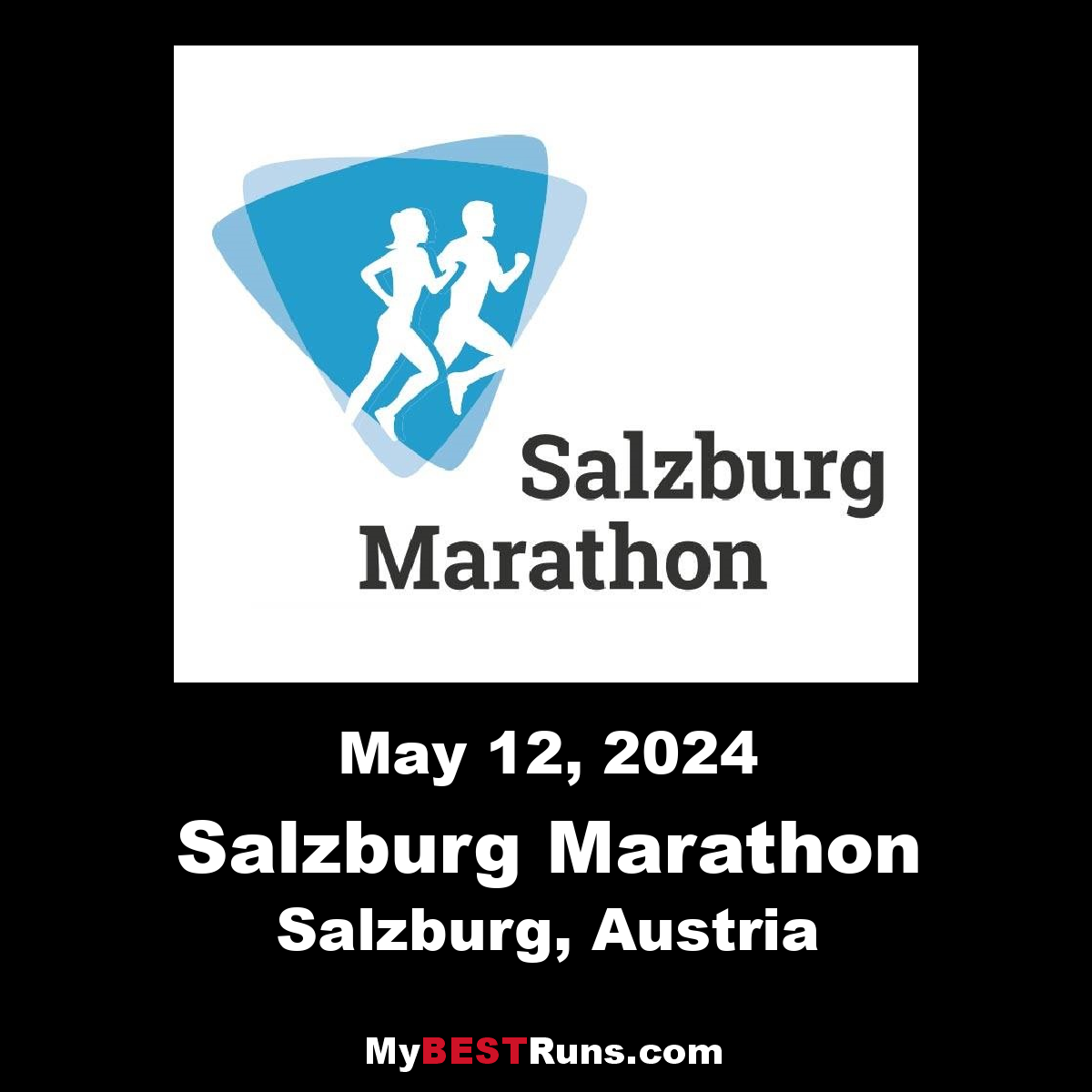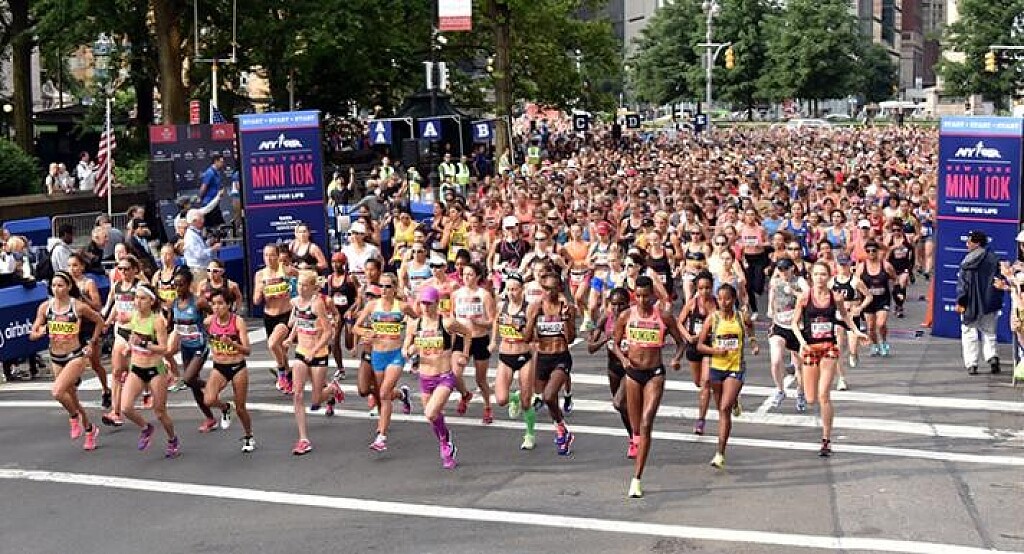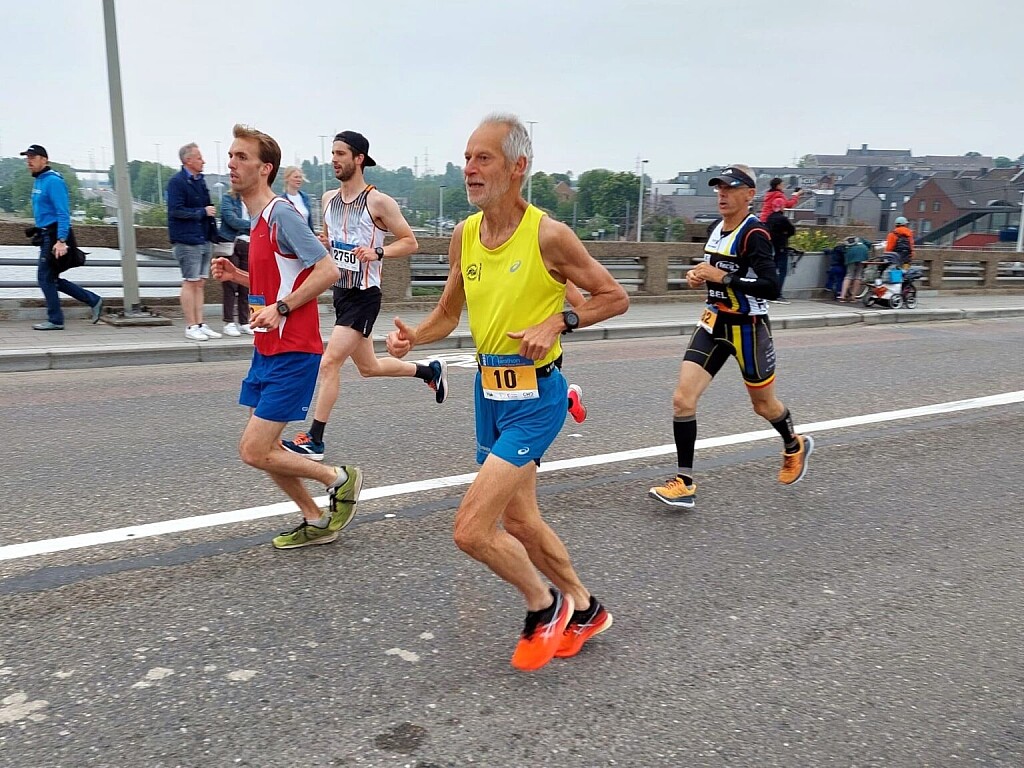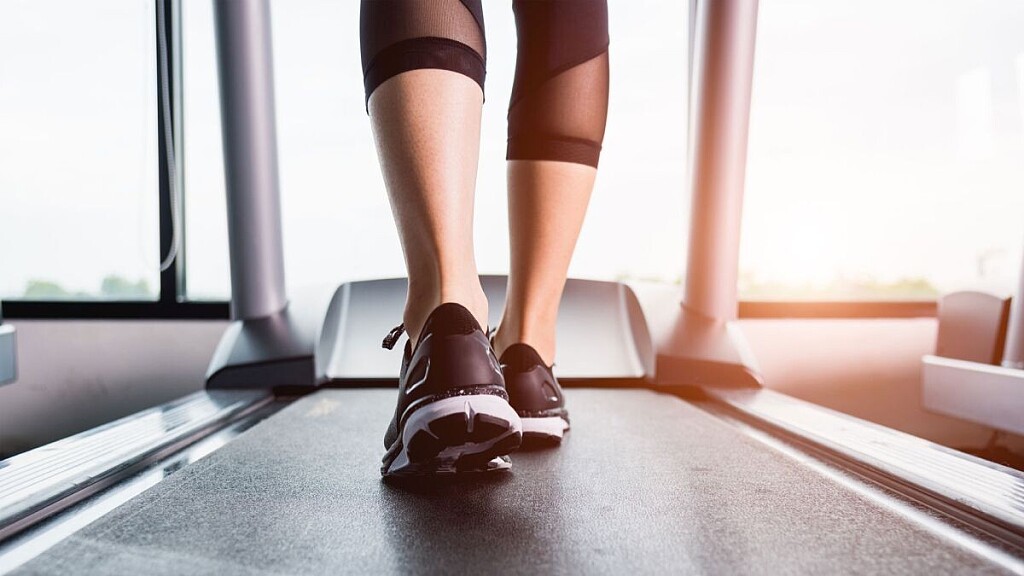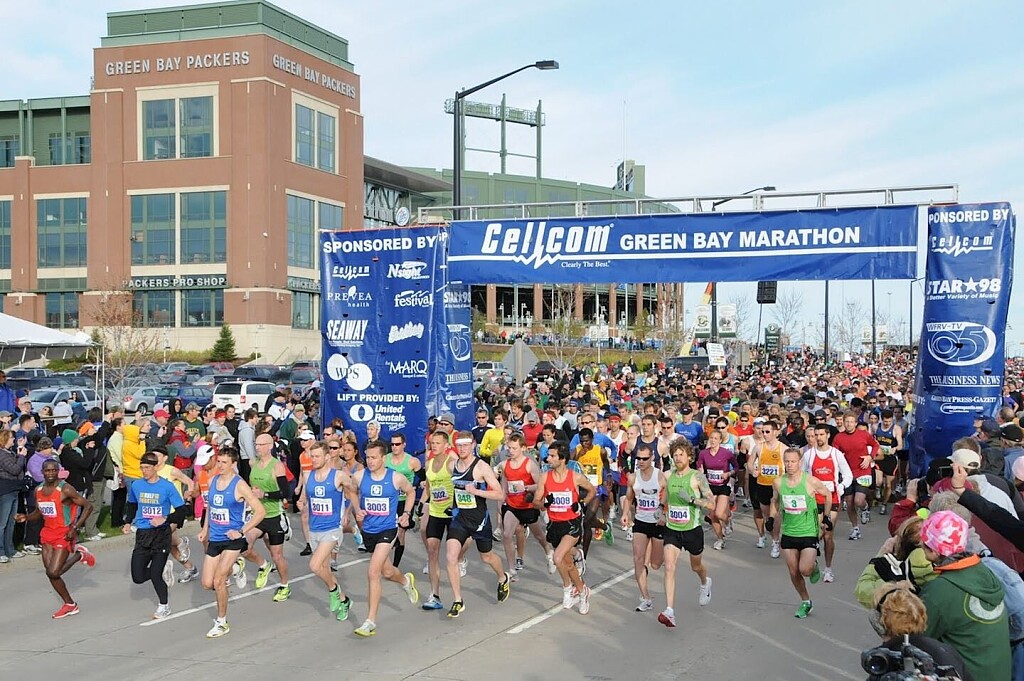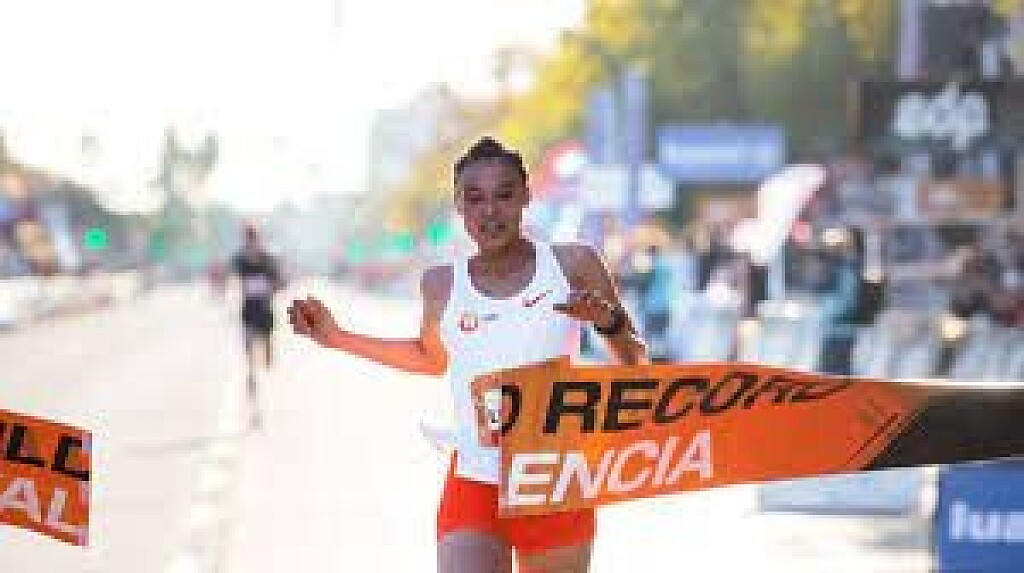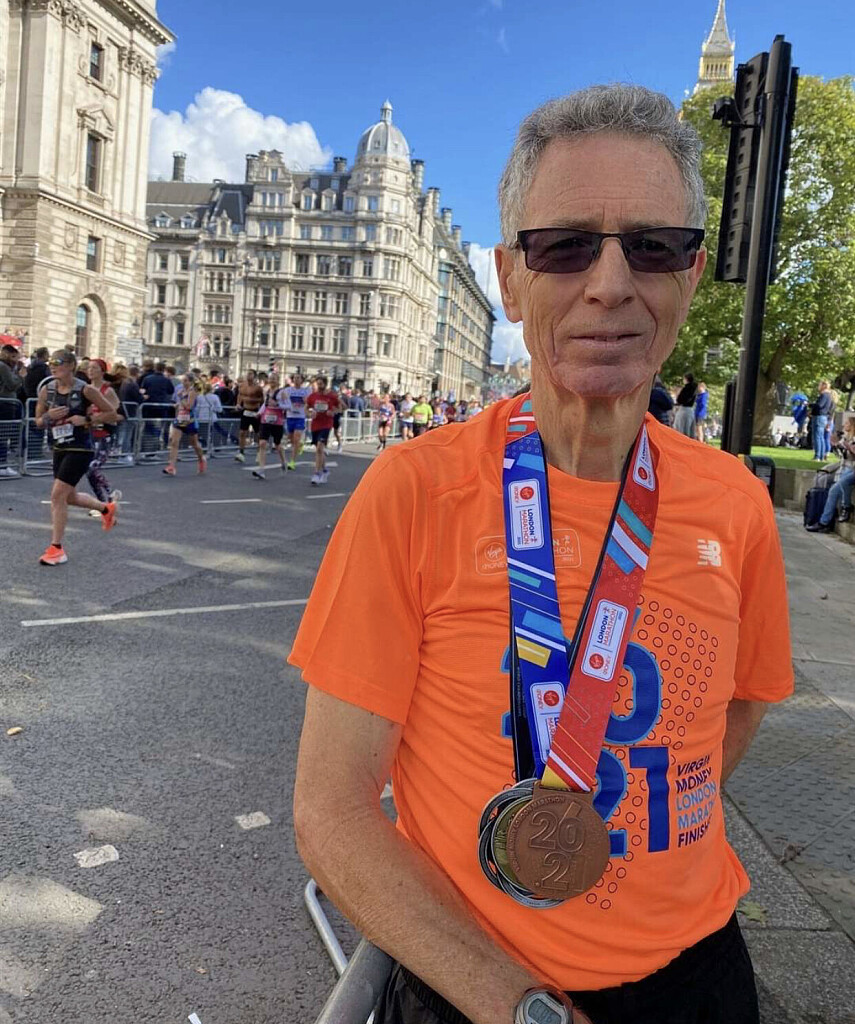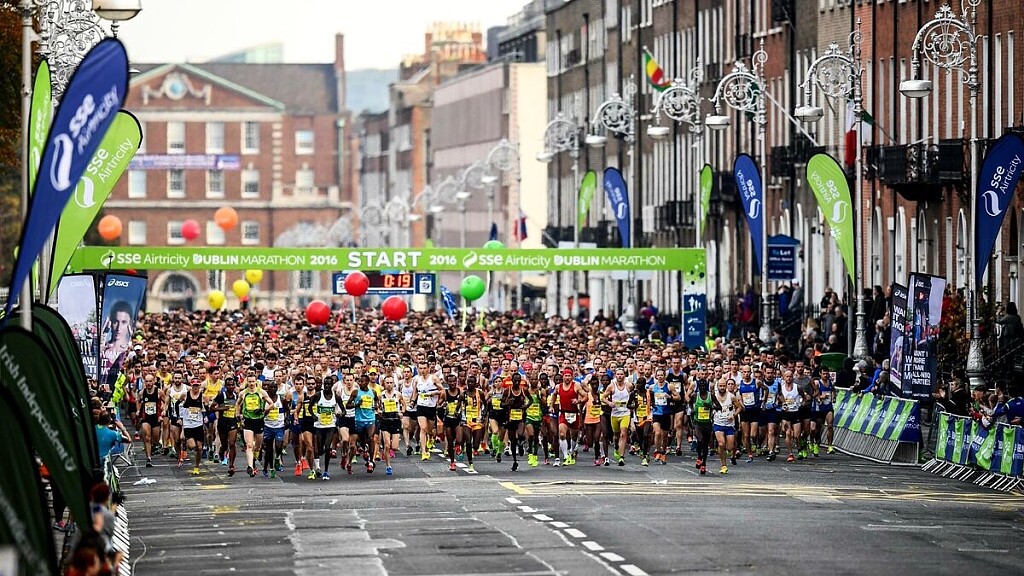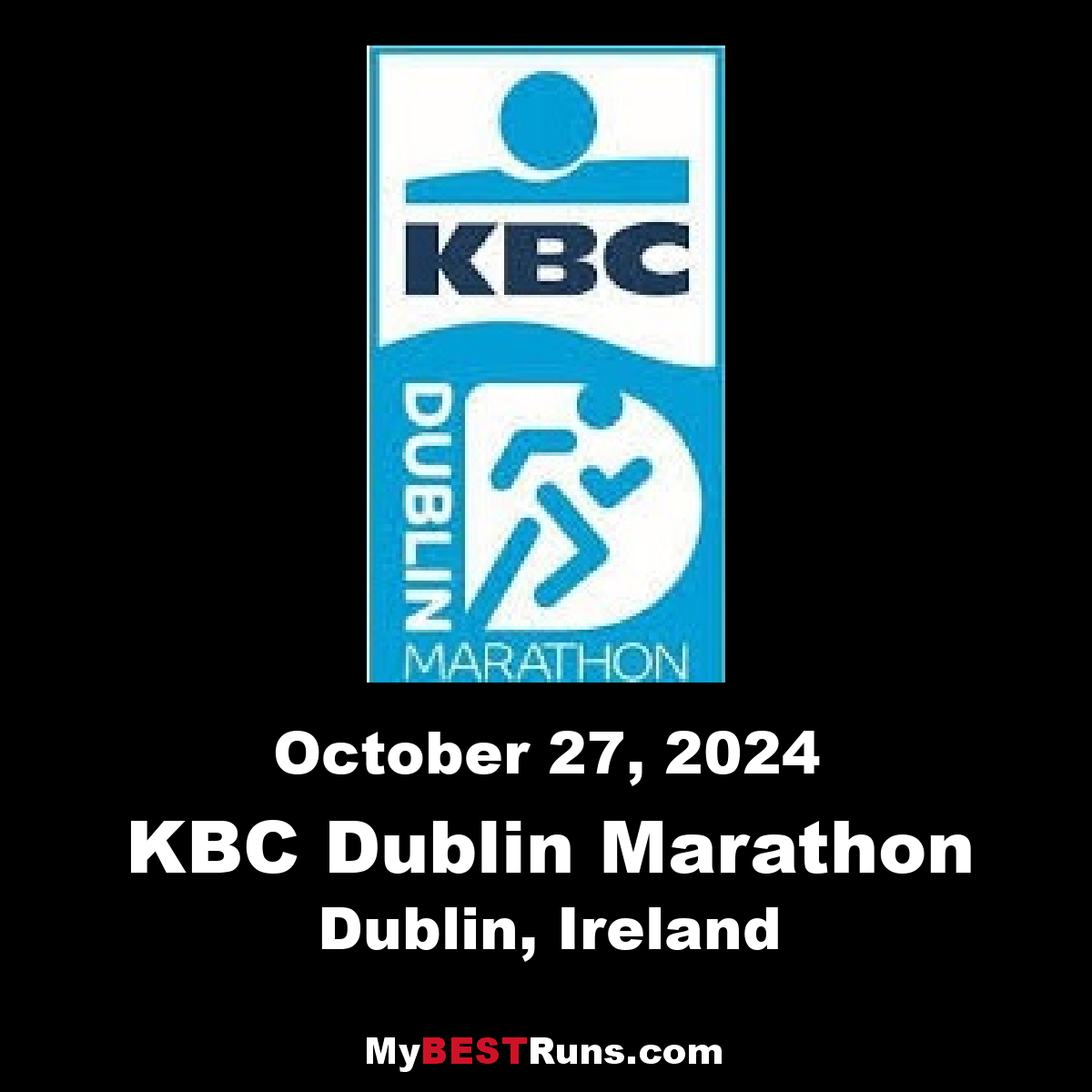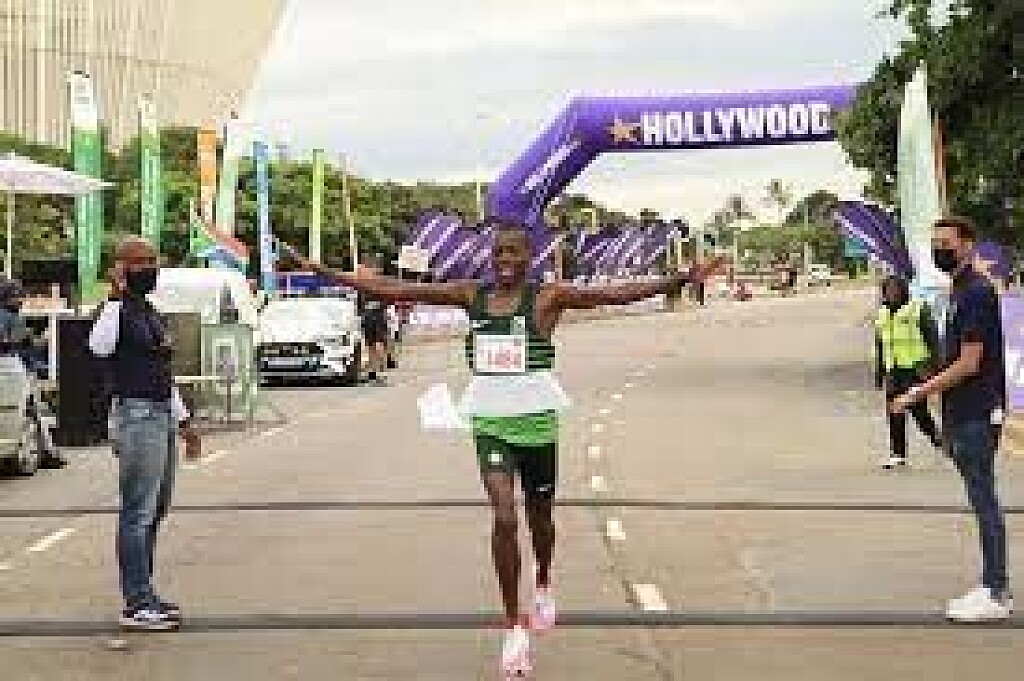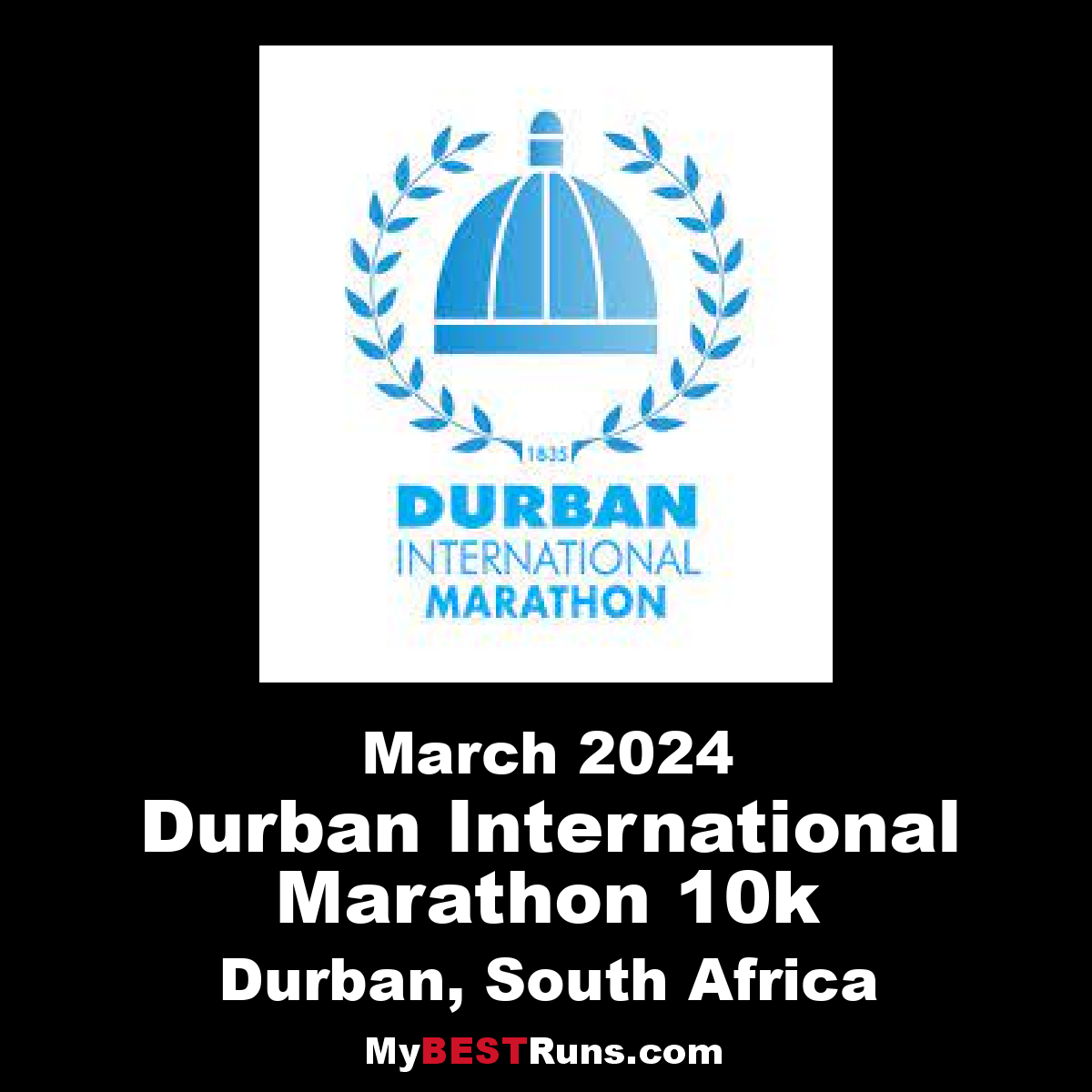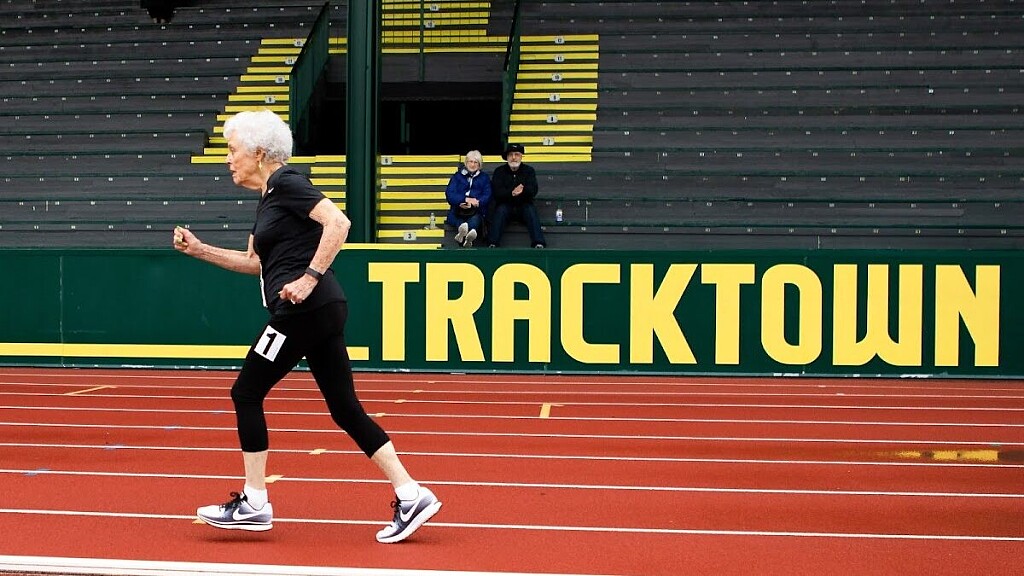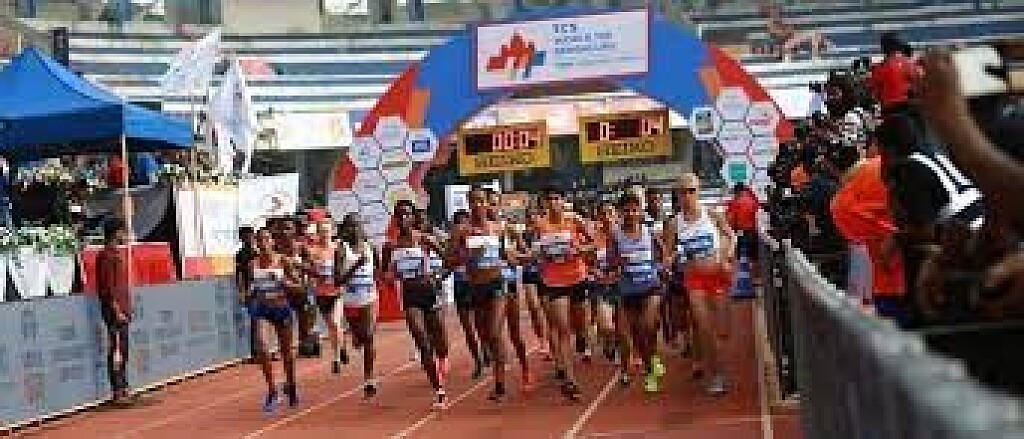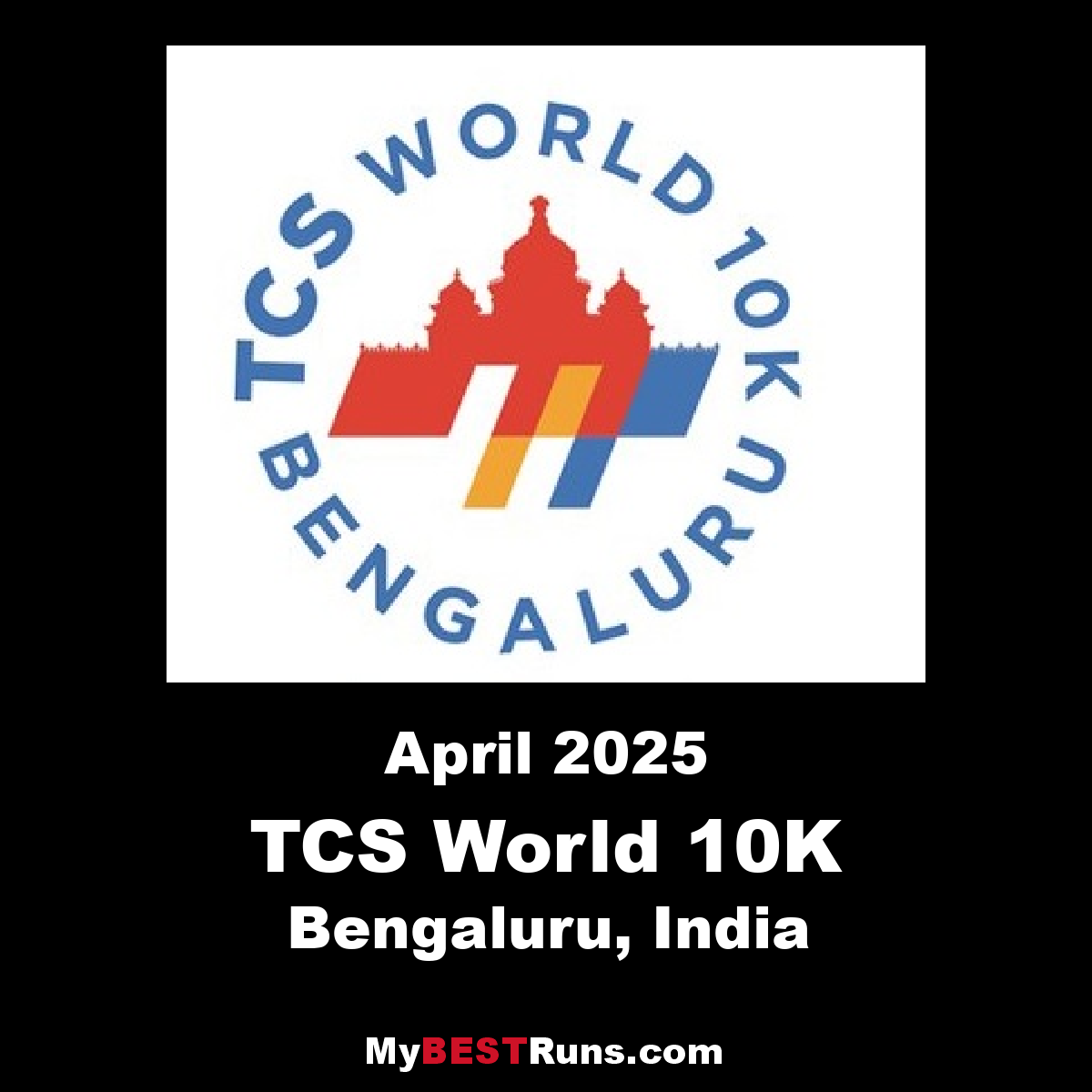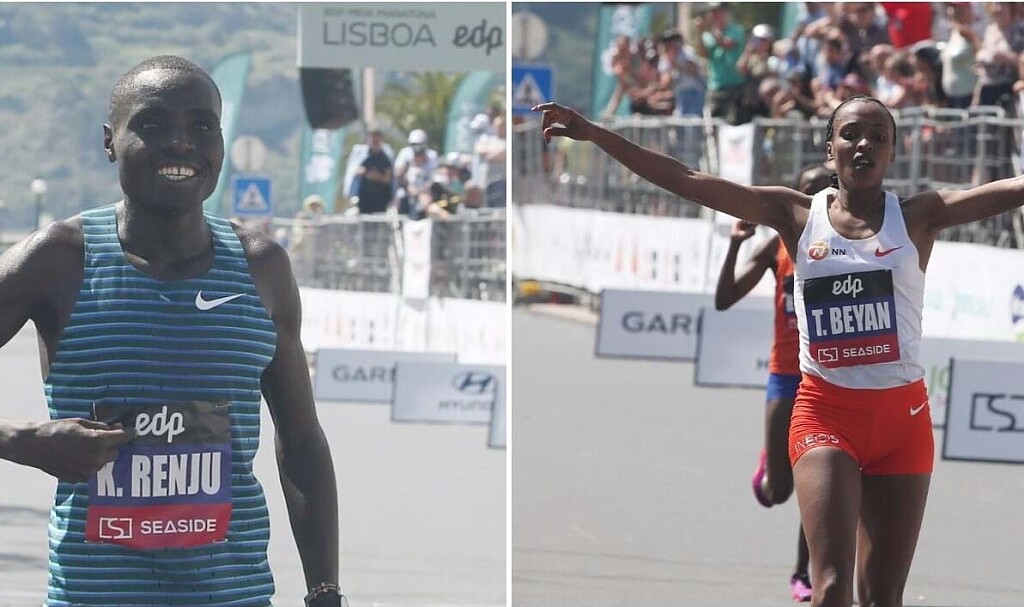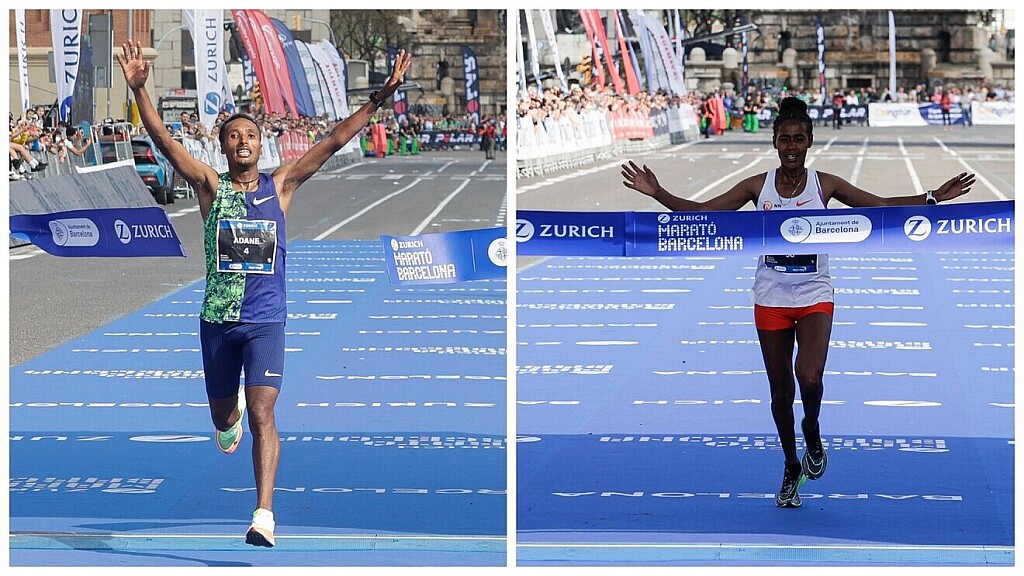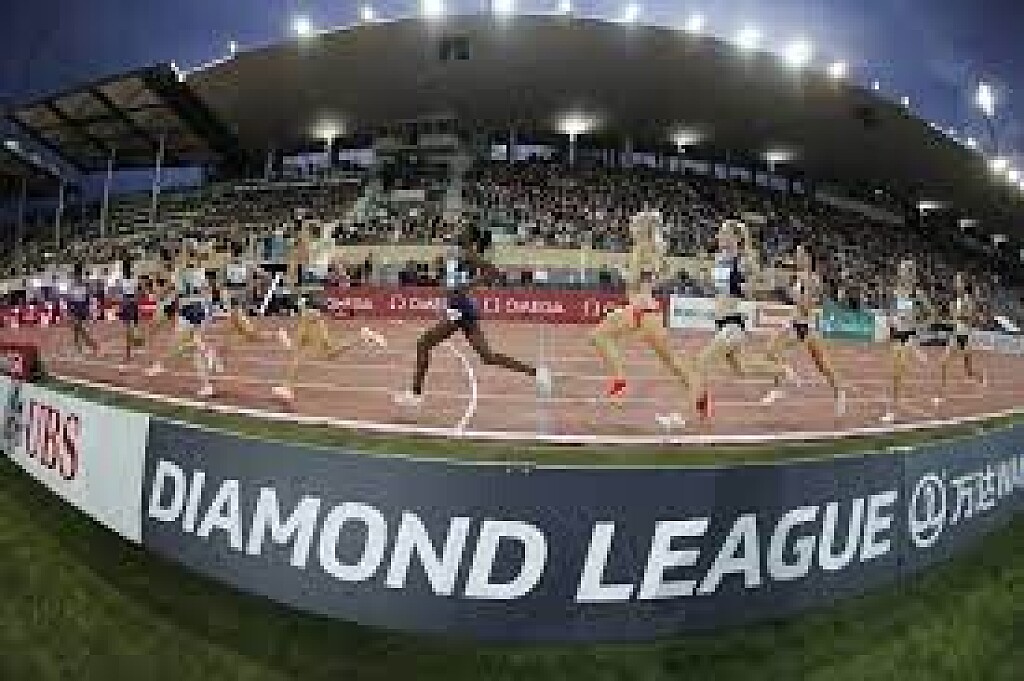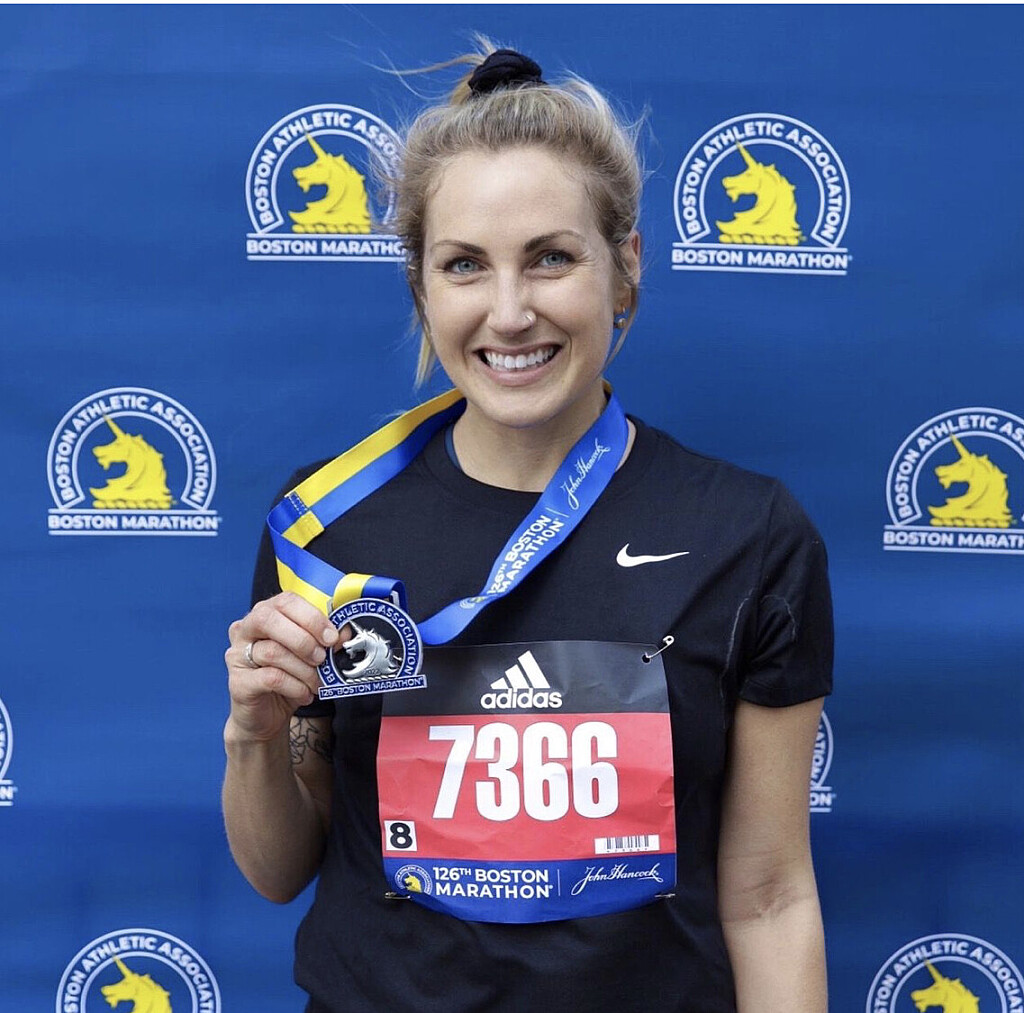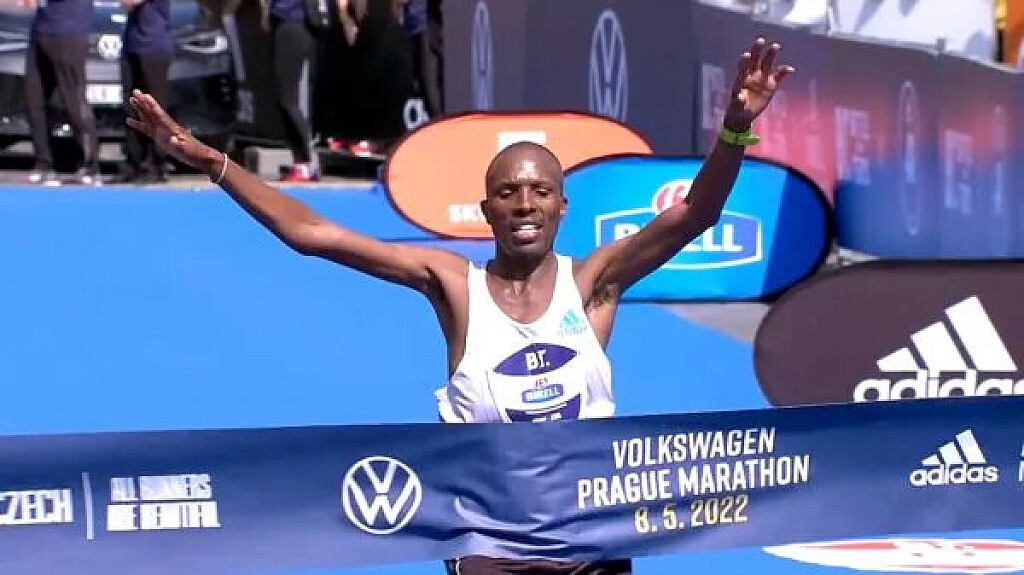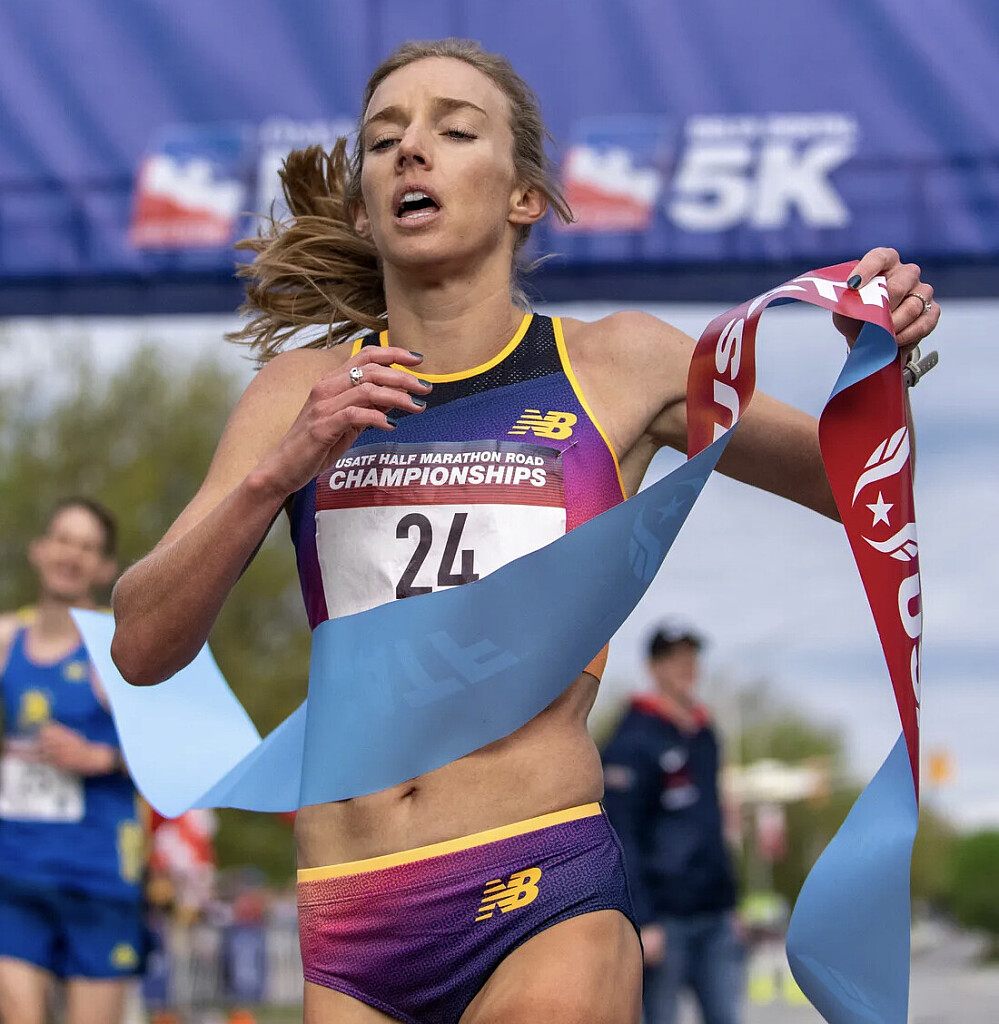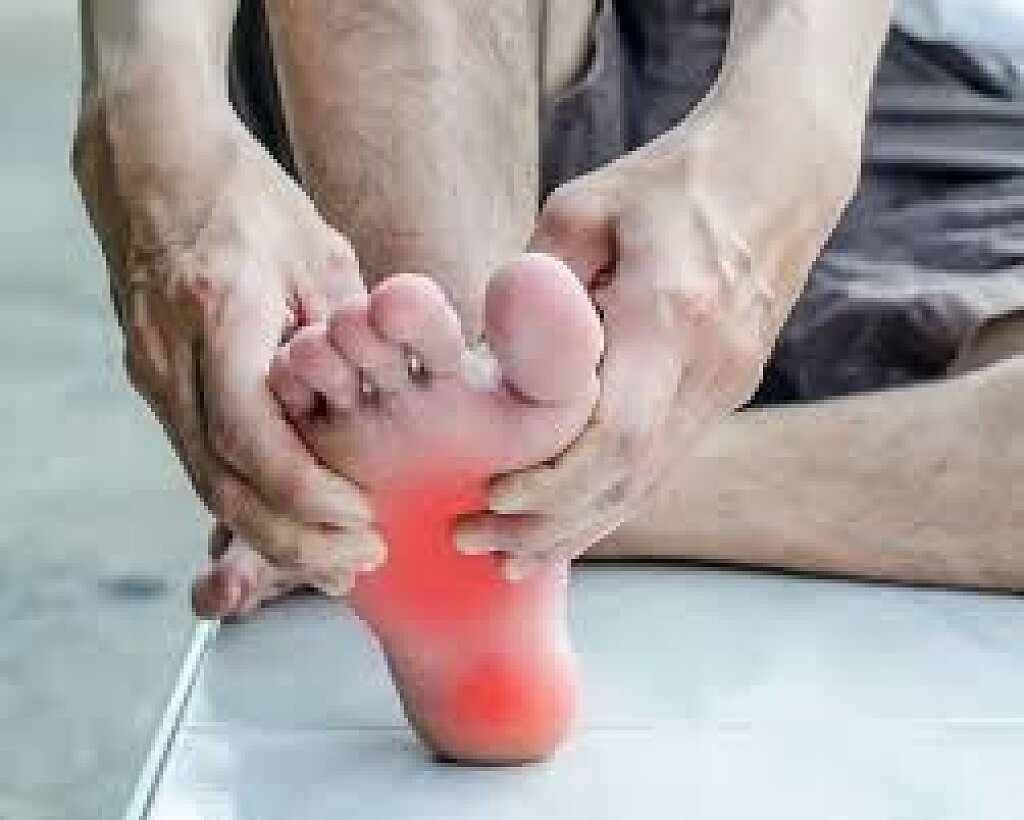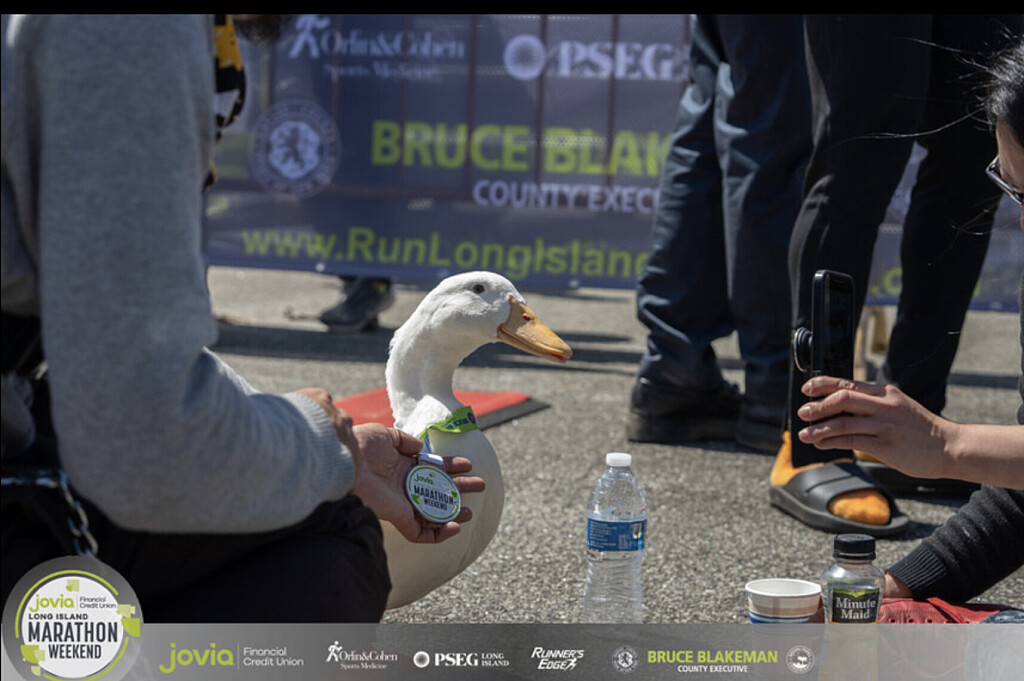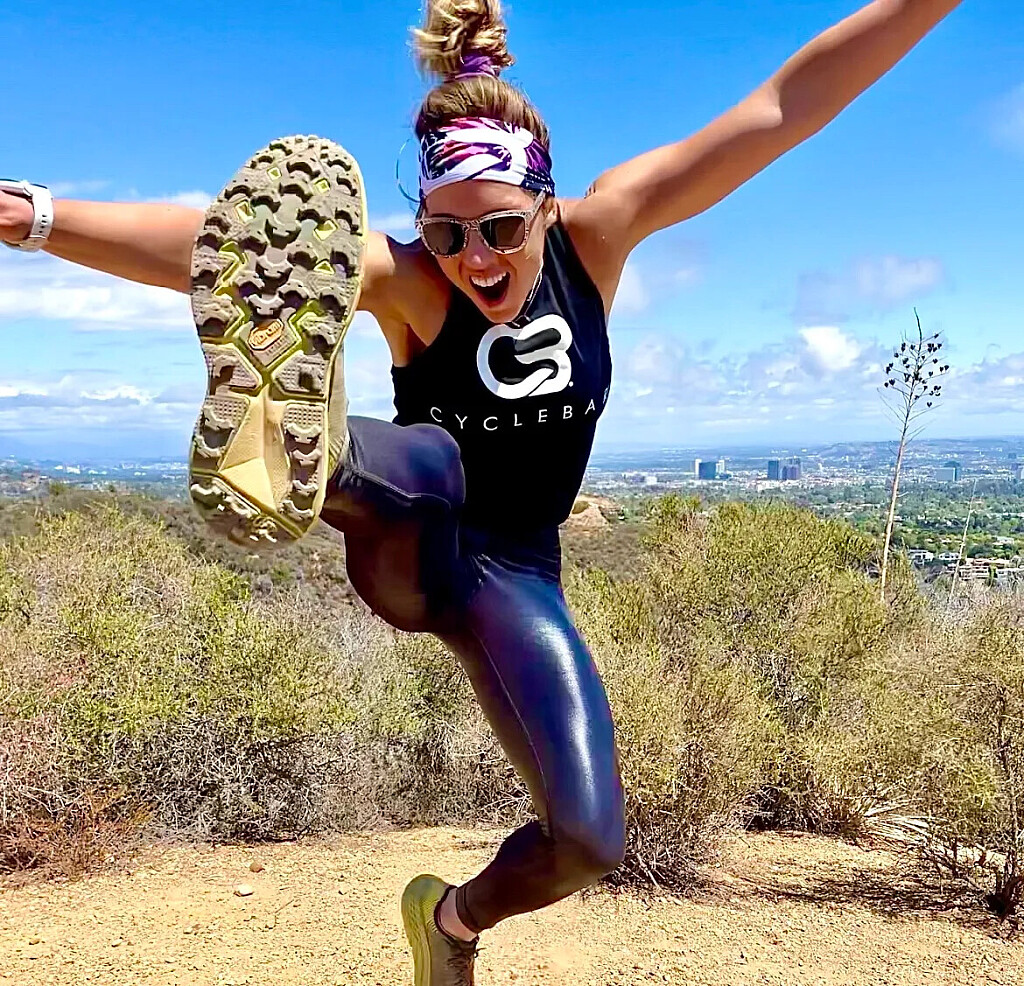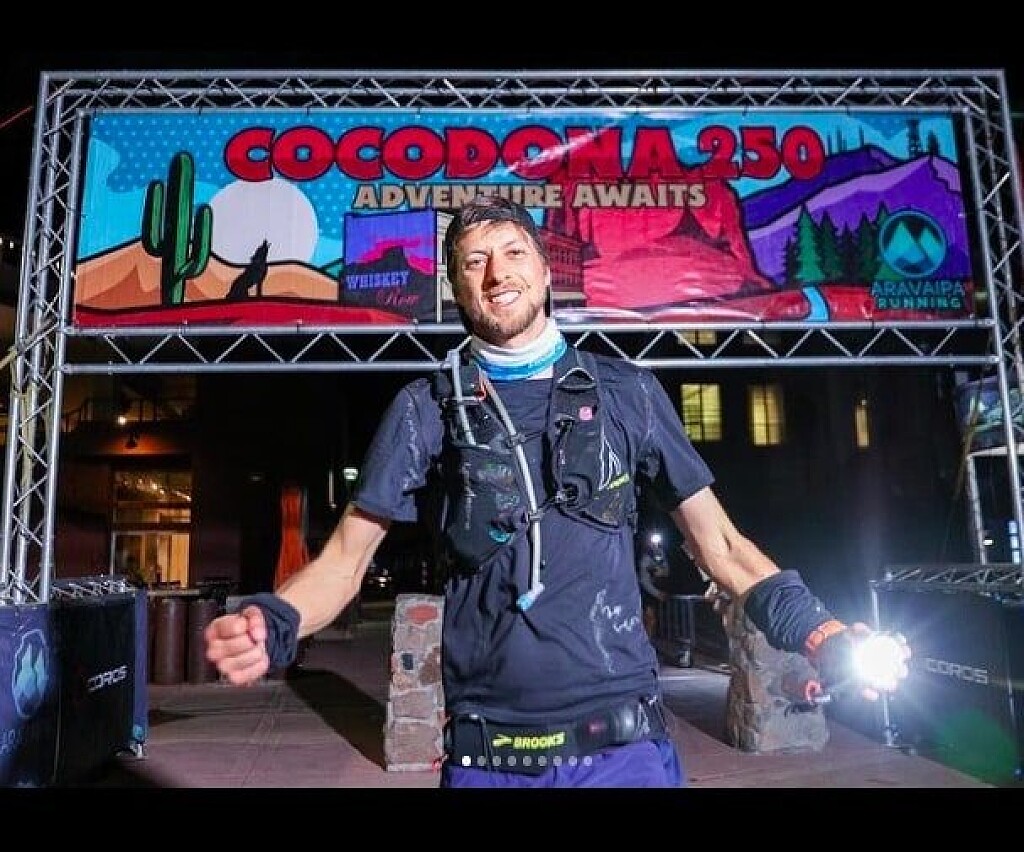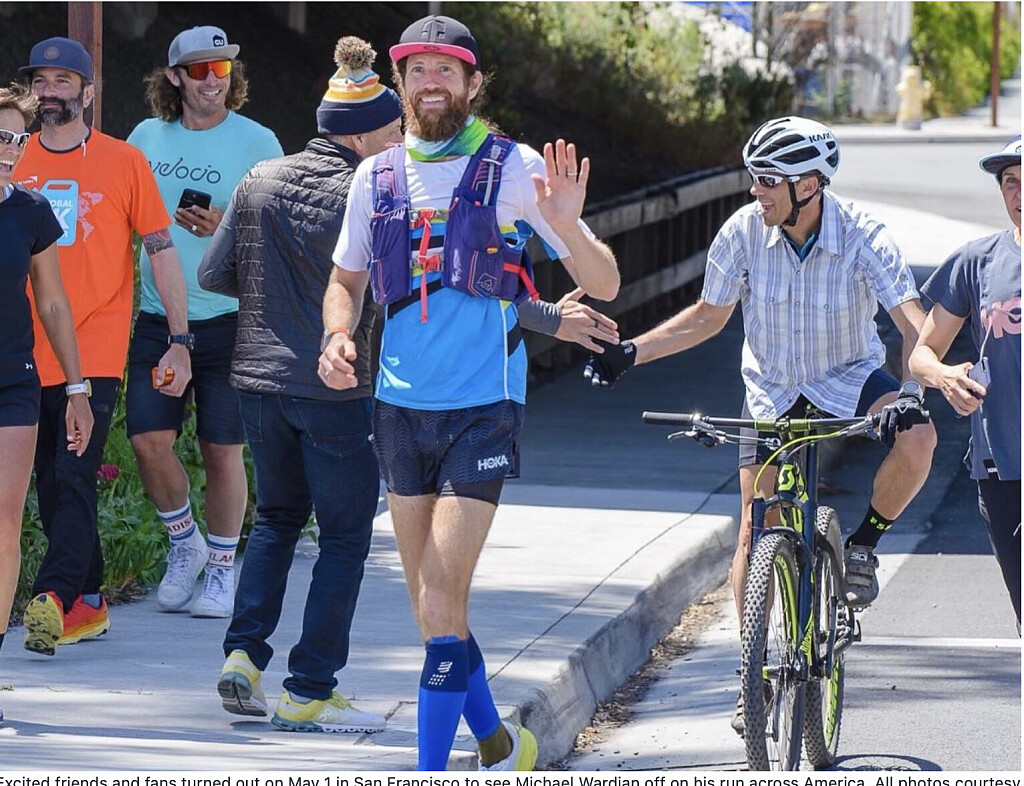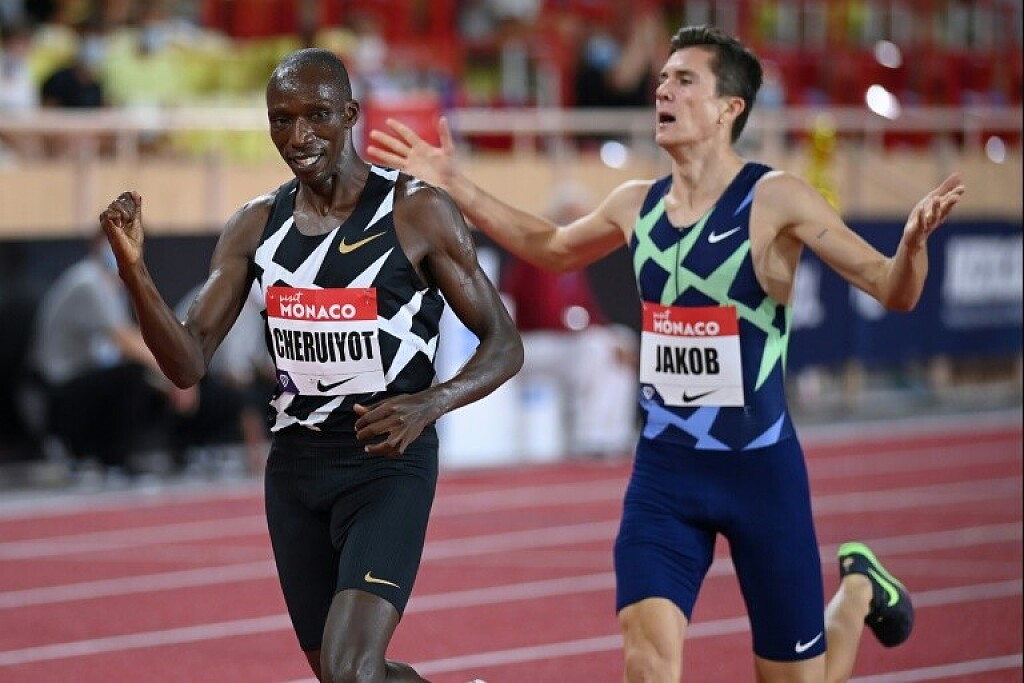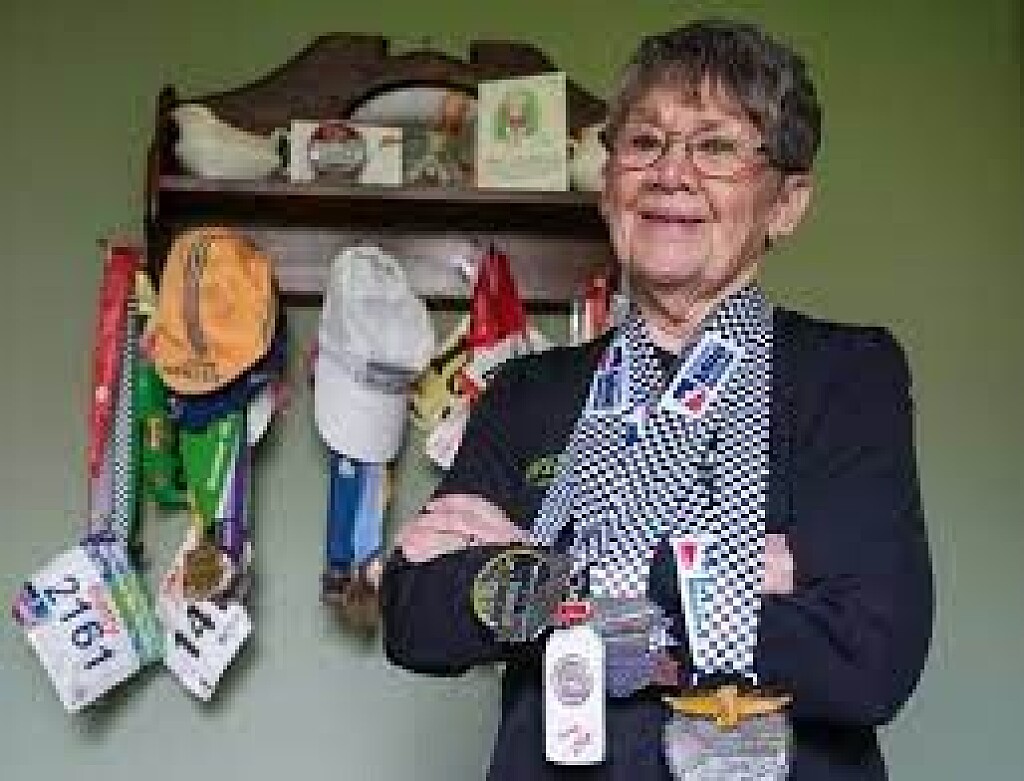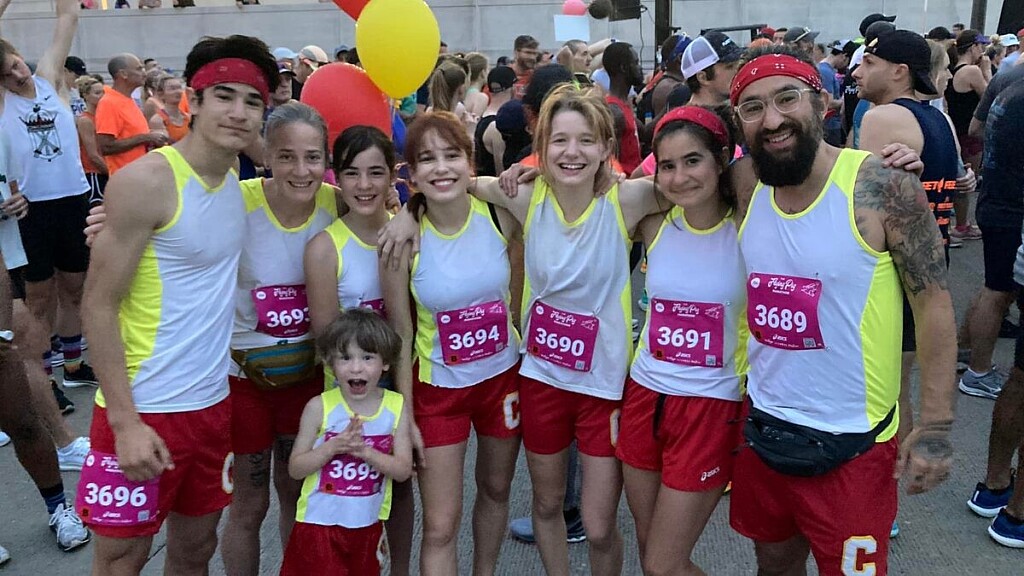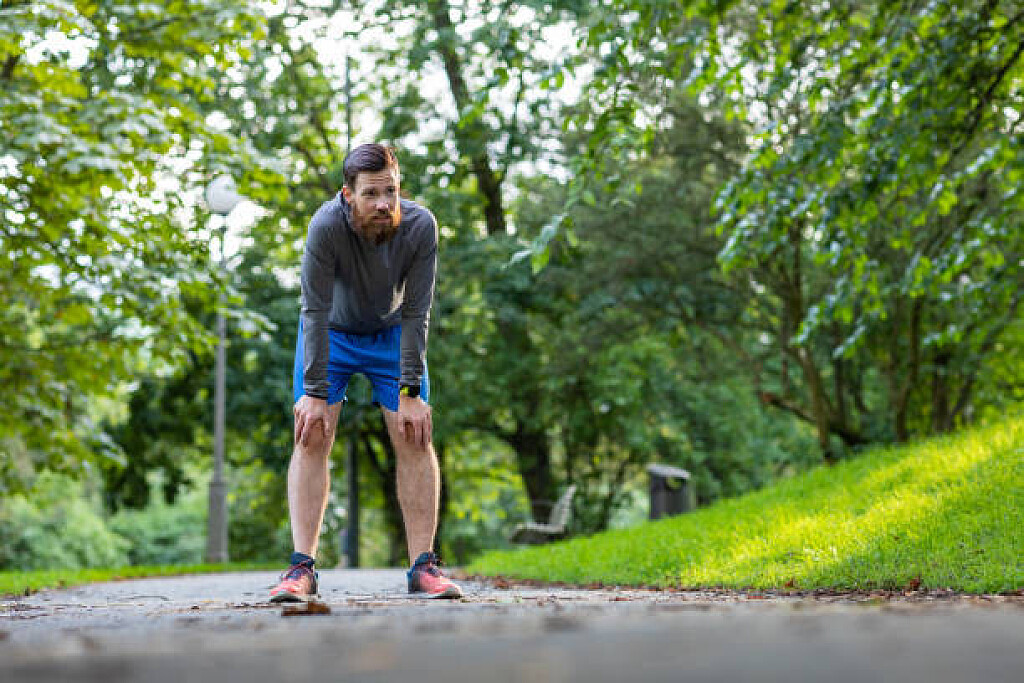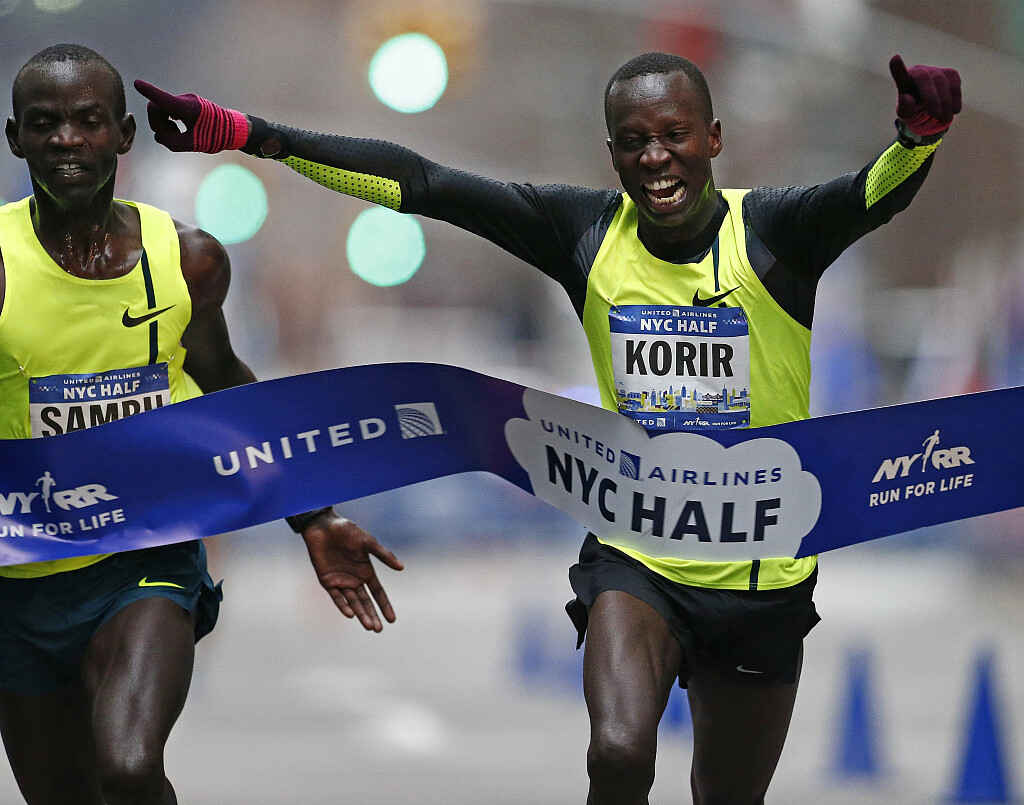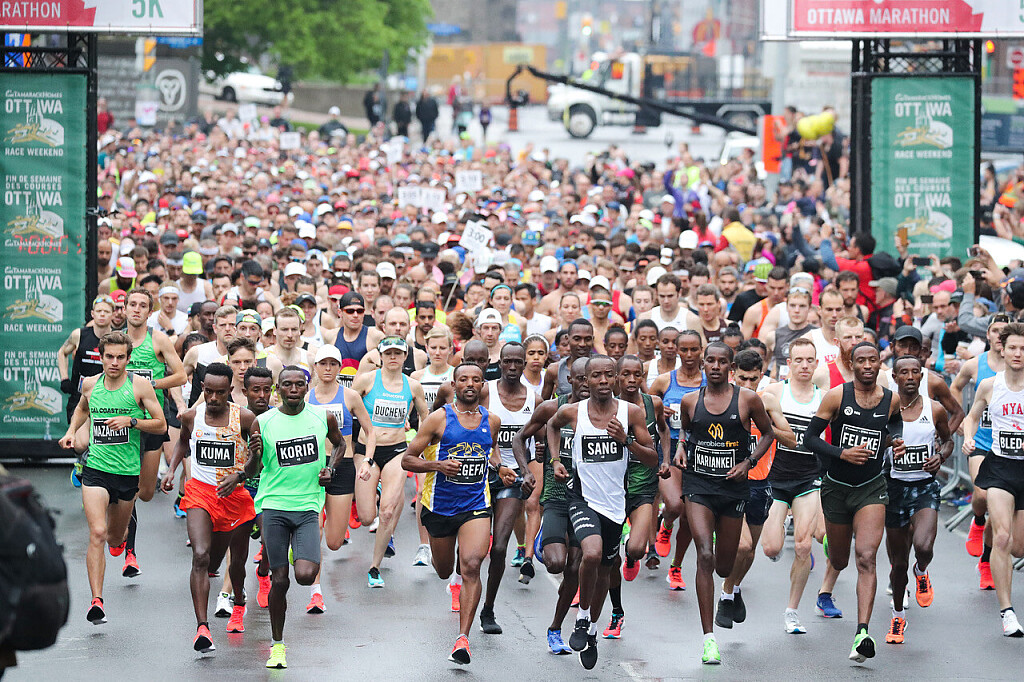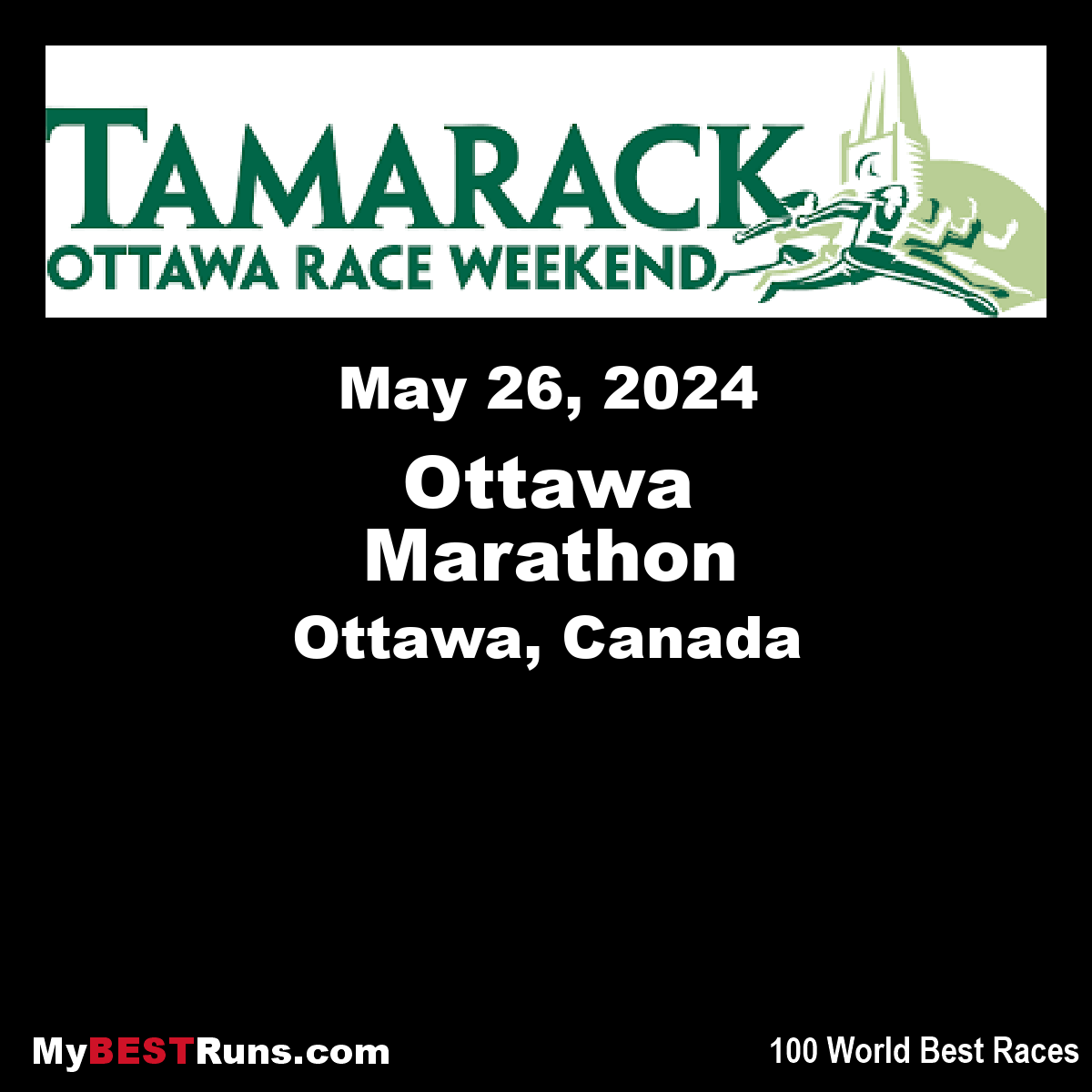Running News Daily
Running News Daily is edited by Bob Anderson in Mountain View, California USA and team in Thika Kenya, La Piedad Mexico, Bend Oregon, Chandler Arizona and Monforte da Beira Portugal. Send your news items to bob@mybestruns.com Advertising opportunities available. Over one million readers and growing. Train the Kenyan Way at KATA Running Retreat Kenya. (Kenyan Athletics Training Academy) in Thika Kenya. Opening in june 2024 KATA Running retreat Portugal. Learn more about Bob Anderson, MBR publisher and KATA director/owner, take a look at A Long Run the movie covering Bob's 50 race challenge.
Index to Daily Posts · Sign Up For Updates · Run The World Feed
Photos of the best costumes at San Francisco's Bay to Breakers race
San Francisco runs at a different speed than other cities. It also usually runs in costumes.Nearly every year since 1912, the city has celebrated Bay to Breakers, a 12-kilometer run that begins at Howard and Main streets and concludes at Ocean Beach.
But like most San Francisco traditions, there's a whimsical element involved, with the actual run taking a backseat to antics and partying along the route and a fashion show of costumes. Although the race does award some prizes, Bay to Breakers is more about the spirit than the finish times.
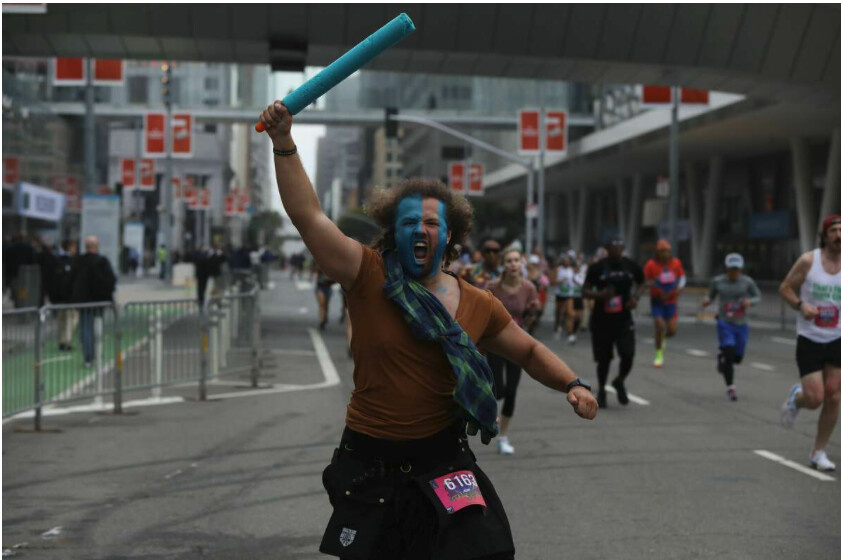
Although seemingly all fun and games, this year's race was mired by a few surprising controversies. The chair of Capstone Event Group, which organizes the race, gave money to divisive political candidates. And initially the organizers refused to give prizes to non-binary racers, a policy which was recanted after widespread blow back.
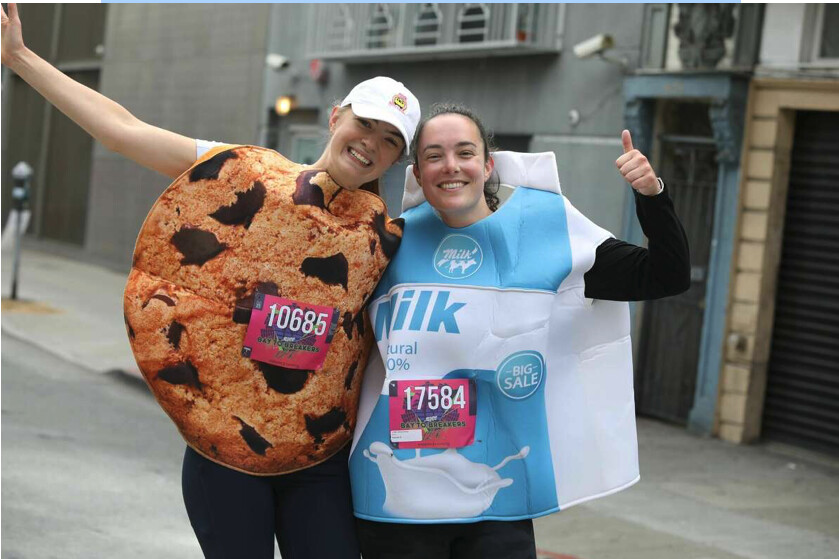
Regardless of those issues, the event was back in full force after a two year absence, with thousands of runners enjoying the cool, foggy weather.
(05/15/2022) ⚡AMP
Zappos Running Bay to Breakers
San Francisco's Zappos Running Bay to Breakers is an annual footraceand has run for over 100 year as a staple to the City by the Bay. With a starting point near the San Francisco Bay, a few blocks from The Embarcadero, the 12K race runs west through the city and finishes at the Great Highway where breakers crash onto the...
more...This Mom Helps New Parents Return to Running After Pregnancy
Colette Berry wasn't prepared for postpartum running. So she made it her mission to help other women avoid her complications.
Just six weeks after giving birth to her daughter, Delphine, Berry set out on a three-mile run. But her core wasn’t strong enough to control her bladder, and her pelvic floor was unprepared for the impact that running demands. Nevertheless, she followed the vague advice of her OB-GYN and continued to moderately jog after those fateful first miles. “I made a bad situation worse,” she says.
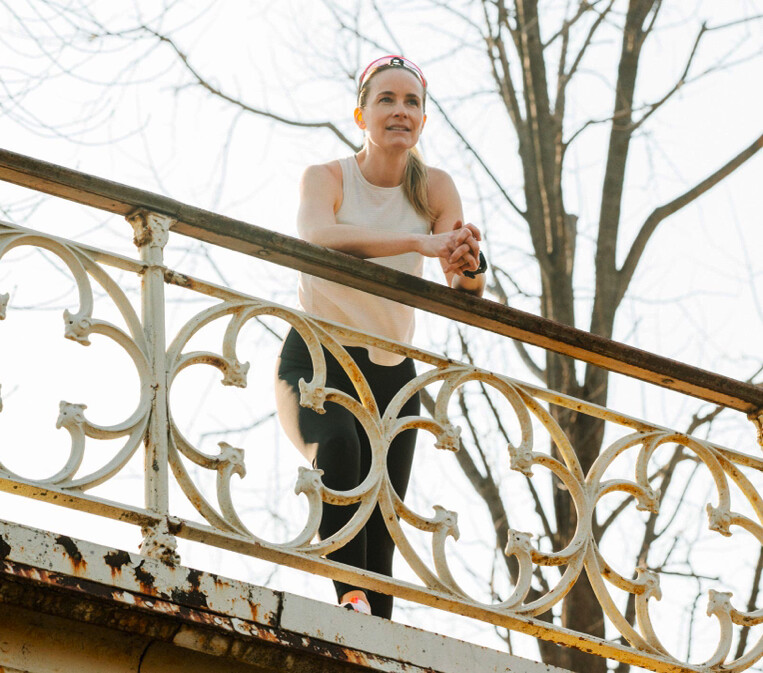
It was the lowest point in a life full of running highs. She fell in love with the sport in college at American University, then moved to Europe during her senior year and hit the European marathon circuit after graduating, running Venice and Amsterdam, and earning a 3:37 PR in Berlin. In 2010, while living in Switzerland, Berry joined the Geneva Runners, an international expat running club, where she met her husband, Edmund.
Not long after, she took up triathlon and consistently progressed from sprint distance, to Olympic distance, to completing an Ironman at Lake Placid in 2015 after moving back to the U.S., one month before becoming pregnant with Delphine.
While Berry took some time off after giving birth, she felt like her doctors didn’t give her clear instructions for returning to running. “I’m pretty intense about my sport,” she told them, but they didn’t understand how seriously she trained. After a year of running in frustration and discomfort, Berry started seeing a pelvic health physical therapist who helped her retrain her pelvic floor muscles, which undergo intense strain during pregnancy and delivery.
During the process, Berry became interested in the science behind postpartum exercise and realized that if she had been more informed from the start, she might have avoided her complications. So in 2020, she became a certified pre- and post-natal personal trainer and now guides clients through three stages—prenatal, labor, and parenthood—and gives them the tools to return to exercise safely, including these three strategies.
Train for pregnancy like an athlete
During pregnancy, you should strength train for the surprisingly physical movement patterns that you’ll face, like bathing a baby. “First, master the fundamentals with bodyweight squats, deadlifts, and lunges,” she says. “Then, add weights and combine them into compound movements.” New parents spend a lot of time on the ground, so practice standing up with an offset weight. Make sure to hinge at the hips, and avoid rounding your back by keeping your core engaged.
Don’t give up on yourself
If you’re a runner who’s recently given birth, you don’t have to endure months of misery on the road back to exercise. “A lot of women think they have to live with certain conditions—like peeing when they sneeze or run, or pressure in their pelvic floor—but they don’t have to,” Berry says. “Pelvic dysfunction is common, but not normal.” Seek out a physical therapist who specializes in women’s health or pelvic health if you’re experiencing postpartum complications. OB-GYNs might not be trained to remedy these issues, but they can help you find a referral.
Find (or form) a like-minded community
When Berry resumed running after pregnancy, she missed the social aspect of the sport. “I wasn’t going to find some track club and run with my jogging stroller at 10 a.m.,” she says. “So I created this group called Central Park Stroller Runners. Everyone was a new parent. It became a weekly thing, and I met some of my closest friends through that group.”
Berry’s running crew found a way to coexist amongst the antsy cyclists and ambling tourists in Central Park. They ran through the winter months, with their children nestled in sleeping bags and hats, and received some disapproving stares when their potty-training kids ventured behind the trees to relieve themselves. “If you’re a parent in New York, I promise that your child has peed in Central Park,” she says.
(05/15/2022) ⚡AMPby Runner’s World
Why You Should Be Wearing Sunglasses On Every. Single. Run.
Your eyes, just like your skin, need UV protection. Here’s what to look for in glasses to keep you covered.
Sunglasses are such a staple in my running kit that if I forget a pair, I have no choice but to head back home and grab them, same as if I left headphones behind. I think I look 100 times faster in a really cool pair of shades (and I love that they hide the pain in my face at mile 23 of a marathon), but I also squint less, stress less about getting things in my eyes, and I see better, especially in bright sunlight.

To anyone who asks: “How can you run with sunglasses on?” My answer is how can you not? If you’re wearing the right pair, they won’t slip, they won’t bounce, and they’ll protect your eyes from all kinds of damage that you might not have to worry about in the moment, but certainly should be thinking about in the long run (pun intended!).
Need more convincing? Learn about the damage of not wearing sunglasses, what you need to look for in sunglasses to make sure you’re getting the right UV eye protection, and what brands are doing to keep your vision safe.
Why You Need UV Eye Protection on Every Run
You know how bad sun exposure is for your skin, right? That’s why you slather on sunscreen every time you head outside. Well, too much sun can be equally damaging to your eyes.
The chief role of sunglasses is ultraviolet light protection. “The majority of UV light is absorbed by the cornea, but with significant amounts of exposure, that radiation will eventually get through the cornea and cause damage to the inner structures of the eye,” said James Dello Russo, an optometrist at the New Jersey Eye Care Center in Bergenfield and Passaic, New York.
Runners who don’t wear UV eye protection can eventually develop growths on the clear covering over the white part of the eye called pinguecula and pterygium, says Yuna Rapoport, M.D., an ophthalmologist at Manhattan Eye in New York City. A pinguecula is a yellowish, raised deposit of protein, fat, or calcium; a pterygium is a growth of fleshy tissue that may start as a pinguecula. A pterygium can affect your vision, and may result in surgery.
If you’re running in the snow or near water, you can also develop a form of photokeratitis, a painful, temporary eye condition caused by exposure to UV reflections off of snow, ice, sand, or water. (Translation: Wearing UV eye protection isn’t just a necessity in the bright lights of summer, but straight through winter too.)
“The two biggest concerns, though, are cataracts and age-related macular degeneration,” says Dello Russo. You shouldn’t have to worry about these issues until your 70s, but “people who are out in the elements all the time are at risk of developing these sight-debilitating issues at a younger age, which we would never want,” he explains.
PSA: Don’t brush this off and say, ‘oh, I only run a few miles at a time, I’ll be fine.’ “It’s exactly like cumulative sun exposure to your skin,” says Rapoport. “It all adds up.”
Then there’s the physical protection element. Sunglasses act as a kind of environmental windsheld for your eyes, says Dello Russo: “With enough exposure to UV light, runners will get basal cell carcinomas—non-metastatic tumors on the skin.” One super common spot: The eyelids.
Plus, “the cornea—the clear, protective outer layer of your eye—is really susceptible to even the tiniest particles getting in,” explains Rapoport. When you’re running on dusty trails or the wind is whipping debris across the road, “the slightest piece of dust or dirt, a millimeter or even less, can cause an erosion which can lead to an eye infection,” she says. Dirt, dust, and allergens in the air can also cause dry, itchy eyes—which can take the focus off your run and slow you down.
The Most Important Features in Sunglasses
Not surprisingly, the number one selling point in a pair of sunglasses is their UV protection. “You want to look for lenses that block 100 percent of UV light,” says Dello Russo. “The label should say ‘UV absorption up to 400 nanomenters,’ or UV 400.”
There are two types of UV light to be concerned about: UVA, which is associated with skin aging, and UVB, which is associated with skin burning. UV 400-protected sunglasses block both.
FYI: A darker lens tint doesn’t necessarily offer better protection. “How dark your sunglasses are is a matter of personal preference,” says Dello Russo. Certain tints can actually improve contrast in specific conditions, but the color or shade doesn’t have any effect on UV protection—you can even find clear lenses with UV 400.
However dark you prefer your sunglasses, the lenses should be polarized. Polarization is a coating on top of the lens that blocks the reflection of light off of surfaces. What it does is “block that level of glare you’re going to be receiving from different angles so you’re more comfortable,” says Rapoport.
Finally, embrace the whole “bigger is better” approach. “Runners are really going to want to actually look for shield or wrap-style sunglasses,” says Dello Russo. “Most of them are formed to the face and wrap around to the side, typically with oversized lenses, which are not only going to keep the UV out of the eyes, but keep it off the lids and skin.”
As with any piece of gear, though, comfort is key, said Rapoport. “If they pinch your nose or squeeze the temple area, that can cause headaches,” she says. And sunglasses that slide down can be an annoying distraction. Opt for a pair that comes with adjustable nose pads and you can customize the fit.
The Best Sunglasses for Running
We’ve come a long way since you could get away with running in sunglasses you picked up at a gas station.
Take Oakley’s latest innovation in running sunglasses for example, the RE:SUBZERO, which features the brand’s new PhysioMorphic Geometry. Lenses typically curve around a vertical axis (a.k.a. cylindrical lenses) or both vertically and horizontally (a.k.a. spherical lenses), but these new lenses combine both approaches in what’s called a toric or toroid lens, explains Nick Garfias, the vice president of design at Oakley. “It has more of a football shape, curving in two directions in order to become a shield over both your eyes,” he says. “That makes your optic view through that lens way better.”
The frameless design of the RE:SUBZERO—with an extended wrap and rigidity in key areas that mimic the structural properties of a frame—also enhances your field of vision, says Garfias. (And offers more of that eye and skin protection that Dello Russo mentions.)
This shield style has become ubiquitous in the performance sunglass world, not just in Oakley’s designs (see also: the Oakley Sutro), but in Roka’s Matador Air, Smith’s Flywheel, and Rapha’s Pro Team Frameless Glasses—all of which provide oversized protection so you can run with unobstructed vision. (FYI: Many, bigger cycling glasses can double as running glasses.)
Oakley’s RE:SUBZERO—along with many of the brand’s other performance sunglasses—are outfitted with the brand’s Prizm Lens Technology, which is designed to enhance color and contrast so you can see more detail. District Vision also focuses on lens color, not just to provide clarity on the run, but to reduce strain on the eye caused by physical exertion, says co-founder Tom Daly.
“We know that different color curves and different lens tints relax the mind,” Daly explains. “If you’re looking at something through a blue lens compared to a red lens, it sends different signals to the brain and it affects your central nervous system in different ways.” (For example, people wearing blue-tinted lenses demonstrated better reaction times in a study by ZEISS, a German manufacturer of optical systems; red was determined to have more of an activating effect.)
But the easiest way to reduce strain on the face is to let less light through the lens, Daly adds. “Traditional maximum sun-blocking lenses let in around 13 to 16 percent of light; we take it much lower, down to 10 or 11 percent,” says Daly. “We block more light because, just like you hold tension in your body, you hold strain in your eyes. You need to be able to relax the muscles around your eyes.”
District Vision’s Black Rose lens blocks 15 to 31 percent of light, which changes depending on the amount of light around you, says Daly. Similarly, Dynafit recently released the Ultra Pro sunglasses, which use photochromic lens glass technology so the lenses adapt in seconds to variable light—making them ideal for trail runners going in and out of trees. 100% and Tifosi also offers photochromic lenses that react to UV rays, along with other brands.
Of course, you don’t need to spend hundreds of dollars on an excellent pair of sunglasses. Goodr has become a staple in the running world with their $25 no-slip, no-bounce, polarized, UV 400 lenses. You won’t get quite the same level of protection and light blockage or color contrast as the higher-end lenses, but you’ll get the essentials at a lower price. (Knockaround sunglasses are similarly priced, and also have UV 400 polarized lenses.)
On May 20, Goodr will also release the WRAP G, which offers a wider field of vision—with no obstructions or blind spots—than the brand's standard wayfarer designs, more in line with the shield styles doctors recommend for running. These shades will also come with a removable nose-piece and two sizing options for a snug fit that won’t bounce, and ring up at just $45.
Not every runner needs every single feature in the most expensive lenses, so determine what matters most to you—just make sure any pair you buy has that UV 400 eye protection.
The Bottom Line on Sunglasses and UV Eye Protection While Running
At the end of the day, everyone wants to look good in their sunglasses. And you can do that while protecting your eyes—no matter your budget. The key is just making sure you actually wear your glasses every time you head out for a run, so you can sidestep any vision or other eye issues that can come from too much UV exposure. And remember: When picking out your perfect pair, don’t be afraid to go big.
(05/15/2022) ⚡AMPby Runner’s World
Marathon records in Copenhagen
There are new record holders for both men and women after the 2022 edition of the Copenhagen Marathon.
Berhane Tsegay from Eritrea can call himself the new holder of the record time in the Copenhagen Marathon for men.
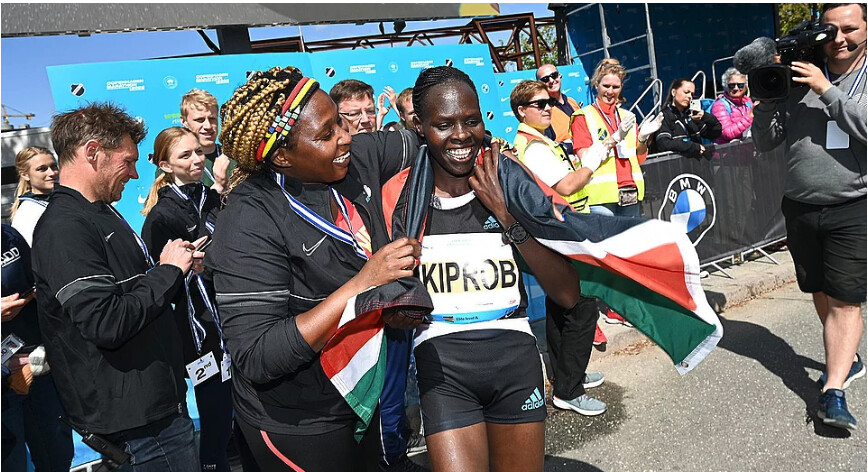
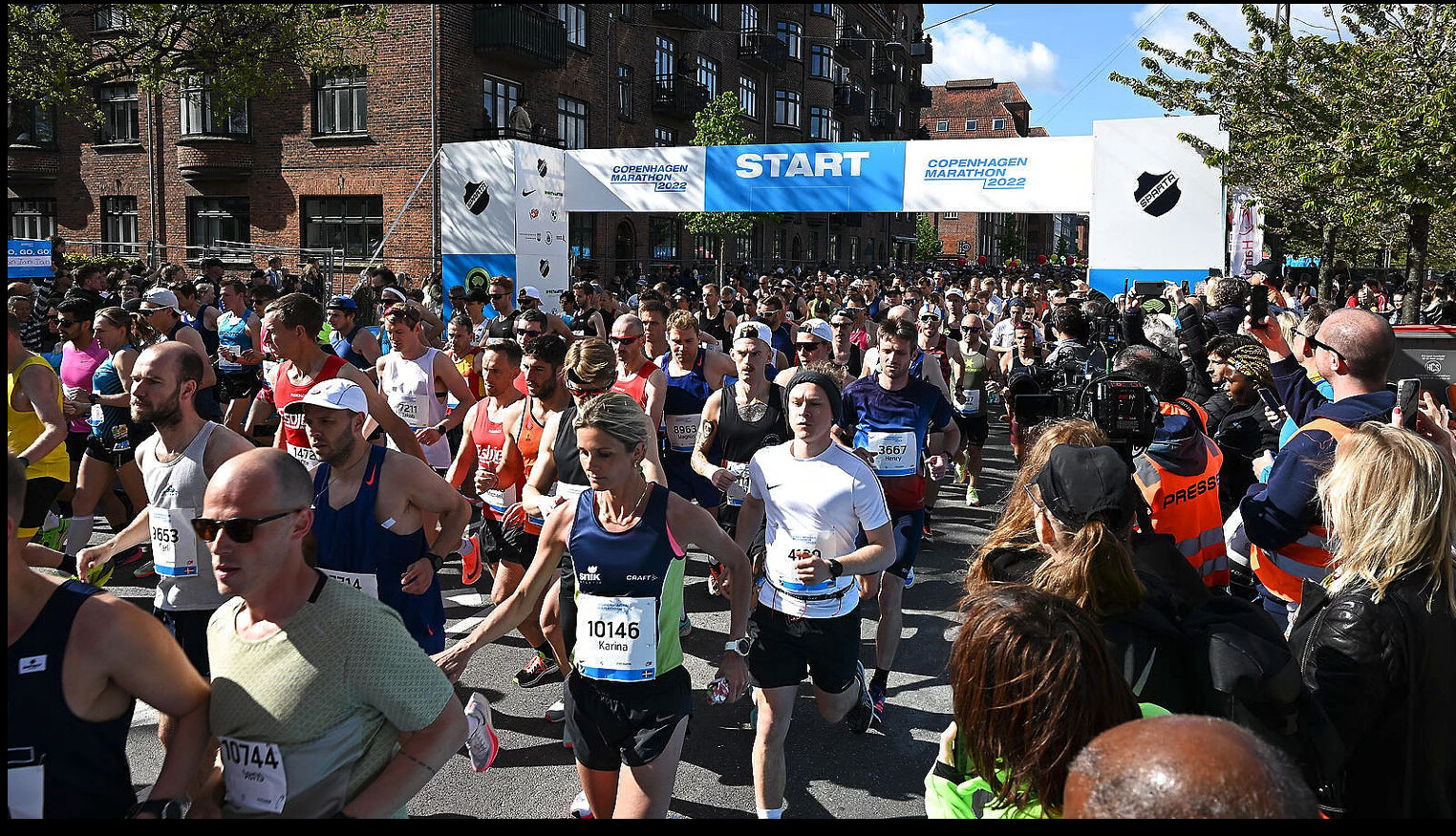
On Sunday morning, he covered the 42,195 kilometers in the streets of Copenhagen in a time of 2 hours, 8 minutes and 21 seconds. When he crossed the finish line at Islands Brygge, he was thus over a minute and a half faster than the previous race record in the Danish capital.
Number two, three, four and five also finished in times that were faster than Jackson Limo's winning time from 2019.
Five minutes cut off the women's record
Also in the women there is a new holder of the race record.
Just over a quarter of an hour after the men's winner had crossed the finish line, Kenyan Hela Kiprob ran over it as the first woman. With a time of 2 hours, 24 minutes and 10 seconds, she cut a full five minutes off the previous record.
Among other things, this was the result of a flat route and good weather conditions.
Although it was not completely windless in the streets of Copenhagen, the many runners could enjoy pleasant conditions. At the start of the race, the temperature was just below 15 degrees, while along the way it managed to rise a few degrees in the almost cloudless capital.
This is the first time in three years that the race was held. In 2020 and 2021, the corona pandemic prevented the race from being implemented.
With four kilometers left of the men's race, six runners were within a few steps, but Tsegay timed his attack perfectly and was able to run solo over the finish line after giving himself time to wave to the spectators on the run.
A total of 11,295 people had signed up for the race, but according to the race's website, only 9026 runners competed.
(05/15/2022) ⚡AMPCopenhagen Marathon
The race is special in many ways But one thing is the course around almost every part of Copenhagen. The course goes to Frederiksberg which is a very beautiful part of the city. Theres a fantastic atmosphere in the city, and a lot of spectators along the route. The course is pretty fast, and the field of elite runners is...
more...Gary Martin goes 3:57.98 (third fastest high schooler ever behind only Alan Webb and Jim Ryun) to win today's Philadelphia Catholic League Championsips
Another day, another milestone for Gary Martin. And this one was a biggie.
The Archbishop Wood High School senior ran a sub-four minute mile Saturday at the Catholic League championships at Cardinal O'Hara.
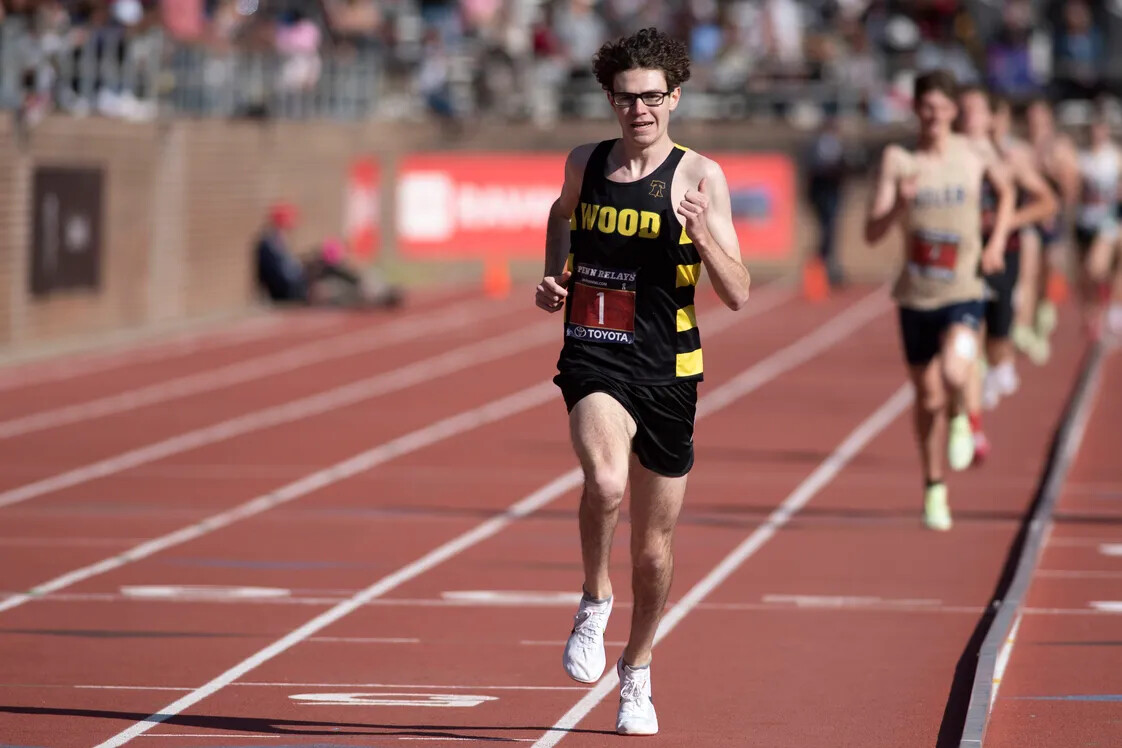
After just missing the milestone at the Penn Relays, he ran Saturday's race at 3:57.98. It was the 20th time a high school runner accomplished the feat, and his time was the sixth fastest ever for a high school student. Overall, he was the 14th runner to break the four-minute mark and it was the fastest time in state history. It was the first in the state to break the 4-minute mark.

Martin has been breaking records all year, beginning in cross country, and continuing during the indoor and outdoor seasons.
Last week Martin broke the state record in the 3,200-meter run, posting a 8:41.57 mark to break Robert DiDonato’s record of 8:44.98 set at this meet last year.
The University of Virginia signee will have more chances to smash records at the state meet.
The Archbishop Wood senior has been on a quest to become the first Pennsylvania high school athlete ever to run a sub-four-minute mile.
Running with a purpose and leading from the start, Martin made history with a sizzling time of 3:57.98.
Martin raised his hands in triumph as he crossed the finish line. His time was the fastest in the county by nearly 10 seconds.
“I’ve had a couple of really good workouts this week and I felt I was in shape to do it,” Martin said. “Looking at the weather, I thought it was going to be a good day and it’s one of my last opportunities to really just run an all-out mile before we get into postseason stuff. I just wanted to go for it, see how I was feeling through two laps. I felt good. I was right on so I kept going.”
Martin found the warm conditions with a light rain to his liking as he took the lead in the first 50 meters and kept his foot on the gas. He ran the first quarter in 59.67 seconds, the second in 58.79, the third in 59.87 and the final in 59.62 to obliterate the meet record of 4:14.08 set by O’Hara’s Steve Hallinan and take his place in history.
“For me, I like to run even splits,” Martin said. “I like to settle into a pace, find a pace I need to run and then hold on throughout, which is what I did today. That’s kind of the goal going in. You just have to stay mentally tough.”
Martin wasn’t done for the day. He also won the 800 in a meet-record time of 1:51.29, to break the mark of 1:52.95 set by O’Hara’s Pat Nash in 2000. And Martin anchored Wood’s 4 x 400-meter relay team to a silver medal by two-tenths of a second to take home the outstanding boys track performer of the meet away.
(05/14/2022) ⚡AMPThe four best workouts for beginner runners
If you’re a beginner runner who’s worked up to running steadily without stopping for at least four or five kilometers, you may be wondering what you should do next. While yes, you can continue doing even-paced runs and try to increase your mileage (and you should!), this may start to get a bit boring.
Adding in one or two workouts into your weekly schedule will make your training more interesting and improve your fitness at the same time. Not sure where to start? These four workouts are great for beginners who are just getting acquainted with speed work.
The fartlek

“Fartlek” is a Swedish term that means speed play. A fartlek workout can be used by runners of all levels, but its loose, fun structure is great for beginners because you don’t need to worry about timing your intervals or your rest. This style of workout allows you to run by feel and learn how to push your body in a low-pressure way.
To do a fartlek workout, start out by running at a steady, even pace for the first five to 10 minutes, as you would for a regular run. Once you’re warmed up, choose a landmark in the distance, and pick up speed until you reach it. Slow back down to an easy jog, and once you’re ready, pick another landmark and go again. Many runners like to use lamp posts, driveways or mailboxes to mark their destinations, but you can choose whatever works for you.

Continue running fast and easy sections for the remainder of the run, leaving five to 10 minutes at the end for a cooldown.
Hills
Hill workouts are a great way to build strength and work on good running form, which is why they’re great for beginners who want to start off on the right foot. They are also easily scalable according to your current running abilities.
To perform a hill workout, find a moderately-steep hill nearby that you can run up for at least one minute. Start out by jogging for five or 10 minutes to warm up, ending at the bottom of the hill. Start by running for 20-30 seconds up the hill, focusing on driving with your knees and pumping your arms. Jog or walk back down to the bottom and do it again. Repeat this as many times as you like, then do a five to 10-minute cooldown jog to complete the workout.
Straights and curves
A track is a great tool for beginners because it’s a flat, relatively forgiving surface where you don’t have to worry about being interrupted by traffic lights. The track also provides another great opportunity to practice good running form while getting your legs moving a little quicker.
To perform a straights and curves workout, start by jogging around the track two or three times to warm up. Once you’ve done that, continue running around the track, running hard on the straights and jogging or walking the curves. Aim to complete at least five laps (that’s two kilometers on a 400m track) before doing another couple of laps as a cooldown. Check out more beginner track workouts here.
Relay workout
If you’ve got a friend who’s also a beginner runner, a relay workout is a great way for the two of you to do some speed work together. A track is a perfect place to do this workout, but even a field or a small loop in a neighborhood will work.
To do a relay workout, warm up together with a five to 10-minute easy jog. Then, one of you will run one lap at a faster pace, while the other one waits. When the first runner arrives back at the starting point, the other will take off. Keep alternating laps like this for 15-20 minutes. To make this even more fun, use a baton of some kind (a stick, a ruler…even a banana!) to hand off to each other before each lap.
(05/14/2022) ⚡AMPby Running Magazine
Expert tips to prepare for your first 5k
The 5k distance is one of the most popular races in running and it is much-loved among amateur and professional athletes alike.
If you’ve never competed in a 5k race before, there are some things to bear in mind that can help you prepare for the big day.

We asked a select group of fitness and running experts for their top tips and advice when it comes to preparing for your first 5k race.
Here is what they said.

Stick To Your Routine In The Lead-Up To The Race
Peter Keane, Physiotherapist at Physio Motion 3D
In the week leading up to your race, don’t change your routine.
This isn’t the time to be experimenting with new food, shoes, drinks or anything else.
Also, it’s only a 5k! Don’t fall into the trap of thinking you need to load up on carbohydrates, you’re very unlikely to burn off that much fuel.
It’s important to eat well-balanced meals that you’ve been enjoying all along.
On Race Day: Again, don’t make the easy mistake of gulping down lots of water in order to stay hydrated during the race. It’s all about sipping. Sip if it’s hot or your mouth is dry – you’ll often see athletes take a mouthful and then rinse and spit. This is because they’ve stayed hydrated in the days before the race and are ready to go.
In terms of food, make sure you’re not eating anything within two hours of the race. A good pre-race meal that’s loaded with carbs, protein and some fats would be some oatmeal and berries or a bagel with peanut butter.
Begin and take the first kilometer about 10 to 20 per cent slower than you usually would (chances are, this will actually be your normal pace) and this will allow you to finish strong.
Keep your pace slow, steady and even – so you can blast home on that final stretch.
Post-Race: Remember to walk around for at least 10 minutes afterwards. This will your body adequate time to wind down and get your heart rate back to a normal resting state. Do your stretches and refuel.
Give Yourself Enough Time To Prepare For The Race
Amie Dworecki, Running Coach at Running With Life
One thing I would suggest is that people interested in running a 5k give themselves ample time to prepare. This is usually eight to 12 weeks beforehand for someone who has never run before.
The body takes time to adapt, and running is a high-impact sport, so given enough time, the process can go much more smoothly, and with less soreness and reduced chance of injury.
I also suggest that people start out with walking, if they are not regularly doing so. Even five minutes of walking building up a few minutes each time, until they are regularly walking 30+ minutes, three to four times a week.
Then, they can start adding in run intervals. There are many couch to 5k apps and programs available online, with the advantages that they are free and widely available.
However, in many cases it can be a you get what you pay for, and those can be written by anyone, and some have jumps in intensity or frequency that are not appropriate for beginners.
I find it is best to work with a program led by a certified coach if it is available. The advantages are that the program is designed by someone who knows what they are doing, you have someone to ask advice if things are not going well, and you have a group to help support you.
Beginning a running program to the 5k level is as much a mental and lifestyle change, as it is a physical habit. Meeting with a group helps greatly with accountability and that can be key when getting your workouts done. Even an online or virtual group will give this and can be better than trying to go it alone.
I also have 5k training programs on trails. Often the surface of a trail (depending on the area) is much softer than concrete, and for beginners who are not used to the hard pounding on their joints, and/or who may have weight to lose, trails can offer a gentler surface on which to train.
This is also a popular choice for older participants who may not want the jostling of concrete.
If a group is not available, make sure the program is gradual, without sudden sharp increases in running time. And, don’t be afraid to repeat a week if that is what you need to do. This is about reaching the end goal in a way that is successful, versus trying to follow a rigid program that may not be right for the runner.
For an absolute beginner, I have found that starting with run intervals of 30 seconds to one minute is best.
Make sure to include a proper warm-up and cool-down before and after. It doesn’t have to be anything complex. It can be five to 10 minutes of walking with simple stretches that address any areas of personal tightness a person may be experiencing.
I usually suggest running the first race at a manageable pace with the goal being to complete the distance feeling good.
The first race is always a PR (personal record). There will be other races in which speed can be added in as an extra.
Find A Good Place For Your Training And Get The Right Equipment
Ryan Hill, Physical Therapist and Co-founder of The Stride
Running your first 5k is a great goal. It is a race that you can push yourself in, but it’s also a distance for everyone if you put in the effort.
Some of the first things to consider are your goals, how often you can run to train, your fitness level to start, where you plan to train, and if you have the necessary equipment.
When it comes to goals, have one! Maybe the goal is to lose weight, get more fit, or push yourself physically.
Regardless, having the 5k in the calendar gives you a concrete reason to get up and go for that run. It will keep you motivated and engaged in the process.
If your goal is losing weight, then being consistent with running OR walking is the key.
Try to create a habit where it feels like physical activity is a natural part of the day. It can take a few weeks to develop a habit, so having it worked into a 5k training plan is a great way to stay on task.
If your goal is to get more fit or challenge yourself physically, then being prepared to throw in a couple of days of speed work for some variety can be beneficial. Finishing those hard runs can give a great sense of achievement.
Plan to set aside three to four days of jogging per week week and expect to spend thirty minutes to an hour being active on those days.
Typically, we suggest doing your running early in the morning. Morning races are the norm, so it helps to train during the time of day you will perform. The other advantage of starting early is that it gets the work out of the way before all the other life factors arise. It also helps kickstart your metabolism and can help you feel more energized throughout the day.
In terms of fitness level, we recommend that you be able to jog for 10 consecutive minutes before starting a 5k training program.
If you aren’t able to jog for 10 minutes, that’s perfectly fine! Sign up for the race anyways but spend a couple of extra weeks ahead of time doing a jog/walk interval program.
Start with a two-minute jog and three-minute walk x 4. This will be 20 minutes of activity. As it gets easier, increase the amount of time you’re jogging and decrease the time walking.
Finally, have the right equipment. There is no perfect shoe. Your foot is unique to you, so don’t expect the shoe someone else ran in to be what you need.
When you lace up the shoe, you should be able to splay out your toes, and your heel should feel secure in the back of the shoe.
Ideally, the shoe store will allow you to run in the shoe to determine any “hot spots” that you didn’t recognize in the store. While not necessary, having a GPS watch to track your mileage and heart rate can be beneficial.
Finally, reach out to a physical therapist or trainer and get a simple screen performed. They will let you know what muscle groups and motions you should work on to help avoid an injury. One of the best ways to get out of the running is to get hurt on your first race.
(05/14/2022) ⚡AMPby The sport Review
Protein Bars: The Good, the Bad, and the Ugly
When you think about protein bars, what comes to mind? Convenience? Recovery food? Quick energy? While whole foods are preferred to get in overall balanced nutrition, protein bars can provide quick sources of all of the macronutrients (carbs, protein, and fats) as well as an additional burst of micronutrients (vitamins and minerals) when you are in a pinch. However, it is important to pay close attention to what exactly is in your protein bar when making your choice.
What's In Your Protein Bar?

Protein
When taking a closer look at protein bars, the most obvious ingredient to take note of is the protein source and content of the bar. Protein itself is broken down into amino acids in the body, which can be used to repair, recover, and build up muscles and support the immune system. Branch chain amino acids (or BCAAs, leucine, isoleucine, and valine) are used to promote the highest rates of muscle protein synthesis and are preferred post-workout. Look for a bar that contains 15-20 grams of protein per bar.
What to Look For:
Carbohydrates and Sweeteners
Carbohydrates always seem to get a bad rap. And when it comes to protein bars, "0 grams of sugar" or "low-carb" are familiar labels on many popular bars out there, as they try to entice consumers into thinking they are a better product.
Full disclosure from a dietitian: In reality, some carbs are actually good to help replenish glycogen stores and repair muscle, not to mention, they give flavor to protein bars. On the flip side, we don't want to just have a bar with straight carbohydrate that spikes and drops our blood sugar. When investigating the label for the carb content of the bar, look for a balanced ratio of carb to protein. When evaluating added sugars in a bar, remember we want to limit added sugars to no more than 50 grams a day, however, that doesn't mean we want to avoid them and replace with sugar alcohols.
Bottom Line When Choosing a Good Protein Bar
Yes, try to choose bars that you enjoy, but try to choose protein bars that have a mixture of carbohydrates and protein in them, as well as a short ingredient list. Use caution with sugar alcohols, fibers, proprietary herbal blends, and added flavorings. And don't seek out a bar just because it says "no sugar" or "low carb."
(05/14/2022) ⚡AMPby Trail Runner Magazine
Six times track races went wrong
When running a track race, you sometimes have to expect the unexpected. Sometimes runners fall, wipe out or get clotheslined by an unforeseen object. We are counting down the top five moments when track races go wrong.
You’d think in a sport so simple and easy to understand that spectators would know enough to stay off the field of play when a race is taking place. On May 7, at Japan’s national 10,000m championship, two employees of NHK Cable (who were airing the race) stepped onto the track in the middle of the race, taking out two of the athletes (see video below). The athletes managed to finish the race without suffering any major injuries.

Spiderman attacks
At an indoor 800m race in Ireland, the lead runner gets caught up in the pole vault elastic bars down the home stretch, causing him to slow down, and ultimately lose, the race. The runner ended up receiving an automatic qualifying spot into the next round, since this interference was beyond his control.
“Let’s go, Lay-Lay”
Usually, in a 200m race, your margin of error is very small. At an AAU track meet at Northwest High School in Omaha, Neb., seven-year-old Talaya Crawford, the daughter of professional boxer Bud Crawford, lost her shoe at the start. Although it took her five seconds to get her shoe back on, it did not matter for Talaya, as she fought back to win the 200m race outright.
Jeffrey Julmis
At the Rio 2016 Olympics, 110m hurdler from Haiti Jeffrey Julmis had a race he’ll never forget. After running well in the heats, Julmis had a hard collision with the first hurdle in the semi-final. He managed to get up and finish the race before being disqualified.
Air Bud rips a speedy 100m
The second coming of Air Bud made an appearance at a 4x200m high school relay race in Utah last year, as a dog jumped on the track and eventually passed the leader and won. From the looks of it, the pup covered the final 100m in 11 seconds; there could be some Olympic potential here. Someone get this good boy some treats
In honour of Will Smith’s Oscar performance (NSFW)
A high school runner at a Florida track meet was sucker punched and knocked to the ground by another athlete during a 1,600m race. The man who threw the punch was standing on the track (not in the race), during the middle of the mile, and the runner shoved him out of the way on his first time around. This seems to have upset him, and he struck the runner in the head on his next lap. The runner who was hit finished the race.
(05/14/2022) ⚡AMPby Running Magazine
Man celebrates 5K win and loses race
Every so often a runner makes the mistake of over-celebrating their win before they cross the finish line. It’s always nice to win in style or to strike a sweet pose for Instagram, but a man at the Santander Run Series Villa Forma 5K race in Salvador, Brazil, took it too far.
As the runner was approaching the finishing tape, he got down on his hands and knees to kiss the finish line before he crossed it. It’s clear he did not see the other runner coming him before he started celebrating.

Upon further investigation, even though the man’s hands touched the tape before the second runner, the other runner’s body/race chip was the first to physically cross the finish line, which earned him the win.
French Olympian and 1,500m runner Jimmy Gressier has also developed a reputation for showboating before he wins a race, but so far it has not cost him the race.Hopefully, this is a lesson on what not to do when crossing the finish line.
(05/14/2022) ⚡AMPby Running Magazine
14,000 set for 16th edition of Generali Genève Marathon
After two difficult years with the pandemic, the Generali Genève Marathon in Switzerland is returning to full strength with eight race formats on the event programme and some new features.
Organized by OC Sport, the main marathon event and the half marathon are set for Sunday, May 15, with a number of other events lined up for Saturday, May 14.

This year, financial services firm Generali has become a title partner; and its Swiss foundation, The Human Safety Net Switzerland (THSN), is on board as a charity partner. These two new partnerships will aim to breathe new life into the event, which has returned to its original red colored branding, and features the addition of a new slogan, #RunForRefugees in support of refugees.
The 6km ‘La Genevoise #LikeAGirl by Always’ race, previously intended only for women, has become the ‘5km by Always’, and will now also be open to men. This race is relocated to the lakefront, in front of the jet d’eau, on a fast course conducive to personal bests.

In another evolution, the start in Chêne-Bourg has been slightly moved and will now be just in front of the new Genève train station. This has direct access from many stations to the Lake Geneva area and encourages participants to use public transport.
The organizers will continue to focus on the carbon footprint generated by the event; and a carbon footprint assessment will be carried out. Numerous concrete actions have already been put in place for a number of years, such as the TPG transport ticket offered to each participant, the Geneva water distributed at the refreshment stands without any PET bottles, and the management of waste.
(05/13/2022) ⚡AMPHarmony Geneva Marathon
The Harmony Geneva Marathon for Unicef is arguably one of the most picturesque city marathons in Europe and unquestionably one of the fastest. The course takes in the countryside nestled between mountains and the shore of Lake Geneva before finishing in the heart of the city in front of the famous Jet d’Eau. Thousands of runners from more than 120...
more...Grand Rapids getting ready to welcome thousands for Amway River Bank Run
The city of Grand Rapid is busy with last-minute preparations Friday as thousands are expected to head to the 45th Annual Amway River Bank Run.
There are a plethora of races this year including the 5K walk and run, the 10K, 25K and special wheelchair and handcycle races.
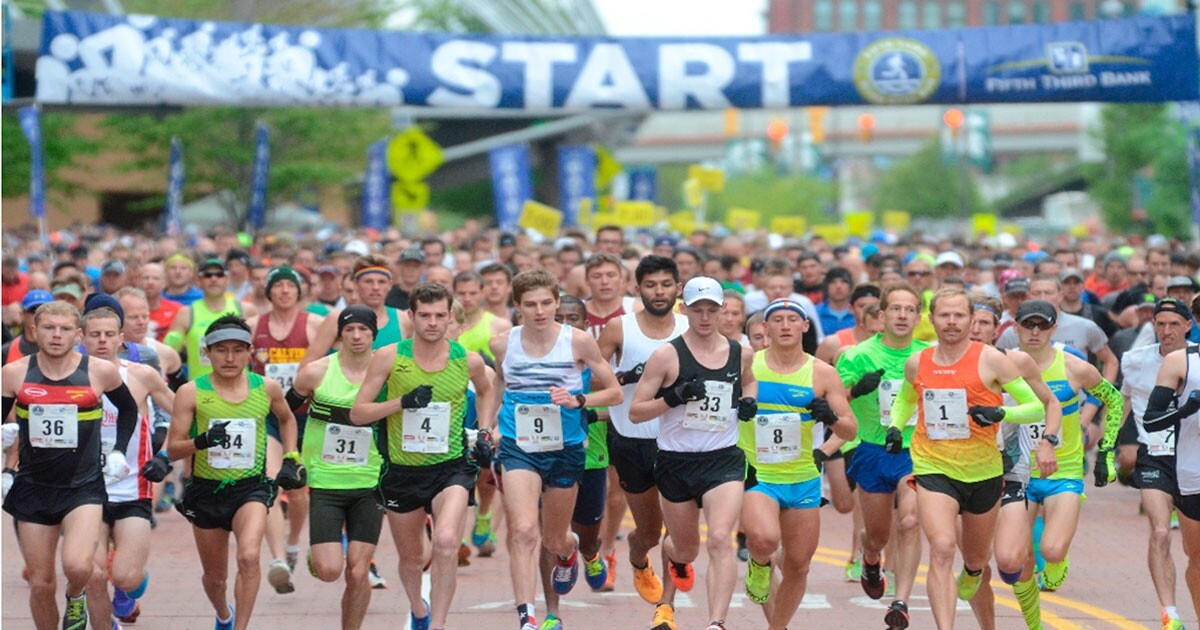
The races kick off at 7 a.m. with festivities happening until 2 p.m. Saturday.
The wheelchair and handcycle races are the only ones of their kind in the world. Race director David Madiol says River Bank Run is the only race in the world with a wheelchair division. 30 racers from across the world will be participating.
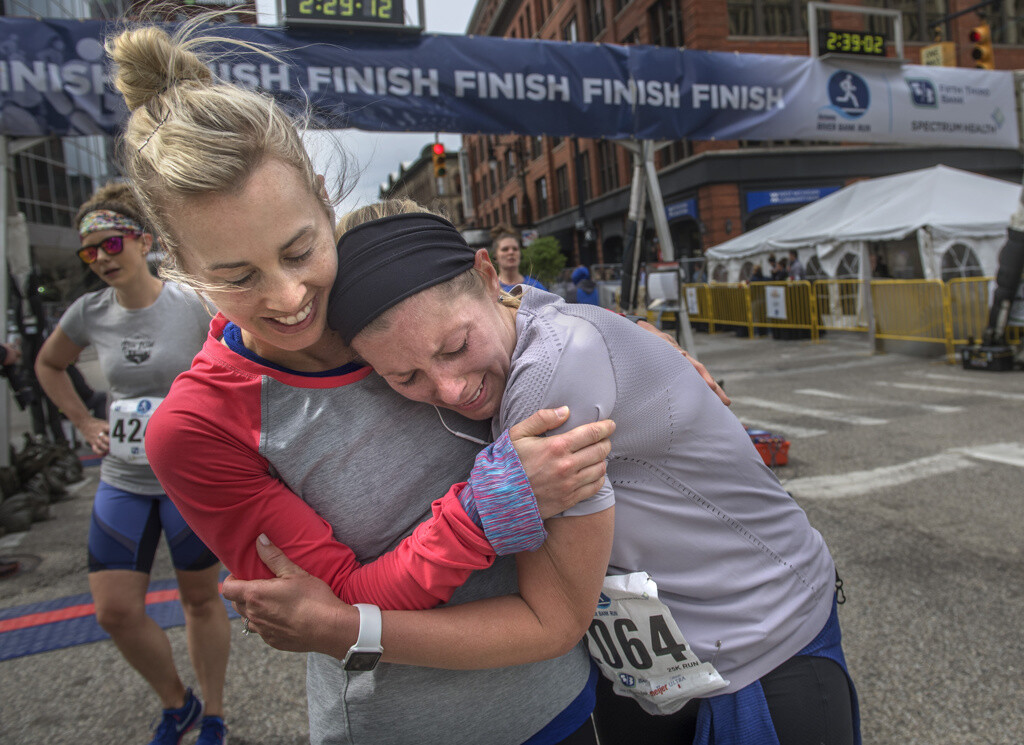
Madiol suggests racers hydrate well through the day, as temperatures are expected to get into the 70's Saturday. Water stations will be along the route to help racers hydrate during the race. All non-racers should be aware of road closures Saturday as the streets of downtown will be closed to accommodate racers. Travelers should plan ahead to take alternate routes to get in and out of the city.
The race is expected to be at about 65 percent capacity as it was before the pandemic as it returns to its usual schedule in May of every year.
A press conference is scheduled Friday for 10 a.m. with 15 of the elite racers and organizers. Sign-up for races is still available in-person throughout the day Friday but not online. The Amway River Bank Run clinic will be at open at Devos Hall Friday until 8 p.m.
(05/13/2022) ⚡AMPby Ruta Ulcinaite
Amway River Bank Run
The Amway River Bank Run presented by Fifth Third Bank with Spectrum Health the Official Health Partner celebrates over 43 years. More than 16,000 people are expected to compete in the event which features the largest 25K road race in the country and offers the only 25K Wheelchair racing division in the world along with a 25K Handcycle division. The...
more...Is Your Training Pace Fast Enough?
Beginner and intermediate runners often plagued by the performance plateau. Once a certain level of fitness is reached, improving race times becomes a challenge—especially if you aren't training the right way. Without a variety of workouts, improvement is almost impossible to attain.
Running faster during workouts is essential to achieving a new personal best. In short: To get fast you have to run fast.
The problem for those who do run "fast" is that they're typically not running fast enough.

Running at a pace that's only slightly faster than normal won't help you improve your performance. Even if you're training for a short race like a 5K or 10K, all of your workouts end up being in the aerobic heart rate zone.
Aerobic simply means "with oxygen." The primary energy system is your aerobic metabolism. You use oxygen to fuel your working muscles. When the intensity is relatively low, you can continue at this effort for an extended period of time. These workouts make up the bulk of a good endurance training program.

Anaerobic is the opposite—it means "without oxygen." When anaerobic intensity levels are high, more lactate (more commonly known as lactic acid) is created. Lactate is what produces that burning sensation you might be familiar with late in a race.
To get faster, you'll need a mixture of both. Here's why.
Which Workouts Are Better?
Neither are "better" because they each have different purposes. If you're training for a shorter race like a 10K, your workouts should be evenly divided between aerobic (tempo runs) and anaerobic (5K-paced intervals) workouts.
Runners who are training for a long race like the marathon need less anaerobic work in their training program. A marathon is over 99 percent aerobic. The pace is much slower than a 5K, so you don't have to focus as much on anaerobic training. Classic aerobic workouts for marathon training are:
Tempo workouts
Progression runs
Steady-state or marathon-pace efforts
The shorter your race, the more anaerobic it will be since you'll be running faster. So naturally, your workouts must be faster to meet the specific demands of your goal pace.
If your focus is on a shorter distance like a 5K, these workouts should be included in your training plan:
4 x 1-mile repeats on the track at 10K pace with a 400-meter recovery jog in between reps.
10 x 200-meter repeats on the track at 2-mile race pace with a 200-meter recovery jog in between reps.
3 x 1-mile repeats on the track at 5K race pace with a 400-meter recovery jog in between reps.
You'll notice that not only are you running at your 5K-goal pace, but you're also running faster (2-mile) and slower (10K). These "support" paces help to develop the speed you need to achieve your 5K goals.
For the marathon, it's still a good idea to work occasionally on your speed, but your primary focus should be on building aerobic fitness because of the longer distance. Your pace will be slower, but you still need to focus on what your race-pace goals are. If you're training slower than you plan to race, you won't meet your goals. Adjust your training to include some race-pace workouts, regardless of the distance.
The Difference Between the Two
A key difference between aerobic and anaerobic workouts is that there are more intervals and longer periods of rest during anaerobic workouts. The rest period allows your body to recover so you can continue to run at an anaerobic pace. Without a recovery, there'd be far too much lactate in your blood to allow you to continue running at the pace you need to build speed. In the marathon, aerobic training can be done more frequently because it doesn't take as long to recover.
It's also important to schedule anaerobic workouts in advance to make sure you have enough rest days in between interval sessions. A good running coach can be a big help too, and will teach you how to plan a proper progression of runs. Going too hard or scheduling interval training too frequently can lead to injury.
Every runner needs a good combination of aerobic and anaerobic workouts to reach their potential. Each has value—and in combination, can help you lose weight while running—and will help you to become a faster runner.
(05/13/2022) ⚡AMPby Jason Fitzgerald
Yuengling Shamrock Marathon Weekend Receives Virginia Green Travel Star Award
On April 25, 2022, the Virginia Green Travel program recognized 20 Virginia tourism businesses and 7 individuals for their outstanding efforts to protect the environment and support green tourism in Virginia. The awards were presented during the 9th annual Virginia Green Travel Conference.
The Yuengling Shamrock Marathon Weekend received the Virginia Green Travel Star Award as Green Event of-the-Year for their above-and-beyond efforts to protect the environment and support sustainable tourism in Virginia.

“Conserving natural resources, engaging customers, and working to increase sustainable tourism business in Virginia. The Virginia Green Travel Certification program works to support and promote those businesses that are committed to reducing the environmental impacts of their operation,” says Tom Griffin, the Executive Director of the Virginia Green Travel Alliance. “The Virginia Green Travel Star Awards recognizes the ‘greenest’ businesses and individuals that have demonstrated outstanding commitments to the environment in the past year. We are proud to recognize J&A Racing and the Yuengling Shamrock Marathon Weekend as a true partner in our efforts to promote sustainable tourism in Virginia!”
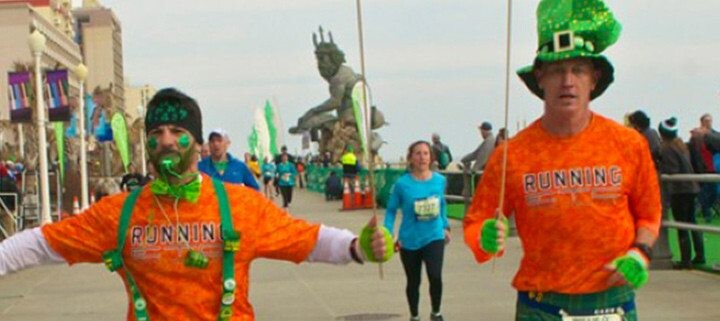
“We are thrilled for the Yuengling Shamrock Marathon Weekend to be recognized for this great award,” said Amy Frostick, Co-Owner of J&A Racing. “At J&A Racing, we understand the importance of being environmentally conscious, and we work really hard to take care of the community that we are so blessed to call home. We live in an amazing place to log our miles, and we are dedicated to continuing to keep it green!”
The Virginia Green Travel program is run through a partnership between the Virginia Department of Environmental Quality, the Virginia Tourism Corporation, Virginia State Parks, the Virginia Restaurant, Lodging & Travel Association, and the Virginia Green Travel Alliance. The program encourages green practices in all sectors of Virginia’s tourism industry. More than 1,200 businesses and partner organizations have voluntarily certified their green commitments through Virginia Green.
The Virginia Tourism Corporation promotes the certified Virginia Green program partners at www.virginia.org/green-travel and encourages visitors to plan their green vacations in Virginia.
The Virginia Department of Environmental Quality provides technical resources and oversight of the certification process — www.deq.virginia.gov/get-involved/pollution-prevention/virginia-green
The Virginia Green Travel Alliance is the non-profit organization that administers the Virginia Green certification program and supports partner outreach and educational opportunities – www.VirginiaGreen.net.
All 41 Virginia State Parks are certified in the Virginia Green Travel program, and VSP and Virginia Green Travel are working to “co-brand” and promote sustainable tourism opportunities in all regions of the Commonwealth.
Virginia Restaurant, Lodging & Travel Association assists in promotion and development of educational opportunities for the tourism industry.
About J&A Racing
J&A Racing is a nationally recognized race management company based in Virginia Beach, Virginia. With a portfolio of seven events, J&A Racing’s mission is to promote and support healthy lifestyles and the sport of running through all stages of life. Since 2003 when J&A Racing owners, Amy and Jerry Frostick, took over the Shamrock Sportsfest, the Yuengling Shamrock Marathon Weekend has become one of the most popular running events in the country growing from 3,000 participants to a record 30,000 in 2015.
(05/13/2022) ⚡AMPby Running USA
Yuengling Shamrock Marathon
The Shamrock Marathon was born in 1973. It was the brainchild of Jerry Bocrie, who along with his wife Lori would serve as race director for 30 years. The inaugural marathon had 59 entrants and 38 finishers, and the weekend also featured 1-mile, 2-mile, and 6-mile races. In 1976, the 6-miler gave way to an 8k, which has remained a...
more...What should you look for in your first running coach
Are you looking to take your running to the next level? Or are you looking for help to achieve a specific running goal? Having a great coach is an essential part of every great athlete’s success, but to get to that point, you have to find a coach who fits the bill. Finding a coach can be intimidating. How do you find the right one? And what should you look for?
Use the following tips to help you find the best coach for you.

Your purpose
Why do you need a coach? What’s holding you back from achieving your goals on your own? These are just a few of the questions you need to ask yourself before you go looking. When you start your search, look for training groups or coaches in your area who have experience with coaching runners at your level. For example, if you are looking to run a marathon, it doesn’t make sense to seek sign on with someone who is primarily a sprint coach.

Another thing you want to think about is your schedule. How much time you can commit to training? How much money can you budget for coaching? And what do you specifically want to focus on?
Their experience
There are plenty of running coaches out there who train athletes based on what they’ve learned through their years as a runner; some of them are very good, and others are less good. It’s great to have a coach who understands you as an athlete and knows or has experience in what you are going through or training for.
heck out the coach’s experiences as not only a runner but as a coach of other athletes, and their qualifications. Chatting with past or current runners who have trained under that coach can give you a pretty good idea. Then you can see if your goals align with their coaching style to ensure it’s the right fit.
A referral
If any of your running friends have a coach, a referral is a great place to start looking. Ask your friends about their experience while training under the coach. Some great questions to ask are: How responsive are they? What does the typical training plan look like? What are the expectations? And what is the connection between coach and athlete like?
If you are new to a city or are unsure of where to find a coach, try asking at your local running store. Many running stores will have a list of coaches, plus they are familiar with other coaches in the area.
The cost
Everything in life comes at a cost, and so do most running coaches. Depending on your goals or financial situation, you’ll have to find a coach who will fit your budget.
When looking for a coach, make sure you are getting good value for what you are paying. Don’t pay $200 a month for a virtual training plan that isn’t personalized. Make sure the cost is appropriate to what you will be getting in return.
Another thing you need to determine is whether you are looking for a personal 1-on-1 coach or a group coach. Having a personal coach will generally drive up the cost per month while joining a coached group like Vancouver’s Mile2Marathon or Toronto’s BlackToe RC will cost significantly less.
Communication
Treat finding a coach like a hiring interview. You always want to hire the candidate who is best suited for the job. Sit down and interview your potential coach before making your decision. Make sure your philosophies align and that they believe in you as an athlete. Try to ask in-depth questions to get an understanding of what training will be like under their wing. Good communication is the most important thing in any relationship. It’s great to interview a few candidates to find the best fit.
Another thing to do is to trust your initial gut reaction. Your instinct and intuition should be your first gauge of whether or not a coach is right for you, and you’ll likely be able to determine that in your first interaction. If something feels off when you first meet them, keep looking. When you find the right coach you’ll know.
(05/13/2022) ⚡AMPby Running Magazine
How Jo Schoonbroodt smashed the world 70 plus marathon record
At an age where many of his contemporaries are winding down, the man they call the Grey Kenyan is somehow speeding up. On Sunday Jo Schoonbroodt, a 71-year-old from Maastricht, ran a marathon in a staggering 2hr 54min 19sec to become the fastest septuagenarian in history.
A few days later, when the Guardian catches up with him, his achievement is still sinking in. “I only started jogging at 36 because my doctor told me I had high cholesterol,” he says, chuckling. “But last year I ran 7,242 kilometres [4,450 miles], which is more than double what I did in my car.”

It also turns out that Schoonbroodt’s new 70+ world record, set at the Maasmarathon of Visé in Belgium, was inspired partly by an unlikely source: the Flemish crooner Eddy Wally. With a few miles remaining, he knew he was just ahead of the previous best, set by Gene Dyckes in 2018, because a friend was following him on his bike and barking out his lap times. But his legs were starting to get heavier.
“However, my friend had a special trick to keep me on track,” says Schoonbroodt, who was wearing a yellow and blue kit in support of Ukraine. “He picked up his phone and put Eddy Wally’s song Chérie, Chérie on repeat. I’ve always loved it, I don’t know why. It gave me a boost in morale. I overtook one runner after another and, despite getting cramp in the final 500m, I was able to break the record by four seconds.”
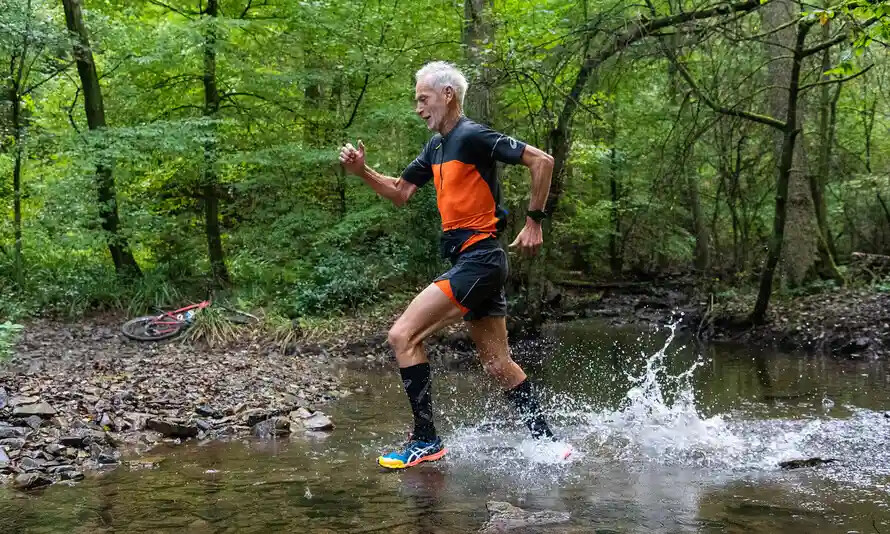
Incredibly it was Schoonbroodt’s 75th sub-three-hour marathon, and it came only four weeks after his 74th at the Rotterdam marathon. For good measure, the flying Dutchman also holds a number of ultra running records. He is clearly no ordinary Jo. But the secrets of his success might surprise you.
“Most runners train too hard. I do a lot of my training with groups who run very slowly. And then I build on these basics with some faster interval training. But I don’t do the same stupid distance 10 or 20 times – I prefer to have a lot of fun with my running.”
Schoonbroodt often runs at nine- or 10-minute mile pace, far slower than the 6:38min miles he ran for 26.2 miles to set his world record, but he says the crucial thing is he listens to his body. “A lot of people follow a training plan or coach and push on even when their body is saying: ‘No, this is not a good day to do it.’ But if you go out the door and just do what you feel, it’s easier to keep running and stay injury-free.”
He also dismisses the idea that runners need to do anything special with their diets. “Diet? No, no,” he scoffs. “No diet! I eat double portions, of course, with all these calories I burn. I love pasta and potatoes. But whatever is on the table, I eat it.”
He has a similarly relaxed attitude when it comes to alcohol. “I prefer the French wine and the Belgian beer. Not too much, and mostly on weekends. Wine is just a grape drink, so it’s made from nature. And Belgian beer is special. And if you do all this with your body,” he adds, referring to the 85 miles he still runs each week, “you need to give it something back. And this is what I give back to the body!”
Schoonbrot is a former IT worker and can tell the exact day he started running – 1 January 1986 – and how many kilometres – 120,000 – he has done since. But he stresses he was no natural. At first people called him Jogger Jo, because he was slow. Nowadays he gets called the Grey Kenyan – a nickname given to him years ago by a race announcer as he blasted past athletes a third of his age.
Being a late bloomer, he believes, has actually helped him because his ego never had to worry about chasing faster times of his youth. “Because I started so late, I missed my best years. But that’s no problem. Everything is still new to me.”
Schoonbroodt also cites the new range of carbon-plated “super shoes”, which have swept the running world over the past five years, as a key factor. On Sunday he ran in the Asics Metapeed Sky, and has been an ambassador for the Japanese company for the past four years, preaching the positive benefits of exercise to sceptics and lapsed practitioners.
But while Schoonbrodt’s achievements are exceptional, he is not the only old master to defy conventional wisdom. Several men older than 70 have run a sub-three-hour marathon – the first of whom, Ed Whitlock, who died in 2017, also ran a 3:15 marathon after turning 80.
So what might explain this phenomenon? John Brewer, a sports scientist at the University of the West of Scotland, points out that while we experience a 10% decline in muscle mass every decade as we age, the decline isn’t as sharp for endurance. “The scientific evidence shows that you can maintain your aerobic capacity – your Vo2 max – very effectively into old age,” he says.
“And if you look at where we are now compared to 40 years ago, the advances in nutrition, sports science, recovery and technology, all mean that it is more feasible for people in their 60s and 70s to produce good performance if they follow the right training.”
Brewer, who was also part of England’s backroom staff for the 1990 World Cup, says Schoonbrodt’s story carries another message – that it is never too late. “People think they can’t turn it around after years of no exercise or poor diets,” he says. “Well, actually you can.”
Schoonbroodt, meanwhile, has no plans to put his feet up. “My next marathon is in two and a half weeks, on an old Roman road built 2,000 years ago,” he says, the excitement obvious. It will be his fifth in 2022. And with that he is off. After all, the quest for a 76th sub-three-hour marathon waits for no man. Not even one who is 71.
(05/12/2022) ⚡AMPby Sean Ingle (The Guardian)
Maas Marathon De La Basse-Meuse
Ever since the initial steps, in 1999, all the organizers, the towns, cities and municipalities involved in this 26.2 mile challenge have constantly been expressing their delight at their investment. Over the years, we have noticed the marathon participants looking for races that are able to offer an extra and original dimension in terms of the circuit and activities. We...
more...46th Grandma’s Marathon Surpasses 20,000 Racers
With just 6 weeks left till the 46th annual Grandma’s Marathon, its crunch time to get the final pieces put together before thousands of racers take off on June 18th.
This year the race returned to full capacity and as of Wednesday morning, registration passed 20,000 racers which means it’s on track to being one of the largest Grandma’s races in history.
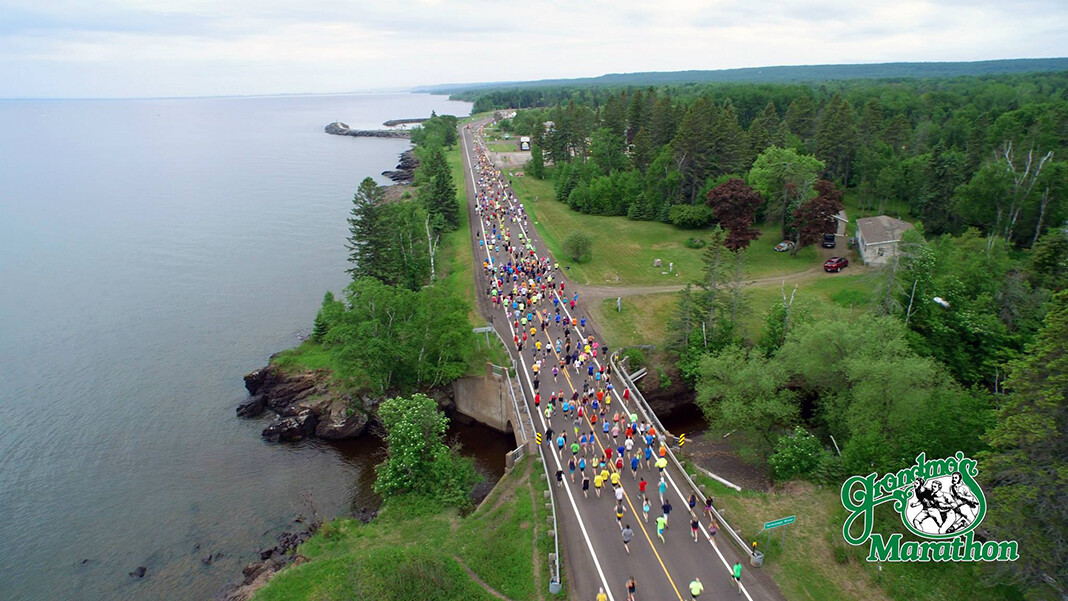
A modification that was created last year to accommodate covid, which was the post-race entertainment at Bayfront Festival Park, is returning due to its success and staff is anticipating a busy weekend.
“There’s only a couple hundred spots in total left in any of the three races and that’s exciting and when we hit a sellout, this will be the first time since 2016 that we can say all three races, all the events for the weekend are sold out for participants and so it’s going to be a big weekend and it’s going to be fun,” Zach Schneider, Director Of PR And Marketing for Grandma’s Marathon said.
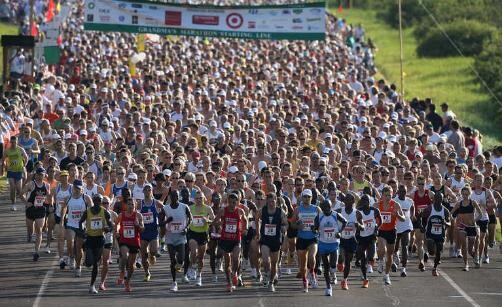
Registration for the races is still open while spaces are, or until June 1st, whichever comes first, and Grandma’s is also looking for more volunteers to help out on race weekend.
(05/12/2022) ⚡AMPby Natalie Noury
Grandmas Marathon
Grandma's Marathon began in 1977 when a group of local runners planned a scenic road race from Two Harbors to Duluth, Minnesota. There were just 150 participants that year, but organizers knew they had discovered something special. The marathon received its name from the Duluth-based group of famous Grandma's restaurants, its first major sponsor. The level of sponsorship with the...
more...Stop trying to be perfect, you don't have to get everything right all the time
As runners, we like to set big goals and work hard to achieve them. We want to create the perfect training plan, have the perfect build and follow the perfect diet so that we can have that “perfect race.” Today, we’re putting a stop to the madness. Runners, if you want to enjoy and have success in the sport, please — stop trying to be perfect.
The “do what you can” approach

American tennis legend Arthur Ashe once said “Start where you are. Use what you have. Do what you can.” Ashe may not have been a runner, but his advice is applicable to every sport. You may not have access to state-of-the-art facilities, be able to afford the latest-and-greatest super shoes or have the luxury of taking long naps after all of your long runs, but that doesn’t mean you can’t still run well.
Take Olympic decathlon gold medallist, Damian Warner, for example. Thanks to COVID-19 lockdowns, he was unable to access all of his usual training facilities, so he ended up training for the entire year in a make-shift gym with half the equipment he was used to. Despite this, he still managed to set an Olympic record, win the gold medal, and become only the fourth person to ever break the 9,000 point barrier in the decathlon.

A lot of what happens during training and racing is out of your control. Maybe you got the flu part-way through your training cycle and had to take a week off. Perhaps you woke up on race day to crazy winds or pouring rain. When something unexpected happens that derails your training or ruins your shot at a PB, it’s easy to panic, get upset and throw in the towel, but it doesn’t have to be that way.
Take Olympic bronze medallist Molly Seidel. She revealed after the race that in her build-up to the New York City Marathon, she had cracked three ribs. Instead of letting that ruin her race (or giving up entirely), she did however much running she could handle and ended up setting an American course record and placing fourth.
After the race, she said, “It doesn’t have to be perfect going into these things, but if you put your effort out there, if you pour everything you have into this, you’ll find a way.”
Relax and enjoy yourself
It’s important for runners to remember that the reason you put your shoes on every day is that you love the sport. If your drive to get a new personal best is preventing you from enjoying the process, then what’s the point? Instead, try to relax and have fun with it.
(05/12/2022) ⚡AMP
by Running Magazine
Des Linden is going to be running the 2022 BAA 10K
The Boston Athletic Association (B.A.A.) announced today that 2018 Boston Marathon champion and two-time Olympian Des Linden will return to compete in the 2022 B.A.A. 10K, presented by Brigham and Women’s Hospital, on Sunday, June 26. The B.A.A. 10K is the second event of the 2022 B.A.A. Distance Medley, a three-race series which also includes April’s B.A.A. 5K and November’s B.A.A. Half Marathon.
Earlier today, Linden announced on Instagram her participation in the upcoming event.
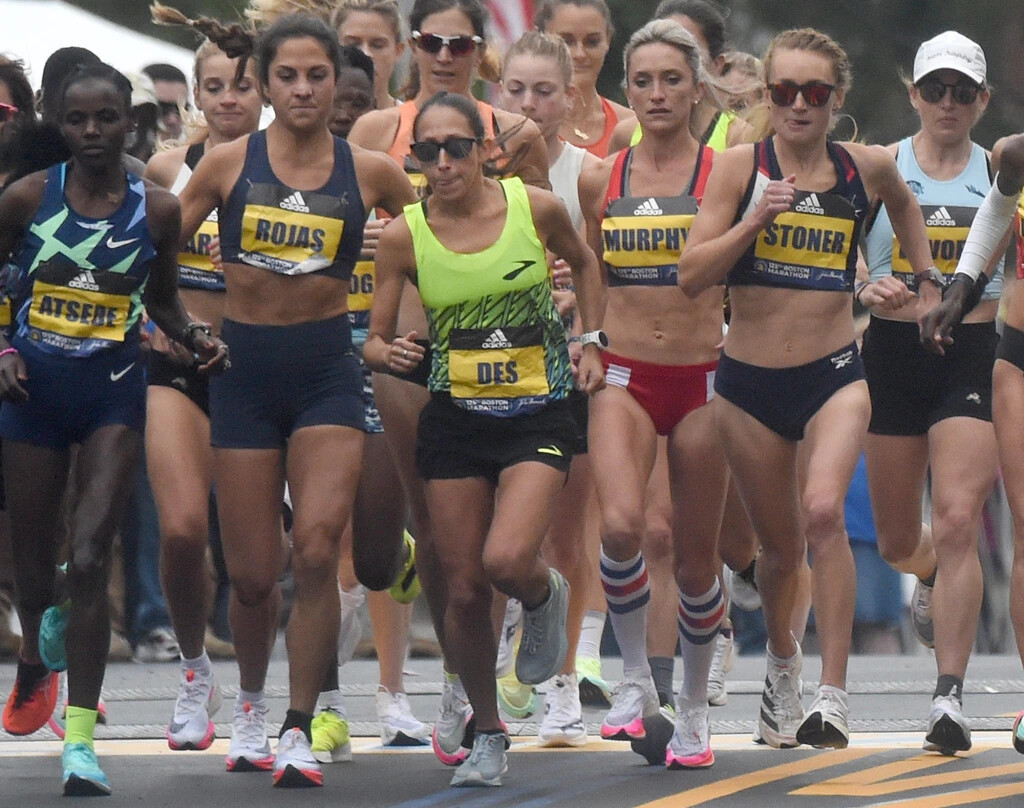
In 2018 Linden won the Boston Marathon, the first time an American woman claimed the open division title in 33 years. She has placed in the top five at the Boston Marathon five times and last ran the B.A.A. 10K in 2018 when she ran among the masses and finished hand in hand with B.A.A. runner Katsuhiro Togami.
Registration for the 2022 B.A.A. 10K, presented by Brigham and Women’s Hospital, is currently open through the B.A.A.’s online platform Athletes’ Village. All participants who enter will receive an adidas participant shirt, unique bib number, and finisher medal. Additional participant information can be found on baa.org. The race will start at 8:00 a.m. ET on Sunday, June 26 on Charles Street adjacent to Boston Common and Boston Public Garden.

Athletes interested in supporting Brigham and Women's Hospital, the B.A.A. 10K’s presenting sponsor and exclusive fundraising partner, are encouraged to visit www.runbwh.org/10k. Since 2016, more than 2,100 runners and 180 teams have raised $1.2 million to fuel life-giving breakthroughs at Brigham and Women’s Hospital.
Linden will also be participating in the first-ever B.A.A. 10K Fest & Field Day on Saturday, June 25, one day prior to the race. From 2:00 p.m. to 6:00 p.m. at Boston Common, 10K Fest & Field Day will feature youth fitness activities, games, appearances by professional athletes, running clinics, and more. Participants will also be able to pick-up their participant shirts and bib numbers at 10K Fest. Additional details will be available on baa.org in the coming weeks.
ABOUT THE BOSTON ATHLETIC ASSOCIATION
Established in 1887, the Boston Athletic Association is a non-profit organization with a mission of promoting a healthy lifestyle through sports, especially running. The B.A.A.’s Boston Marathon is the world's oldest annual marathon, and the organization manages other local events and supports comprehensive charity, youth, and year-round running programs.
Since 1986, the principal sponsor of the Boston Marathon has been John Hancock. The Boston Marathon is part of the Abbott World Marathon Majors, along with international marathons in Tokyo, London, Berlin, Chicago, and New York City. For more information on the B.A.A., or the B.A.A. club, racing team, and High Performance Team, please visit www.baa.org.
(05/12/2022) ⚡AMPB.A.A. 10K
The 6.2-mile course is a scenic tour through Boston's Back Bay. Notable neighborhoods and attractions include the legendary Bull and Finch Pub, after which the television series "Cheers" was developed, the campus of Boston University, and trendy Kenmore Square. ...
more...2022 Salzburg Marathon returns on Sunday after a three-year break
After a three-year break, the Salzburg Marathon is returning. The “Running Festival in Mozart’s Hometown” takes place in the spirit of togetherness and peace this Sunday, May 15.
Runners from 60 nations join the wide range of running events over the weekend. Austrian national marathon championships are the main sporting focus.
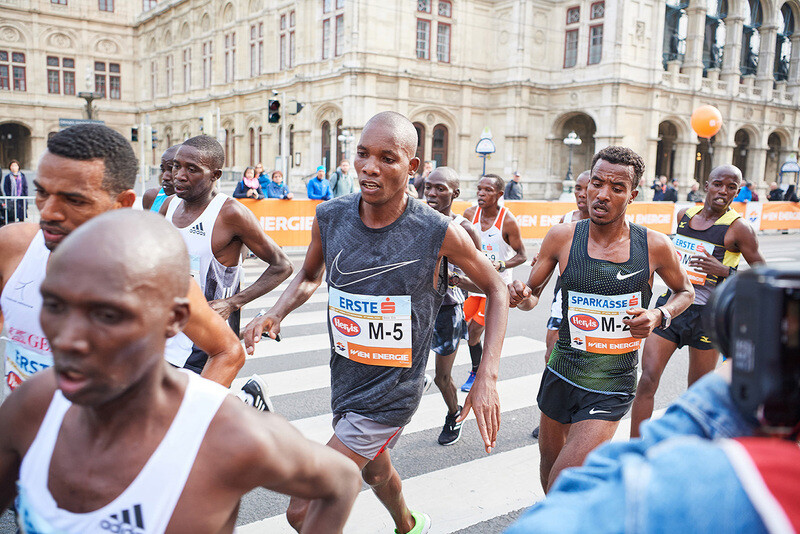
Known as a worldwide center for classical music, the running event takes place under the name of “Running Festival of Mozart’s City”. A diverse and colorful programme with ten different competitions and the motivating atmosphere of peaceful togetherness inspire several thousand participants.
From a sporting point of view, the Austrian National Marathon Championships take center stage. National record holder Eva Wutti hopes to qualify for the European Championships in Munich. She needs to beat the time of 2:32:00 hours. In the men’s race, Mario Bauernfeind, Isaac Kosgei and Georg Schrank are among the contenders for victory and the championship title. While the elite field consists of Austrian runners, the event as a whole is a huge international get-together.

The attractive marathon and the tourist appeal of Salzburg bring runners from 60 countries to the start.
The comeback of the Salzburg Marathon for its 19th edition has special significance for race director Johannes Langer: “Running brings people together. Finally we can garnish the desire to run with the special experience factor again – and all this at an atmospheric, international running event.”
Salzburg Marathon course records stand at 2:14:16, set by Eliud Kiplagat in 2013, and 2:35:05 by Risper Kimayo in 2011. While the men’s record looks safe this year, the women’s record could come under threat, as Austrian favorite Eva Wutti has a personal best of 2:30:43 from 2020.
The Marathon starts on Sunday, 15 May, 9.00 am. Last minute entry will be available on site.
The route leads through Salzburg‘s historic old town, which has been a UNESCO World Heritage Site for 25 years, and touches the green surroundings outside of town. It is a flat and AIMS certified course that is officially recognized as a qualification event for international championships. Austrian Athletics Federation holds the national marathon championships there for the seventh time since 2007. Finish area is located in front of the world-famous Grosses Festspielhaus (Large Festival Hall) with a breathtaking view of Fortress Hohensalzburg.
Shorter distances at the Salzburg Marathon weekend motivate many people to participate and lead an active lifestyle. On Sunday, in addition to the marathon, the Sparkasse Half Marathon, the Hervis-10K Salzburg CityRun and the Hyundai Relay Marathon will take place. Among the participants in the relay is Olympic athlete Peter Herzog. The Austrian marathon record holder (2:10:06) is preparing for a start at the 10,000 m European Cup at the end of May.
(05/12/2022) ⚡AMPby AIMS
Salzburg Marathon
The Salzburg Marathon is a marathon in Salzburg, Austria. First held in 2004 and organized by Club Run Austria. The program also includes a half marathon that has been held since 2001, a 10 km run, the "Get active" junior marathon and other competitions. Enjoy a special marathon-feeling while passing many of the best known sights of Mozart's hometown! The...
more...Peres Jepchirchir, Senbere Teferi and Sara Hall Headline 50th New York Mini 10K
With one month to go until the 50th anniversary of the Mastercard® New York Mini 10K, New York Road Runners (NYRR) announced today that Olympic, TCS New York City Marathon, and Boston Marathon champion Peres Jepchirchir, United Airlines NYC Half champion and 5K world-record holder Senbere Teferi, and two-time Mastercard® New York Mini 10K champion Sara Hall will headline the professional athlete field for this year’s race.
The Mini 10K, which began in 1972 as the first women-only road race known as the Crazylegs Mini Marathon, has gone on to garner more than 200,000 total finishers to date. Former NYRR President Fred Lebow named the race after the miniskirt, which back then was in vogue. A total of 72 women finished the first race, and three weeks later, Title IX was signed into law, guaranteeing girls and women the right to participate in school sports and creating new opportunities for generations of female athletes.
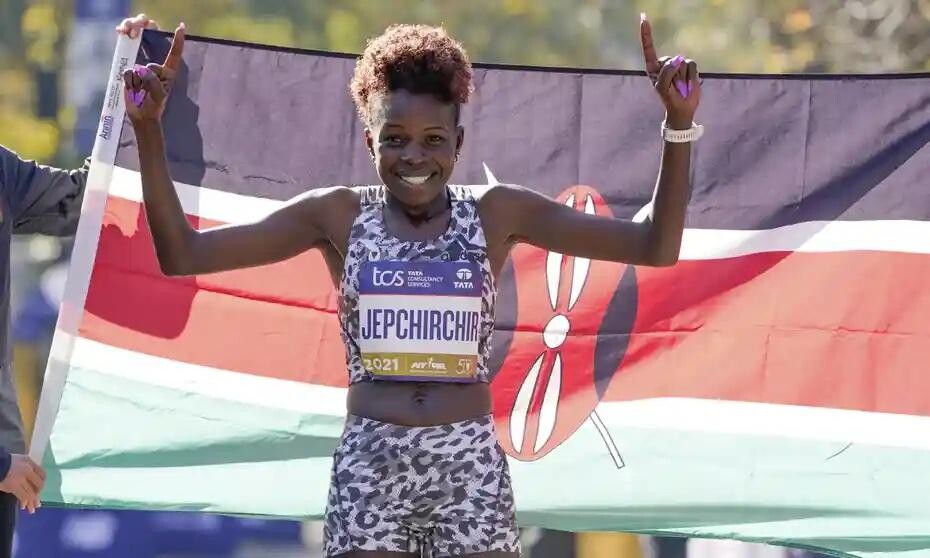
Jepchirchir, of Kenya, is the only athlete – male or female – to have won the Olympic, New York City, and Boston marathons, and is also a two-time world champion in the half marathon. Last year, she won gold in the Tokyo Olympic marathon by 16 seconds, and then four months later ran the third-fastest time in TCS New York City Marathon history (2:22:39) to win the race in her U.S. debut. In April, in a back-and-forth race that came down to the final mile, she fended off Ethiopian Ababel Yeshaneh to take the Boston Marathon title in her debut in the event and will now be racing the Mastercard® New York Mini 10K for the first time.
“I have heard about the Mini and how it is a wonderful celebration of women and running,” Jepchirchir said. “It is very important to me that I use my success to inspire young women and girls coming after me. It is very special to be able to return to New York City after my marathon victories in New York and Boston to be a part of the 50th anniversary of this race.”

Teferi, of Ethiopia, is a two-time Olympian, two-time world championships silver medalist, and the 5K world-record holder. Earlier this year, she set both the course and event records at the United Airlines NYC Half, finishing in a time of 1:07:35 to win the race. She followed that up a month later by winning the B.A.A. 5K in a course-record time of 14:49. In her NYRR race debut, Teferi won the 2019 UAE Healthy Kidney 10K with a time of 30:59, breaking the previous course record set in 2014 by Joyce Chepkirui.
“My first race in the United States was in New York City in 2019, and I broke the event record at the Healthy Kidney 10K in Central Park,” Teferi said. “Then, earlier this spring, I broke the event record at the United Airlines NYC Half, again crossing the finish line in Central Park. I cannot promise another record on June 11, but I am happy to return to Central Park for my first Mini 10K, and look forward to be joined by thousands of my sisters-in-running.”
Hall, of the United States, who has 10 national titles to her name, ran what was then an American record-breaking 1:07:15 half marathon at the Houston Half Marathon in January. She was the runner-up at the 2020 London Marathon and that same year clocked what was then the second-fastest marathon ever by an American woman at The Marathon Project. She is the two-time reigning champion of the Mastercard® New York Mini 10K, having won the 2019 event that also served as the USATF 10 km championships and then following it up in 2021 with another victory.
“My three races at the Mini have all aligned with big important milestones in the history of the event: The first time hosting the USA Championships in 2019, the first big NYRR race coming out of the pandemic in 2021, and now the 50th anniversary in 2022,” Hall said. “I’m very aware that many of the opportunities I’ve had as an athlete are because of the groundbreaking work of the women who came before me, and of my duty to inspire the young women who will follow me, including my daughters. I will do everything I can to honor all of them with another top finish on June 11.”
The Mastercard® New York Mini 10K will offer $45,000 in total prize money, including $10,000 to the winner of the open division and $2,500 to the winner of the wheelchair division. The professional athlete races will be streamed live on USATF.TV beginning at 7:40 a.m. ET. Mastercard® will serve as title sponsor of the event for the second time, and as part of its on-going partnership with NYRR will also serve as the presenting sponsor of professional women’s athlete field.
To mark the 50th anniversary, several legends and pioneers of the sport will also be joining the Mastercard® New York Mini 10K race weekend festivities this year, including Jacki Marsh-Dixon, the first Mini 10K champion; Kathrine Switzer, the 1974 New York City Marathon champion who also ran the first Mini 10K; Deena Kastor, Olympic medalist and 2004 Mini 10K champion; and Lynn Blackstone, Pat Barrett, Jane Muhrcke, and Nina Kuscsik, four of the “Six Who Sat” at the 1972 New York City Marathon. Both Switzer and Blackstone will run the Mini 10K again this year.
(05/12/2022) ⚡AMPby Letsrun
New York Mini 10K
Join us for the NYRR New York Mini 10K, a race just for women. This race was made for you! It’s the world’s original women-only road race, founded in 1972 and named for the miniskirt, and it empowers women of all ages and fitness levels to be active and to look and feel great on the run. Every woman who...
more...71-year-old Jo Schoonbroodt ran 2:54:19 at Maasmarathon in Belgium to break the M70+ world record by 29 seconds
Over the weekend (May 8, 2022) at the Maasmarathon of Visé in Belboom, Belgium, Jo Schoonbroodt of the Netherlands broke Ed Whitlock’s M70+ marathon world record of 2:54:48 by 29 seconds. Schoonbroodt ran 2:54:19 to win the men’s 70-74 age category (by an hour and a half) and also set the M70+ world record.
Schoonbroodt set out with the a goal of running under three hours to complete the 75th marathon he has run under the three-hour barrier, but he had a slight tailwind in the first half of the course, covering it in 1:26:18. The second half was into the wind, but Schoonbroodt tucked in behind another runner to help mitigate the effect.
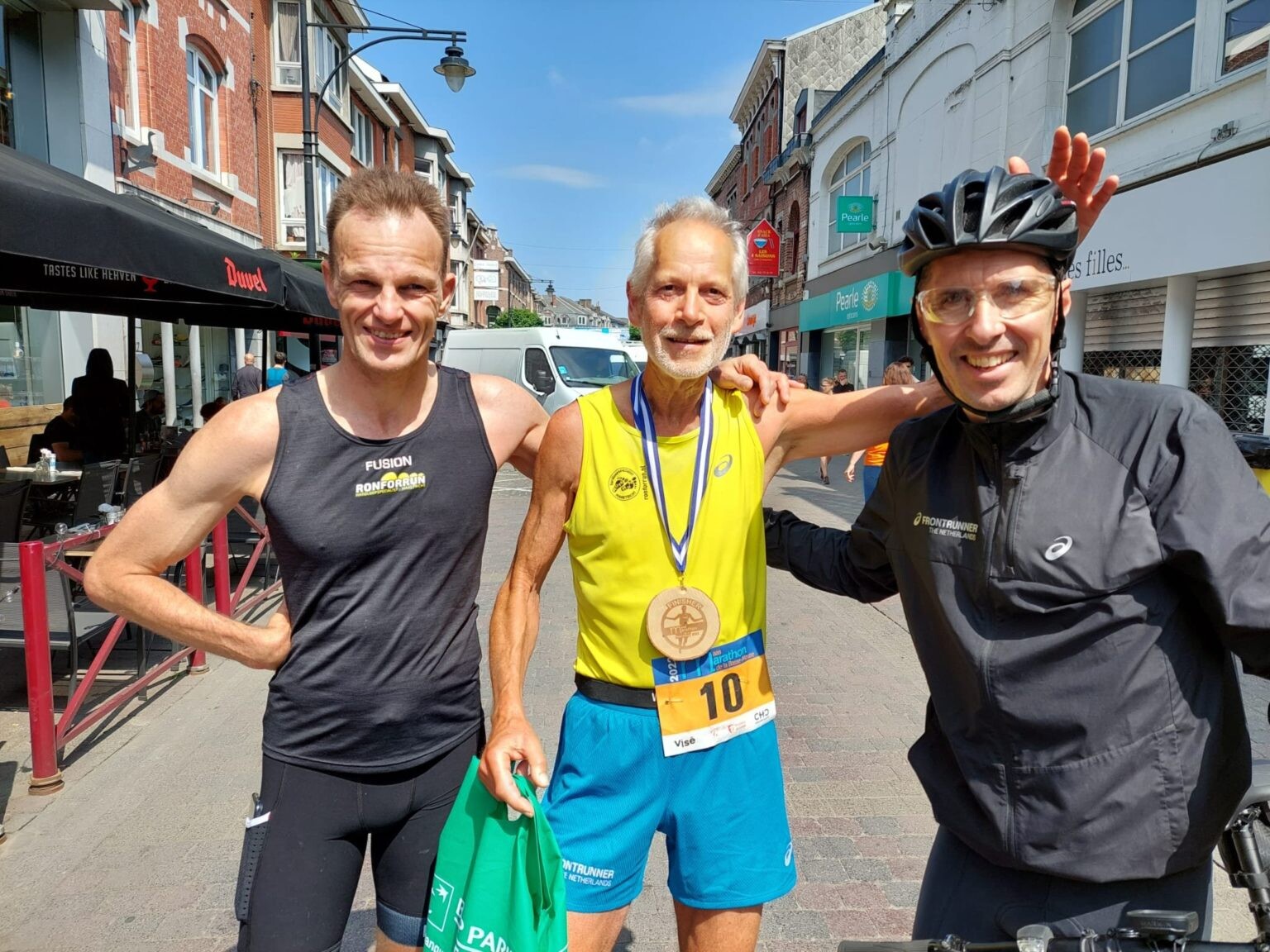
His time not only beat Whitlock’s official record of 2:54:48, but also U.S. masters runner Gene Dykes unofficial record time of 2:54:23 by four seconds; Dykes ran this time at the Jacksonville Marathon in 2018, only to discover the course was not sanctioned by USATF.

We reached Dykes for a comment: “I’ve been watching with anticipation for Jo to break the record!” he told us in a Facebook message. “My odds of retaking the lead this fall are extremely long–I’m looking forward to tussling with Ed at M75 next year. It would appear that Jacob Nuris going to wipe out the M70 records three years from now.”
According to Strava, Nur is a runner from Elk Grove, Calif. He is 66. And according to USATF, he broke the M65-69 American record in the 10K in November in Sacramento (35:42), as well as the 10-mile American record in 59:11 at the NorCal John Frank Memorial 10-Mile in March.
Schoonbroodt said on his Instagram page that he was not fixated on breaking the record before the race. “A time under three hours was my goal, but I am now happy I can call myself the fastest 70+ runner on the planet.”
This record is not Schoonbroodt’s first, as the Maastrict, Netherlands, resident ran the M60+ six-hour world record in 2012, covering almost 79 kilometres. “I have always been inspired to run by others,” Schoonbroodt says. “Hopefully this record inspires others around my age to start running.”
When the 71-year-old marathoner isn’t running, he is usually playing with his grandkids or hiking in the Dutch countryside. According to his website, he likes to live according to the motto of enjoying every day and being present in the moment.
(05/11/2022) ⚡AMPby Running Magazine
Maas Marathon De La Basse-Meuse
Ever since the initial steps, in 1999, all the organizers, the towns, cities and municipalities involved in this 26.2 mile challenge have constantly been expressing their delight at their investment. Over the years, we have noticed the marathon participants looking for races that are able to offer an extra and original dimension in terms of the circuit and activities. We...
more...Why you should run on the treadmill when coming back from an injury
Getting back into running can be difficult when you are coming off a serious injury. When you are given the green light to start running again, it’s crucial to be cautious to prevent your injury from flaring up. Most runners will choose to run outside because it is more effective than using a treadmill, but from an injury prevention standpoint, you may be surprised that the treadmill is the best place to start.
It’s easier to maintain your pace and effort on a treadmill than running outdoors. Outdoors, you are usually going by feel or your heart rate monitor, whereas on the treadmill, you can control the pace and the gradient to make sure you are taking it easy. The treadmill allows you to work on your form, cadence and pace, which is harder to do outdoors. For example, if you have been told that you are overstriding and were given tips to lean a bit more forward in your stride to solve the issue, the treadmill is a great place to practise.

Although the treadmill doesn’t have the same fresh scents as running outdoors, it is easier on joints. Running outdoors can result in a lot of impact on your joints when coming back from an injury, and most treadmills have a built-in shock absorbency to cushion your impact. Besides the speed and the ramp (both of which you can control), a treadmill doesn’t have any unforeseen obstacles.

There are no unexpected hills, ice, or rain on a treadmill, so there’s no need to worry about slipping and flaring up your injury on a day of inclement weather.
After you build up the strength and confidence, you can return to training outdoors. If you are training for a race, it’s best to acclimatize your muscles to the environment on race day. Relying on treadmill runs for all your workouts leading up to a spring race might not be the best idea for acclimatization.
(05/11/2022) ⚡AMPby Running Magazine
2022 Cellcom Green Bay Marathon returns in person
The 23rd Cellcom Green Bay Marathon is set for Sunday, May 15th, in person finally.
For runners completing the full marathon, it’ll be the first time they’ll hit the course together since 2018.

“I can’t wait. This is our hometown event. We put so much effort into making this event as amazing as it can be for everyone, so our pace team is going to be out there helping everyone. It’s going to be a party atmosphere,” says Carrie Miller, runner and founder of On Pace Race.
COVID-19 forced the races to go virtual the past two years, and the year before that, flooding on the course prompted the cancellation of the full marathon at the last minute on race morning.
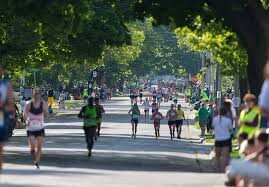
“I think it’s just a sense of normalcy just getting to be back together,” says Cellcom Green Bay Marathon spokesperson Tammy VanDenBush. “There’s something about chasing goals together. You get that energy from other runners.”
With the return comes a lot of change.
All the running events will be held Sunday morning, with staggered start times.
There’s no expo or kids’ run this year as organizers work to ramp events back up.
All the festivities, including packet pickup and the post-race party, will take place outside The Bar on Holmgren Way.
“The Stadium District, as you know on game day, is so fun and we’re really excited to bring that to race day and bring that energy down to the Stadium District, but the course is really our biggest change for the year,” says VanDenBush.
That includes the start and finish lines.
“The marathon is using Mason Street for the first time, so that’s where they’ll be crossing the Fox River both directions,” says VanDenBush. “A lot of it is the same... Ashwaubenon, north of the stadium Green Bay neighborhoods, but then the marathon goes over Mason Street, having some miles in Allouez, which we haven’t had before, and then they’ll be hopping on the trail.”
She says the portion of the Fox River Trail that flooded in 2019 is no longer part of the course.
Carrie Miller, who started pacing runners at the Cellcom Green Bay Marathon five years ago, says the excitement of a return to normal at their signature race is drawing in double her normal number of pacers.
(05/11/2022) ⚡AMPby Sarah Thomsen
Cellcom Green Bay Marathon
The Cellcom Green Bay Marathon and Half Marathon courses are considered to be fast and flat, by race industry comparisons. The courses finish with a “tailgate” themed party in the Lambeau Field parking lot! The marathon starts in front of Lambeau Field and pass along tree-lined streets in west Green Bay and the village of Ashwaubenon. Then the marathoners head...
more...Seven secrets to Prevent Running Injuries
More than half of all runners deal with at least one injury per year. There's really no good reason for this phenomenon. But it's constant, mostly because runners don't train intelligently or they follow programs that are faulty in design. Injuries happen because the physical stress from running is too much for your body to handle at that time. The human body is great at adapting to stress, but only when you apply that stress in small doses. When you apply the stress too quickly for your body to adapt, something breaks down.
Every time your foot lands on the ground, your leg absorbs two to three times your body weight. Multiply that by the number of steps you take to run five miles, and multiply that by how many times you run each week, and you can see how much stress your legs have to deal with to be a runner.
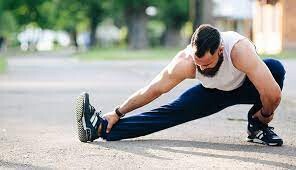
The main predictors of running injuries are:
Mileage: How many miles you run per week is the greatest predictor of injury risk. It's hard to say exactly how many miles per week increases the risk of injury because that's an individual matter. You may be able to handle 50 miles per week and your running partner may get injured with 30. Some runners (called Olympians) can run more than 100 miles per week and not get injured. On average, the risk of getting injured is two to three times greater when running at least 40 miles per week.
Previous injury: If you've had an injury in the past, you're at an increased risk for another one. A previous injury makes that body part more vulnerable.

Lack of running experience: If you're a new runner, you have a greater risk for injuries because you're not yet used to the stress of running.
So, do you want to stop getting injured? Follow these seven training secrets:
1. Train smart.
To train smart, train at more effective levels of effort to get the best results. The goal of training is to obtain the greatest benefit while incurring the least amount of stress. That means you want to run as slow as you can while still meeting the purpose of the workout and obtaining the desired result. Follow a systematic and progressive training plan, with each cycle of training building on what came before to create a seamless and safe program. Better yet, consult a coach to get a training program customized for you.
2. Increase your weekly running mileage very slowly and spread it out over the whole week.
How quickly you increase your weekly mileage probably has the greatest impact on whether you get injured. The slower you increase your weekly mileage, the less chance you'll get injured.
When you increase your mileage, add only about a mile per day of running so that you spread the stress around. For example, if you run 20 miles over four days in a week, run no more than 24 miles next week by adding one mile to each of the four days. Don't run 24 miles next week by adding all four miles to only one day of running.
Many books and articles quote the 10 percent rule of increasing mileage, but there's nothing special about 10 percent, and you can often increase by more than that if you're smart about how you do it.
If you're a highly trained runner, you may be able to get away with adding more miles more quickly, especially if you have experience running longer distances. For example, if you've run 60 miles per week in the recent past and now you're training for your fifth marathon and building your mileage, you don't necessarily have to go from 40 to 45 to 50 to 55 to 60 miles per week over a couple of months. You may be able to make bigger jumps in mileage because your legs already have experience running 60 miles per week. However, if 60 miles per week is brand new territory for you, then you need to increase your mileage in smaller increments. If you're a new runner, an older runner or are prone to injury, run the same mileage for three to four weeks before increasing it.
3. Don't increase your running mileage every week.
Run the same mileage for two to four weeks before increasing it. Give your legs a chance to fully absorb and adapt to the workload. You want 30 miles per week to be a normal experience for your body before increasing to 35 miles per week. And that takes time.
4. Don't increase the distance of your long run every week.
This is especially important if you're entering unchartered territory with your long runs (i.e., you've never run that distance before). Repeat the same long run for a few weeks before running longer. You want a 9-mile run to become normal before you try to run 10 miles. Most marathon and half-marathon training groups make the costly mistake of ramping up the long run too quickly because their training programs are only five to six months long, so they increase the distance of the long run every week throughout their programs until it's time to taper two to three weeks before the race. That's a good way for new or recreational runners to get injured because the stress increases week after week without a break. If you're running your first marathon or half-marathon and you're starting from a short(ish) long run, you need to give yourself much longer than five or six months to prepare without risk of injury.
5. Don't make the long run so long.
To avoid injury, don't make your long run such a large percentage of your weekly running. Ideally, your long run shouldn't be more than about a third of your weekly mileage. So, if your long run is 10 miles, you should run at least 30 miles per week. If your long run is 20 miles, you should run at least 60 miles per week. The majority of runners don't run that much, so you need to be creative when training so that you don't accumulate so much stress in one run.
Don't misunderstand--the long run should be stressful. After all, you're running for a long time and trying to make yourself exhausted so your body adapts. However, you don't want the long run to be so much more stressful than any other run during the week. It's always better to spread the stress around. Complete a medium-long run mid-week that's about 65 to 75 percent of the length or duration of your long run. This strategy helps to ameliorate the potential damage of your long run being more than a third of your weekly mileage.
Read More: 8 Baby Steps to the Marathon for Beginners
6. Run EASY on your easy days.
The biggest mistake runners make is running too fast on easy days. This adds unnecessary stress to your legs without any extra benefit and will make it more difficult to complete a quality run on your harder days. Easy runs should feel gentle and allow you to hold a conversation (about 70-75 percent max heart rate).
7. Never increase your weekly mileage and the intensity of your workouts at the same time.
When you begin to include interval training and speed work into your program, either reduce the overall mileage for the week or maintain your mileage from where it was before you added the extra intensity. Your legs can handle only so much stress at once. Trying to increase your running volume while also increasing the intensity of your workouts is too much for most runners to handle.
(05/11/2022) ⚡AMPby Jason R. Karp, Ph.D.
Letesenbet Gidey chooses Valencia for debut marathon
The 42nd Valencia Marathon Trinidad Alfonso is the stage that the NN Running Team athlete Letesenbet Gidey has chosen to debut at the distance of 42,195 meters.
Valencia has become the Ethiopian runner’s favorite city as she has achieved two of her four world records in the city of running. In fact, in both her two performances in Valencia she has come away with a world record.

On December 4, the athlete will return to the streets of Valencia to take part in the Valencia Marathon with the aim of continuing to make athletics history. This will come just a few months after another great event, the World Athletics Championships in Oregon (USA), where she will probably compete in the 10,000m race.
“I am happy to share that I will make my marathon debut in Valencia on 4th of December. I have a special relation with Valencia. In 2020 I broke the World Record in 5.000m. In 2021 I broke the World Record in Half Marathon. Now in 2022, I hope to run a great first marathon”, said Gidey.
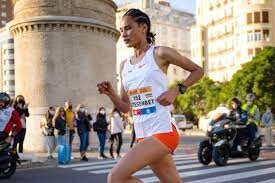
For the race’s international elite coach Marc Roig, Gidey’s participation confirms “Valencia’s position as a world running venue, as well as its long-term link with one of the best athletes, if not the best, in the world”. “Knowing that many marathons wanted her to debut in their cities, we are proud that Letesenbet Gidey has chosen Valencia. It demonstrates that we offer what athletes want”, he explained.
Gidey began her love affair with Valencia in 2020 during the NN Valencia WR Day, when she set a world record in the 5000m with 14:06.62. In October 2021, she took part in the Valencia Half Marathon Trinidad Alfonso Zurich, where she achieved her second world record in what was her debut over the distance with a stratospheric 1:02:52. Her other two WRs came in the Netherlands, in 2019 in Nijmegen in the 15K road race, which she completed in 44:20, and last year in Hengelo in the 10,000m with a time of 29:01.03.
Letesenbet Gidey is the first of the big names that the Valencia Marathon Organizing Committee has confirmed among the elite athletes who will participate in the 42nd edition of the race, which wants to continue fighting to climb positions in the world marathon ranking.
(05/11/2022) ⚡AMPby AIMS
VALENCIA TRINIDAD ALFONSO
The Trinidad Alfonso EDP Valencia Marathon is held annually in the historic city of Valencia which, with its entirely flat circuit and perfect November temperature, averaging between 12-17 degrees, represents the ideal setting for hosting such a long-distance sporting challenge. This, coupled with the most incomparable of settings, makes the Valencia Marathon, Valencia, one of the most important events in...
more...Only three men in the world over the age of 70 have run a marathon in under three hours
History was made at the 2021 London Marathon held in October. Mike Sheridan became the first British runner over the age of 70 to complete the race in under three hours.
The 72-year-old finished the 26.2 mile course in an official time of 2:59.37, to write his name into the history books.
Mike Sheridan (first photo) also became only the third person in the world to achieve this feat.
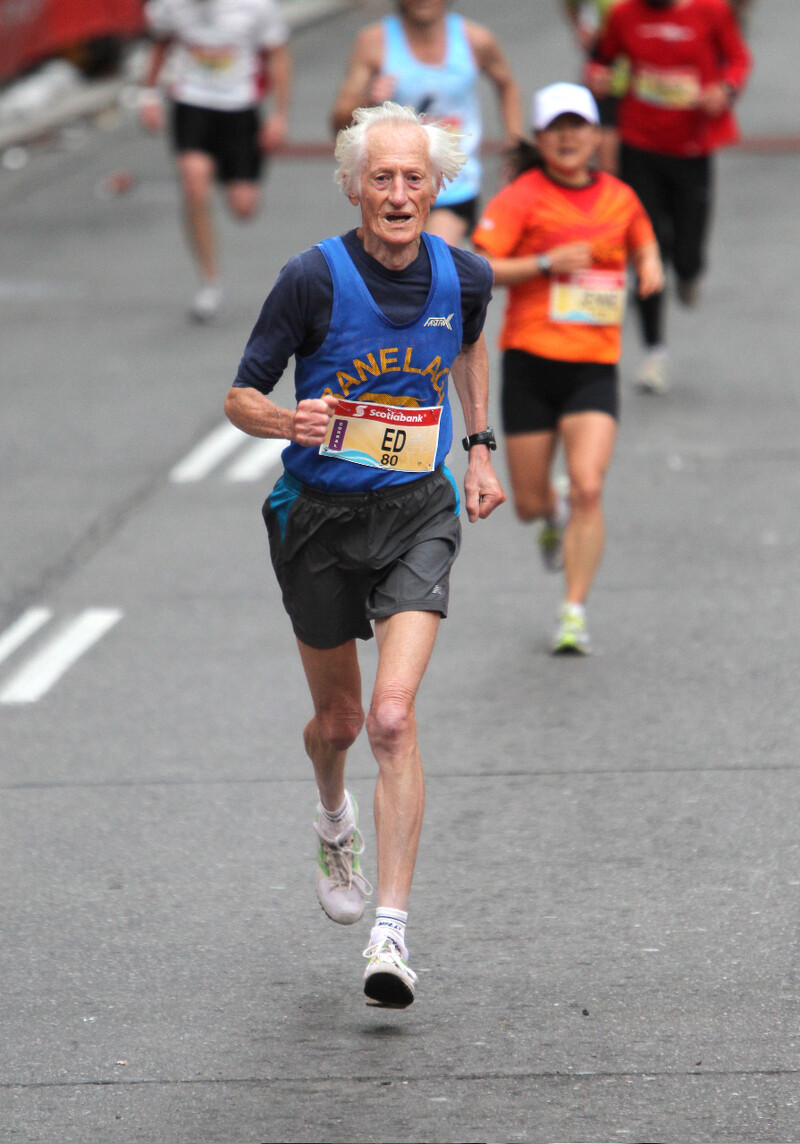
Ed Whitlock (second photo), who died in 2017, and Gene Dykes are the only other two who are on the list of runners over 70 to have completed a marathon in under three hours.
Ed Whitlock was an English-born Canadian long-distance runner, and the first person over 70 years old to run a marathon in less than three hours, with a time of 2:59:10 in 2003.
Whitlock, who ran as a teenager and took up the sport again in his forties, first became the oldest person to run a marathon in less than three hours in 2000, at the age of 69, with a time of 2:52:47. He later extended this record, running a time of 2:58:40 at the age of 74. At 73, he set a world record in the marathon for men 70 to 74, running a 2:54:48, his fastest time after turning 70.

Gene Dykes (third photo) ran his best race, by his own estimation, on December 15, 2018, when he clocked a 2:54:23 at the Jacksonville Marathon. That gave Dykes, then 70, the fastest marathon ever by a 70+ runner. While his time can not be ratified as an official record, because the Jacksonville race was not USATF sanctioned, no one has questioned the legitimacy of the flat, certified, out-and-back course.
Dykes, from suburban Philadelphia, also ran two other sub-3:00s after turning 70 in April, 2018 — Rotterdam and Toronto.
The new member of the 70 plus sub three hour club, Mike Sheridan hit halfway in London in 1:30:16, but got quicker over the second half and his fastest 5km split of 20:41 came from 35km to 40km. He picked up an even faster pace over the last 2km.
The 72-year-old compared running a marathon to ‘physical chess’ as there is a lot you have to take into account.
“A marathon is physical chess,” he said. “You start on the start line, you know you have 26.2 miles to do, but you also know that the human body does not have enough reserves to run the whole thing flat out.
“You have to manage the conditions, other runners, the wind and the rain sometimes.
“You have to manage your own fuel sources and you have to carry gels and you have to top up at the right time.
“You have to eat properly and all of these things come into it and that’s why I call it physical chess.
“You can plan it very well, but if you get a headwind in the last 10 miles then you have a battle on your hands and you have to adapt. It’s why I love it, it is a brilliant distance really.”
(05/10/2022) ⚡AMPTCS London Marathon
The London Marathon was first run on March 29, 1981 and has been held in the spring of every year since 2010. It is sponsored by Virgin Money and was founded by the former Olympic champion and journalist Chris Brasher and Welsh athlete John Disley. It is organized by Hugh Brasher (son of Chris) as Race Director and Nick Bitel...
more...Mastering the easy run isn’t as easy as it sounds
It’s easy to get caught up in the pace, the nice weather or how great your legs are feeling on that particular day. A reason runners don’t run hard on every run is that it increases the body’s chance of getting an injury. Pushing your body to its threshold does not allow the muscles to recover, which will ultimately hinder your performance. There are a few approaches out there that you can use to make sure your easy days don’t become hard.
The most useful non-scientific approach is to ignore all of it and go at a pace where you can easily talk/hold a conversation. This doesn’t mean you should be able to recite a short story, but you should be able to chat with your running partner without gasping for air. If you can do this, you’re not overextending yourself aerobically. If you can’t say more than a few words without losing your breath, you’re running too hard to call it an easy run.

There is a more scientific approach: you can use a heart rate monitor. The idea here is to keep your heart rate in aerobic zones to enhance your recovery from high-intensity exercise through increased aerobic response, which helps remove built-up lactic acid from the muscles. Going by your heart rate on recovery runs is the easiest way to make sure you’re keeping the effort controlled.
We aren’t asking for you to look at your heart rate for every second of your run, but start at an easy conversational pace and see where your heart rate is at every kilometer or so, to ensure you are staying within the aerobic HR zones.

If you are unsure of your aerobic heart rate zones (which can vary on age and health condition), subtract your age from 220. For example, a 30-year-old will generally have a max heart rate of around 190 beats per minute (bpm). Your aerobic HR zone is 65 to 80 percent of your max heart rate. Therefore the aerobic heart rate zone of a 30-year-old is between 120 and 150bpm.
Another thing to consider when going for a recovery run is footwear. You want to wear the most comfortable pair of running shoes that you own. There’s no need to go fast when you’re running easy, therefore wear something that feels amazing on your feet. Having shoes that can get you from point A to point B without pain or discomfort helps the miles go by in a leisurely way.
Some other tips to keep your easy run easy are to avoid hilly routes and to put on a playlist or podcast to help you zen out.
(05/10/2022) ⚡AMPDublin Marathon will hit the streets again after an absence of two years
After an absence of two years due to Covid-19, the Dublin City Marathon returns to the streets of Dublin on October 30.
The event faces two significant challenges, according to long-time race director Jim Aughney. The cost of running the race has risen considerably, but the organizers are dependent on the entry fees paid by participants for the 2020 race.

“We are honoring all the entries, but some of the quotes (for services) have risen between 15 and 20pc.”
Aughney acknowledged that securing a new title sponsor was crucial for the race’s future. “The period between KBC announcing they were leaving and Irish Life coming on board was very worrying.

Not having a sponsor would have put a lot of things in jeopardy, according to Aughney, who added:
“We would have gone ahead but might not have been able to do things we would normally do with a good sponsor behind us.”
Today, the race organizers announced Olympians Catherina McKiernan and Mick Clohisey as the coaching team for the event and the race series.
The Olympic duo have developed training plans for all races in the series and the marathon using their vast expertise and knowledge.
They are part of the overall Runners’ Support Squad to help runners harness the power of support to achieve their goals, whether they aim to run sub 60 minutes for the 10km, complete the half marathon distance, or run sub 3 hours for the marathon.
Irish Marathon record holder and former London Marathon winner Catherina McKiernan said: “I am delighted to be part of the Irish Life Dublin Marathon and Race Series team to help runners realize their race goals.
"We all run on support when taking on the challenge of training for a marathon, from emotional encouragement right the way through to the more specialist advice from professional experts.”
There is also an opportunity for two runners who have secured a place in the sold-out Irish Life Dublin Marathon to win one-to-one coaching and mentoring from either Catherina or Mick.
To be in with a chance to win, all runners need to do is share why they have signed up to race the Irish Life Dublin Marathon, whether that be to raise funds for a cause close to their heart or a personal journey to prove something to themselves.
Entries can be made at IrishLifeDublinMarathon.ie.
(05/10/2022) ⚡AMPby Sean McGoldrick
KBC Dublin Marathon
The KBC Dublin Marathon, which is run through the historic Georgian streets of Dublin, Ireland's largest and capital city.The course is largely flat and is a single lap, starting and finishing close to the City Centre. Conditions formarathon running are ideal....
more...Durban Marathon winner disqualified for only wearing one bib number
On Sunday at the South African Marathon Championships in Durban, Zimbabwe’s Isaac Mpofu won the race in a personal best time of 2:10:04, but was later stripped of his title for only wearing one bib number. Athletics South Africa (ASA) competition rules stipulate that “all runners should have two bib numbers, one at the front and another on the back.” His mistake cost him $4,000 in prize money and qualification for the world championships in July.
Mpofu was told by race officials that he was in violation of the rule sometime after he crossed the finish line in first place. “We were given our race packs by the organizers and they were sealed, and we were told that everything was in there, and in the morning we discovered that there was only one bib number, and we informed the officials, and they informed the race judge, who said we can compete like that and we were surprised to be stripped of the title, because we had confirmed before the race and it was not our fault,” Mpofu explained to a local Zimbabwe paper.

The National Athletics Association of Zimbabwe (NAAZ) announced they have lodged an appeal with the ASA following Mpofu’s disqualification.
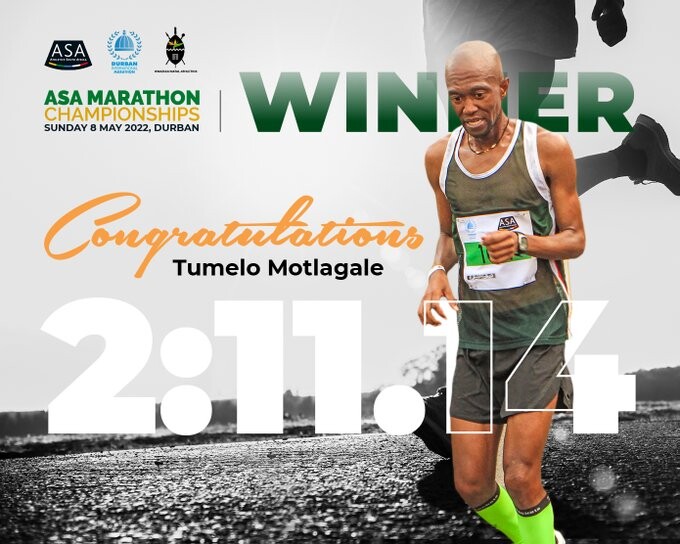
The 33-year-old Zimbabwean runner, who represented his nation at the 2019 World Championships in Doha, forfeited $4,000 in prize money, which was awarded to the winner. South Africa’s Tumelo Motlagale was given first place in light of Mpofu’s disqualification, covering the distance in 2:11:14.
The disqualification leaves Mpofu’s qualification for the World Athletics Championships in July up in the air despite the Zimbabwean bettering the qualification standard time of 2:11:30 during the Durban race.
Mpofu and the NAAZ are still waiting for a response to their appeal from the ASA.
(05/10/2022) ⚡AMPby Running Magazine
Durban International 10k
The 10K is firmly cemented as one of Durban´s and South Africa´s must do events! Although there is no lack in excitement in the elite race, the 10K is a mass participation road run that grants all entrants the unique opportunity to explore their city on foot....
more...95-year-old Colleen Milliman sets one-mile age group world record
On Saturday afternoon at the Masters Hayward Classic, held at Oregon’s Hayward Field, 95-year-old Oregon resident Colleen Milliman,set a new 95+ age group world record in the mile clocking 13:46.13 (8:34/km).
Milliman doesn’t let her age slow her down her love for running. Like any grandmother, she loves keeping up with her grandkids and making them laugh. So when her grandson challenged her to get on a track in 2017, Milliman bought a stopwatch and surprised herself.

In 2018, she signed up for the Masters Hayward Classic in Eugene, where she ended up setting a world record in the 90+ 800m of 5:44.50 (one minute off the previous record).
“I had no idea I would set a record,” Milliman said in an interview with a Eugene newspaper. “The first time I ran a mile at Hayward Field and it turned out to be a record.”
After breaking her first world record, Milliman joined a masters training group inside of Oregon Track Club. This mile record is her third masters WR, as she also has 90+ age-group world records in the 800m as will as the mile.
(05/10/2022) ⚡AMPby Marley Dickinson
TCSW10K Bengaluru 2022 elite fields packed with talent
The 14th edition of one of the world’s top road races over this distance will be held this coming Sunday 15 May.
Prestigious additions to those already named – Muktar Edris, Kibiwott Kandie and Tadese Worku in the men’s race; Hellen Obiri, Irene Cheptai and Joyce Tele in the women’s race – include Kenya’s Rio 2016 Olympic Games 10,000m silver medallist Paul Tanui and his compatriot Nicolas Kipkorir Kimeli, who was fourth in the 5000m at the Olympic Games in Tokyo last summer.
Tanui’s road racing record is rather modest, his personal best of 28:39 was when he finished sixth in the 2019 TCSW10K, but on the track the Japan-based runner has an outstanding record and has a best of 26:49.41. In addition to his Rio silver medal, Tanui has three World Athletics Championships 10,000m bronze medals to his name as well as a World Cross Country Championships silver medal.
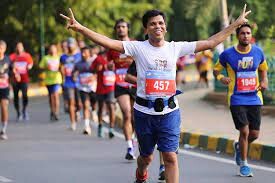
His younger compatriot Kipkorir Kimeli was the 2017 African U20 10,000m champion on the track and will arrive in Bengaluru in very good shape after running 12:55 for 5km on the road last month.
Fellow Kenyan Bravin Kipkogei succeeded Kipkorir Kimeli as the African U20 10,000m champion in 2019 and made a big impression when he finished sixth in the famous 2020 Valencia Half Marathon, in which Kandie set a world record of 57:32, despite having been originally employed as a pacemaker.
Kipkogei has raced sparingly in 2021 and 2022 but has the pedigree to make an impact in Bengaluru.
A third notable Kenyan addition to the men’s field is Matthew Kimeli, who ran 58:43 for the half marathon last year and has already had three outings over that distance in 2022, culminating in a win in Herzogenaurach, Germany in 59:30 just nine days ago
Another man in great shape at the moment is the 2015 world U20 cross country champion Yasin Haji, from Ethiopia who has twice run 27:00 for 10km in recent weeks, firstly in the French city of Lille in March and then in Herzogenaurach.
In total eight men in this year’s TCSW10K have run faster – either on the track or the roads – than Kenya’s Geoffrey Kamworor course record of 27:44 that dates from in 2014
In the women’s race, a number of young and very talented road runners from Kenya and Ethiopia have been added to the elite field to challenge the three well-known names that have already been announced.
Faith Cherono, from Kenya is just 19 and had a sensational international debut less than two months ago when she stunned onlookers with a superb win over 10km in Lille in 31:06. She followed that up by improving to 30:50 in Herzogenaurach.
Ethiopia’s Tesfaye Nigsti is only two seconds slower than Cherono over 10km and has been in good form in half marathons recently, clocking a personal best of 1:06:17 in Valencia last October and going close to that mark twice in March, her only two races in 2022 before the TCSW10K.
Seven women in this year’s TCSW10K have personal bests quicker than the course record of 31:19 set by Kenya’s Agnes Tirop in 2018.
The TCS World 10K Bengaluru 2022 has a total prize fund of US$210,000, with the men’s and women’s winners taking home US$26,000 and course record bonuses of an additional US$8,000 on offer. “The world has had to wait three years because of the pandemic since the last TCS World 10K. This is the 14th edition of this fantastic race, and I am feeling very honoured because many of the world’s best distance runners have committed to coming back to India to make this one of the best events in the world over this distance,” commented Vivek Singh, joint managing director of race promoters Procam International.
TCSW10K Bengaluru 2022 elite fields (with 10km personal best times) Men Muktar Edris (ETH) 27:17 Paul Tanui (KEN) 26:49 (10,000m on the track) Kibiwott Kandie (KEN) 26:50 Tadese Worku (ETH) 26:56 Nicholas Kipkorir Kimeli (KEN) 26:58 Yasin Haji (ETH) 27:00 Bravin Kipkogei (KEN) 27:12 Mathew Kimeli (KEN) 27:11 Abel Sikowo (UGA) 27.47 Telahun Bekele (ETH) 27:53 Reynold Kipkorir (KEN) debut Emmanuel Kiprop (KEN) debut
Women Hellen Obiri (KEN) 30:24 Irene Cheptai (KEN) 30:44 Faith Cherono (KEN) 30:50 Tesfaye Nigsti (ETH) 30:52 Joyce Tele (KEN) 30:59 Esther Borura (KEN) 31:02 Faith Chepkoech (KEN) 31:03 Pauline Esikon (KEN) 32:17 Lomi Muleta (ETH) debut Tariku Alemitu (ETH) debut Yitayish Mekonene (ETH) debut
In addition to the TCS World 10K for elite runners, there is an Open 10K, the Majja Run (5km) the Senior Citizens’ Race and the Champions with Disability Race (both 4.2km).
(05/09/2022) ⚡AMP
TCS WORLD 10K BENGALURU
The TCS World 10k Bengaluru has always excelled in ways beyond running. It has opened new doors for people to reach out to the less privileged of the society and encourages them to do their bit. The TCS World 10K event is the world’s richest 10 Km run and has seen participation from top elite athletes in the world. ...
more...Ethiopian Tsehay Gemechu outkicked Brigid Kosgei to retain her title in Lisbon
Tsehay Gemechu outkicked Brigid Kosgei to retain her title, while Keneth Kiprop Renju claimed a clear men’s race win at the EDP Lisbon Half Marathon, a World Athletics Elite Label event, on Sunday (8).
Ethiopia’s world 5000m fourth-place finisher Gemechu ran 1:06:44 to win by two seconds ahead of Kenya’s world marathon record-holder Kosgei, while Kosgei’s compatriot Renju ran solo to a time of 1:00:13, 47 seconds ahead of Ethiopia’s Mohamed Esa.

Gemechu, Kosgei and Ethiopia’s Gotytom Gebreslase had remained together until the closing kilometres, passing 10km in 31:37 and 15km in 47:25. Before they reached 20km in 1:03:27, Gemechu and Kosgei had managed to drop Gebreslase and the leading pair were seven seconds ahead at that point.
Their advantage only grew and as they kicked in battle it was Gemechu who had the best closing strength, winning in a sprint finish. The race came a couple of months after Kosgei’s Tokyo Marathon victory in 2:16:02, with Gebreslase third on that occasion.
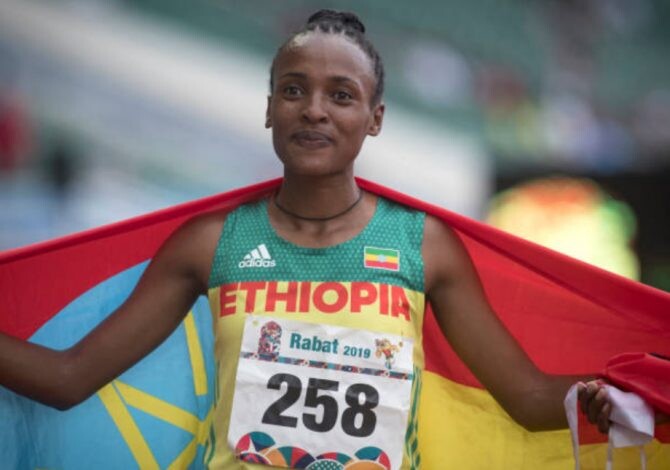
“I am so happy for my win,” said Gemechu, who finished second in the Istanbul Half Marathon in April. “The weather is very hot. I am happy to win against a strong athlete like Brigid Kosgei.”
Israel’s Lonah Chemtai Salpeter finished fourth in 1:08:33 and Italy’s Sofiia Yaremchuk fifth in 1:10:35.
Renju, meanwhile, passed 10km in 28:11 and 15km in 42:15 in the men’s race before clocking 57:02 at 20km and continuing on untroubled to triumph.
The battle for the runner-up spot was much closer and Esa ran 1:01:00 to beat Kenya’s Elvis Kipchoge Cheboi by three seconds, with his compatriot Kipkemoi Kiprono another five seconds back.
(05/09/2022) ⚡AMPby World Athletics
EDP HALF MARATHON OF LISBON
EDP Lisbon Half Marathonis an annual internationalhalf marathoncompetition which is contested every March inLisbon,Portugal. It carries World Athletics Gold Label Road Racestatus. The men's course record of 57:31 was set byJacob Kiplimoin 2021, which was the world record at the time. Kenyanrunners have been very successful in the competition, accounting for over half of the total winners, withTegla Loroupetaking the...
more...Ethiopians Adane and Dekebo break Barcelona Marathon records
Yihunilign Adane led the top two under the previous men’s course record, while Meseret Gebre Dekebo also ran the fastest ever women’s race at the Zurich Barcelona Marathon, a World Athletics Elite Label road race, on Sunday (8).
Achieving an Ethiopian double, Adane ran 2:05:53 to finish ahead of his compatriots Gebru Redahgne (2:05:58) and Kabede Wami, who matched the course record from last year with 2:06:03, while Dekebo also topped an Ethiopian 1-2-3, running 2:23:11 to beat Ayantu Kumela (2:25:00) and Zenebu Fikadu (2:25:11).

Adane, who finished third at last year’s Lisbon Marathon, took half a minute off his PB to win a close race and beat the course record set by Kenya’s Samuel Kosgei last year.
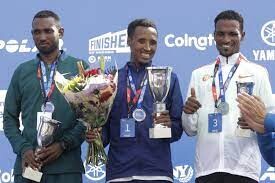
Dekebo’s time, meanwhile, takes more than four minutes off her previous best recorded when winning the Zurich Maraton Donostia-San Sebastian in November. It also improves the women’s course record set by Ethiopia’s Tadu Teshome last year by 42 seconds.
(05/09/2022) ⚡AMPby World Athletics
Zurich Marato Barcelona
The race is popular both with pro athletes and amateurs and provides a unique running experience in and around Zurich. The route runs for the most part along Lake Zurich and consequently is not only attractive as a sports event, but also visually. The start and finish lines are at the upper lake basin and go through downtown Zurich, which...
more...The Wanda Diamond League Final to alternate between Zurich and Brussels in 2024-27
The Wanda Diamond League Final will be held alternately in Zurich and Brussels between 2024 and 2027, following a decision by the Diamond League Association’s General Assembly in March.
Hosting rights for the two-day season finale – at which all 32 Diamond League champions are crowned – have been awarded to the Allianz Memorial van Damme meeting in Brussels for 2024 and 2026, and to Weltklasse Zurich for 2025 and 2027.

The General Assembly made the decision on the recommendation of the Quality Commission, which reviews applications to host the final.
The host city is now confirmed for each of the next five Wanda Diamond League seasons, ensuring all stakeholders are able to plan beyond the short-term.

The final will be held in Zurich on September 7-8, this season, before moving out of Europe, for the first time in the series’ history, to the Prefontaine Classic in Eugene in 2023. Zurich was also the host in 2021, becoming the first city to hold the final as a two-day event featuring all 32 Diamond Disciplines.
As in 2021, future finals held in Zurich will be split between city and stadium. Day one will see selected Diamond League champions crowned at the iconic Sechselautenplatz in Zurich city center, while the remaining disciplines will be held as part of a bumper programme at the Letzigrund Stadium on day two.
In both Eugene and Brussels, both decisive days will take place at the stadium, the former at the newly renovated Hayward Field, and the latter at the Belgian capital’s King Baudouin II Stadium.
Memorial Van Damme will celebrate its 50th anniversary when it hosts the final in 2026.
The Wanda Diamond League Final is the showpiece event of track and field’s premier international one-day circuit and features the biggest stars of the sport.
Athletes compete for points at Wanda Diamond League meetings throughout the season, with the most successful qualifying for a place in the final and a shot at the iconic Diamond Trophy, the most prestigious title in athletics beyond the major championships.
Both the Brussels and the Zurich meetings have a wealth of experience in hosting the showcase event, having been joint hosts between 2010 and 2019, when the final was split between two separate meetings.
Both have also played host to some of the most memorable moments in Diamond League history.
(05/09/2022) ⚡AMPby World Athletics
Prefontaine Classic
The Pre Classic, part of the Diamond League series of international meets featuring Olympic-level athletes, is scheduled to be held at the new Hayward Field in Eugene. The Prefontaine Classicis the longest-running outdoor invitational track & field meet in America and is part of the elite Wanda Diamond League of meets held worldwide annually. The Pre Classic’s results score has...
more...The road to running a 2:59 marathon was certainly not easy for Elaina Raponi
For Elaina Raponi of Kingston, Ont., breaking three hours in the marathon meant everything. At the 2022 Boston Marathon, Raponi knocked off her goal as she sprinted down Bolyston Street with 32 seconds to spare for a personal best of 2:59:28.
The road to 2:59 was certainly not easy for Raponi, as the sport had plenty to teach her over the past five years. She began running casually after she graduated from McMaster University in 2013. She started to take things seriously in the lead-up to her first half-marathon in 2017.
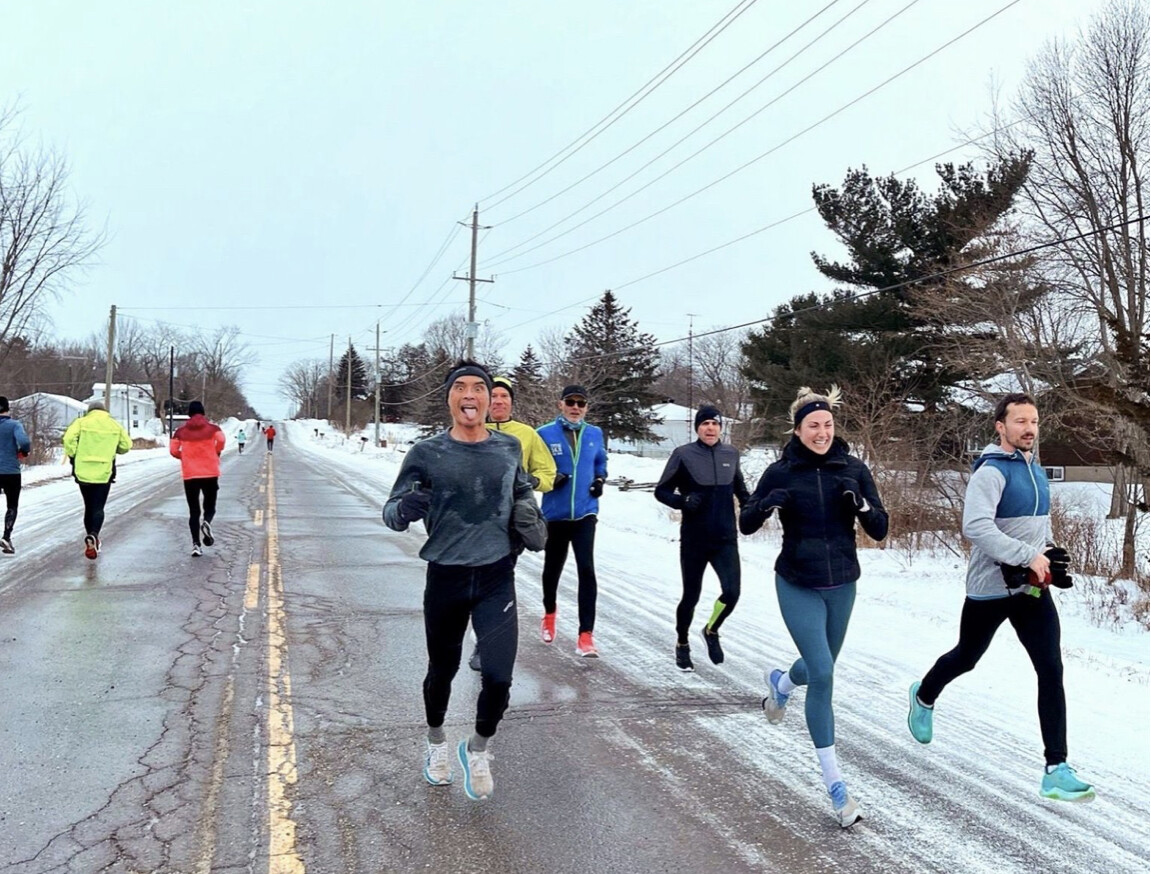
“Running at the time was accessible,” Raponi says. “The low cost/no membership attracted me to the sport, but I never thought how much I would love it.”
Working full-time in communications at a Kingston hospital, Raponi, 31, has always relied on gratitude as something that has kept her motivated. In 2019, her life quickly changed when her father, Tony, was put on life support after quadruple heart bypass surgery. Raponi spent three months visiting him in three different hospitals in two different cities.
“My dad is my best friend and my biggest inspiration,” she says. “When you get close to losing a loved one, it changes your entire perspective on things.”
In 2021, Raponi began taking her training more seriously, and she knew she needed a coach to reach her goals. “Truthfully, I didn’t know what my potential was, and thought having a coach might change my relationship with the sport,” she says.
She began training with a group called the Kingston Run Scene, under coach Brant Stachel. She broke 20 minutes for 5K in her first couple of months under his wing, but was unable to test her fitness in a race environment due to the pandemic.
Raponi found herself at the start line of the Erie Marathon, where she ran 3:33 and finished three minutes shy of the Boston qualifying time of 3:30:00. She felt defeated, but she knew she was capable of more.
Raponi kept showing up, and found herself on another start line at the Georgina Marathon last October. This time she was going to Boston, achieving a 30-minute personal best for a time of 3:03.
“I was dealing with an Achilles injury going into Boston, but I kept telling myself to go after things because life is too short,” Raponi says.
Even though there was doubt going into the race, Raponi’s secret was to remind herself to be grateful for what she has: a loving family, a supportive coach and great friends.
Raponi’s next goal is to work toward a 1:20 at the TCS Toronto Waterfront Half in October.
(05/08/2022) ⚡AMPby Running Magazine
Kenya’s Kigen, Ethiopia’s Borecha win Prague marathon
Nobert Kigen of Kenya won the men's title at the Prague international marathon on Sunday while Bekelech Borecha of Ethiopia was the fastest woman in the race. Kigen crossed the finish line in 2 hours, 7 minutes and 54 seconds, beating a pair of Ethiopian runners.
Kelkile Woldaregay finished second in 2:08:30 with Yitayal Zerihun another 14 seconds back in third. Borecha clocked her personal best of 2:22:56.
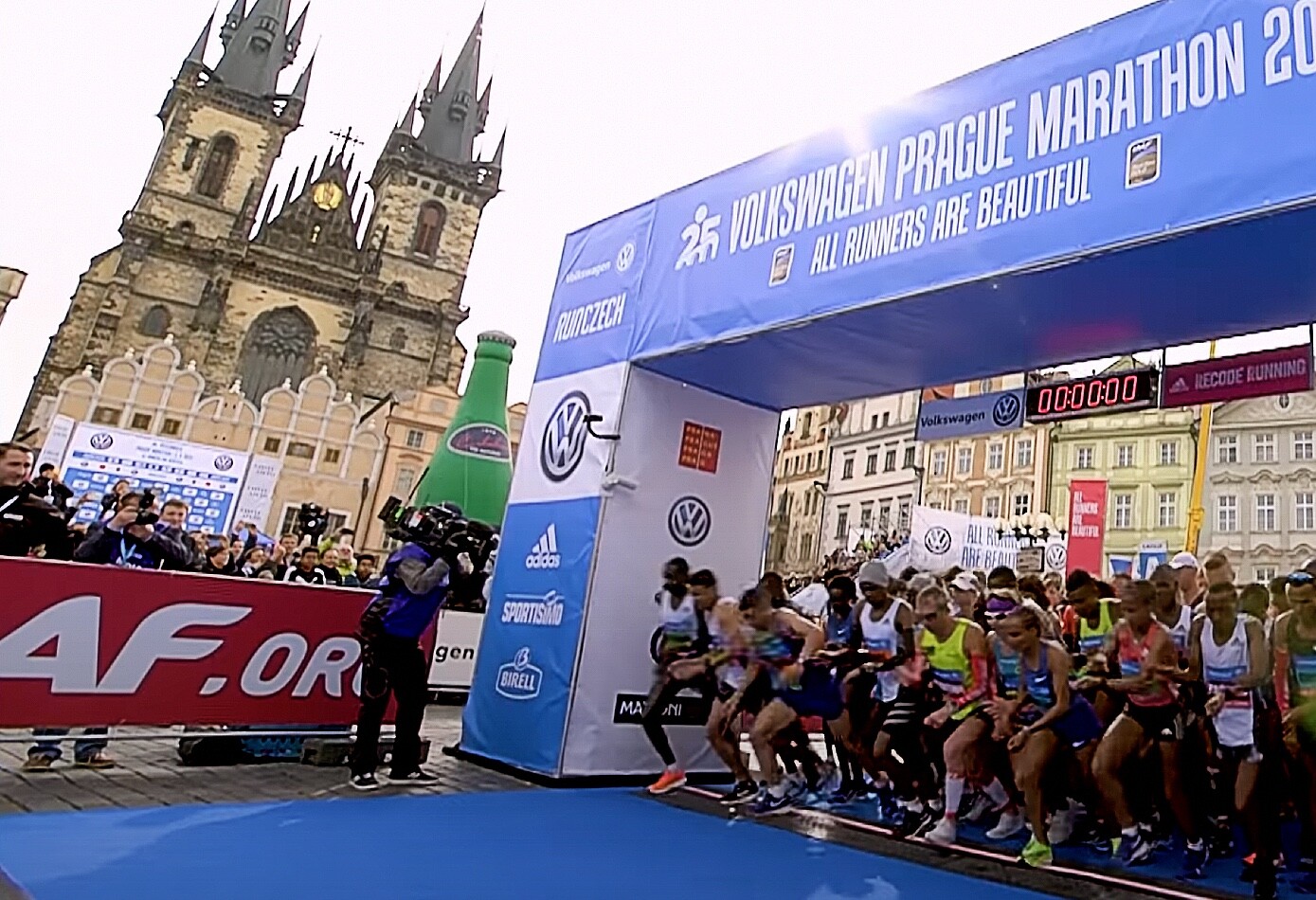
More that 10,000 runners participated in the race that had two editions cancelled due to the coronavirus pandemic.
(05/08/2022) ⚡AMPEmily Sisson breaks the American Women half marathon record
Fifteen years after she won a national junior title in Indianapolis on the track, Emily Sisson returned here to set an American record in the women’s half-marathon on the road.
Sisson finished in 1 hour, 7 minutes, 11 seconds in the OneAmerica 500 Festival Mini-Marathon on Saturday.

The 30-year-old runner broke the American record of 1:07:15 set by Sara Hall on Jan. 16.

Sisson was paced throughout by male runner Brian Harvey, who finished in 1:07:12.
It was the first in-person Mini since 2019 after the annual race was twice canceled during the pandemic.
Hall’s time had broken the American record of 1:07:25 set by Notre Dame graduate Molly Huddle in 2018. Sisson twice nearly bettered that – clocking 1:07:30 in 2019 and 1:07:26 in 2020 – and finally secured the record on a breezy morning with temperatures in the low 50s.
Sisson, an NCAA and Big East champion while representing Providence, won the U.S. Olympic Trials at 10,000 meters last year and finished 10th at Tokyo.
In 2007, she won a USA junior title in the 5,000 meters at IUPUI’s Carroll Stadium, just a few blocks from where the Mini finished at Military Park.
Andrew (Kremer) Pomaranski, a Bishop Chatard graduate, finished second to Sisson in 1:13:12.
Pomaranski, 39, a mother of three who now lives in Michigan, broke a 10-year-old personal best. She was 10th in January’s Houston Marathon in 2:33:35, third-fastest ever by a native Hoosier. While at Miami (Ohio) in college, she set an American junior (under-20) record in the steeplechase.
(05/07/2022) ⚡AMPOneAmerica 500 Festival Mini-Marathon
The mission of the 500 Festival is to produce life-enriching events and programs while celebrating the spirit and legacy of the Indianapolis 500 and fostering positive impact on the city of Indianapolis and state of Indiana. As an organization providing multiple events and programs, many of which are free to attend and impact over 500,000 people annually, our mission to...
more...The Best Running Tips We've Ever Heard
Whether you've been running for a year or a decade, sometimes you hear a tip that makes you say, "Why didn't I think of that?!" We could always use a good hack, so read up on our list and see if there's something that can improve your running routine for the better.
Just Run for 10 Minutes

This one is an oldie but goodie. Not feeling your usual run? Aim to log just 10 minutes (or 1 mile, whichever you prefer). If the issue is inertia, most of the time you'll feel better after a warmup and want to keep going.
Make a Plan
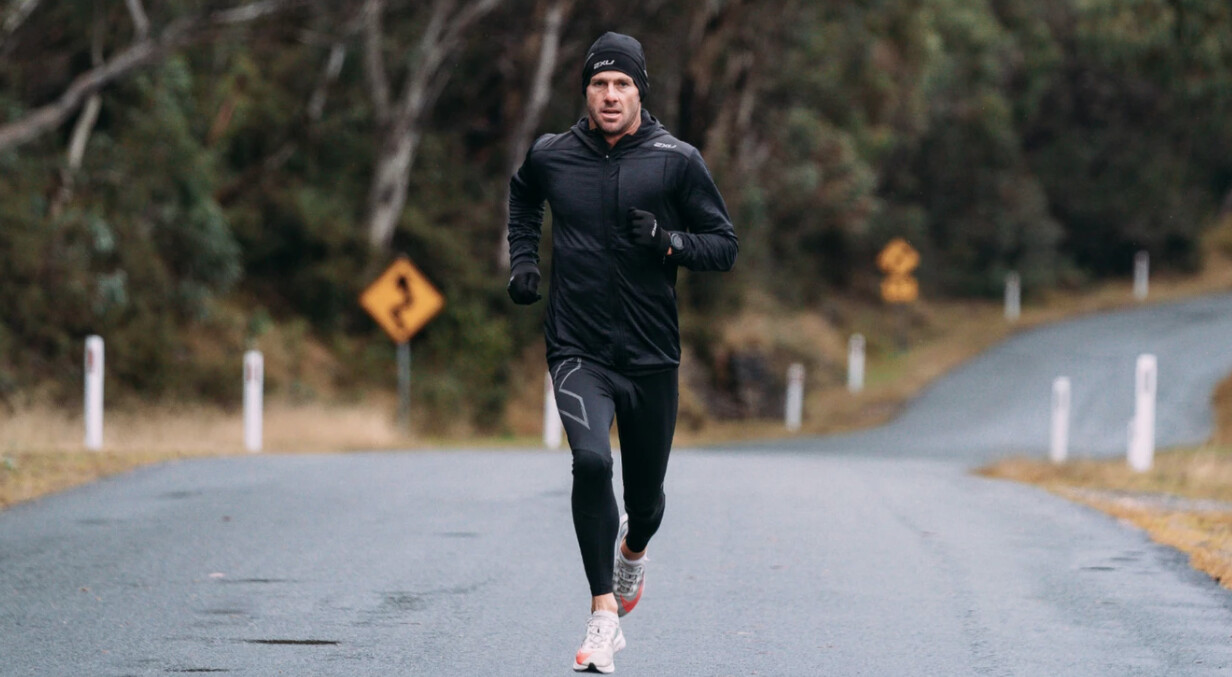
Even if you're running casually, if you want to make sure your runs happen, schedule them out in advance. Look at the week (or month) ahead and decide when you'll be able to run and when it's better to focus on other things.
Better to Be Undercooked Than Overcooked
We'd never suggest toeing the starting line without proper training, but there's a fine line between being prepared and getting burnt out. As you get closer to a goal race, resist the urge to pile on more and more miles. And if you have any nagging aches or pains, a few days off can help get you to the starting line healthy.
Always End a Workout Feeling Like You Could Do a Little More
Whether you have an easy run or an interval workout on tap, it's generally a good idea to leave some in the tank. Giving 110% is a great strategy for race day, but not every day.
Humidity Is the Poor Man's Altitude Training
If you live in an area with warm weather humidity (we see you gulf coast!), your runs are going to feel a lot harder than they would in drier weather. There are plenty of online charts that can help you adjust pace based on the dew point, but keep in mind that if the weather changes later on (and especially on race day), all of that humid training will pay off. Your body has to work harder to cool itself when it's humid, so those physical adaptations (e.g. higher core body temperature and subsequent increased heart rate) will ultimately make you a stronger runner.
Don't Try Anything New on Race Day
You've heard it before, but race day (and the days leading up to it) are the time to stick with your tried-and-true routine. Practice everything from your outfit and your pre-run breakfast to your shoes well in advance. The last thing you need mid-race is an urgent porta potty stop or blisters!
Prioritize Refueling
What happens after a run is almost as important as the run itself. Aim to refuel with a mix of carbohydrates and protein within 30 mins after finishing up your workout. Skimping on post-run fuel can hinder muscle recovery, so it's important not to overlook this step!
Don't Waste Energy up Top
Rather than clenching your fists together, lightly cup your hands (imagine you're holding a handful of potato chips that you don't want to crush!).
Make Every Run Have a Purpose
If you're training for a race, identifying the goal for each day is key. Sometimes the goal will be dialing in on race pace while other days it will simply be recovery. Knowing why you're doing each run can help prevent running unnecessary junk miles or on the flip side, skipping runs.
(05/07/2022) ⚡AMPby Megan Harrington
Follow these steps to fix Plantar Fasciitis foot issues
Plantar fasciitis is a painful injury that not only affects your ability to run, but can even make walking a challenge. It’s a very common issue among runners and can be difficult to get rid of, but not impossible. In the following video, runner, sports rehabilitation therapist and coach, James Dunne, shares three ingredients to successfully treat plantar fasciitis so you can get back on the road pain-free.
What causes plantar fasciitis?
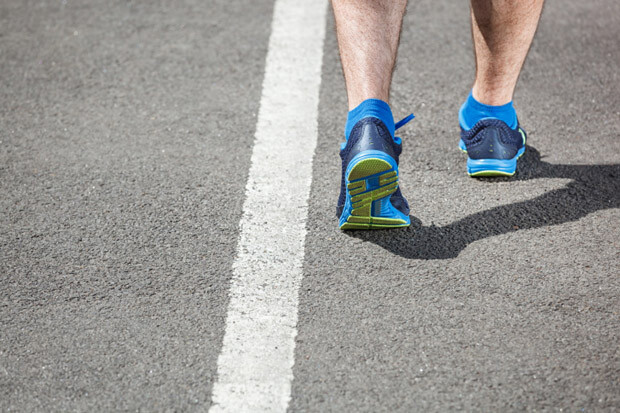
Your plantar fascia is the ligament that connects your heel to the front of your foot, which absorbs the stress and strain you put on your feet on a day-to-day basis. Too much pressure on the plantar fascia can result in tears in the ligament, which causes inflammation and pain.
In many cases, plantar fasciitis pain occurs in the morning when you take your first steps of the day, and then decreases as you move around. It can return, however, after long periods of standing, during or after a run or when you stand up after a long period of sitting.

The keys to fixing plantar fasciitis
According to Dunne, the three most important aspects of plantar fasciitis treatment include plantar fasciitis stretches, strengthening for plantar fasciitis and loading your plantar fascia to promote recovery and long-term function. If you’re struggling with plantar fasciitis, check out the video to learn what you can do every day to resolve the issue and get back to running (and living) pain-free.
(05/07/2022) ⚡AMP
by Running Magazine
Meet the famous duck who ran the Long Island Marathon
In case you forgot about the famous duck, Wrinkle, who made an appearance on the course at the 2021 New York Marathon, he made another appearance at the Long Island Marathon in New York on May 7, in the kids 1K marathon, where Wrinkle clocked a world duck record of 18 minutes and eight seconds.
Wrinkle, who is known as ‘@seducktive’ on Instagram, posted to his 500,000 followers that the race was a lot of fun but hard, and he has no idea whether his time is good or bad.

Before we get into this duck’s performance-enhancing diet, many fans have been speculating about the benefits of wearing webbed-foot shoes. Wrinkle sports customized booties made by his mom and dad to give him a little extra cushioning while he’s out for a waddle.
Wrinkle first gained attention at last November’s NYC Marathon, when he was spotted waddling on the course. Since then, he has been spotted cheering on marathoners in Boston and hanging out with other ducks at the local park
Upon further investigation into duck world records, Wrinkle might be the first to waddle 1,000m and do it at such a blazing speed of 3.31 km/h.
The record is still under ratification, according to the non-existent World Duck Athletics panel.
(05/07/2022) ⚡AMPby Running Magazine
2022 Cocodona 250 Mile Women’s Race
There’s just something about Leadville, Colorado, legend Annie Hughes. With just 71:10:22 down, the 24-year-old claimed first in the women’s race. She led the women all race, and did so with nearly no sleep — only a few catnaps along the way. This is Hughes’ second 200-plus-mile race in seven months, as she won the 2021 Moab 240 Mile last October.
Second in the women’s race belonged to Lauren Jones, whose steady pace throughout delivered her to the finish line at 78:34:16.

Some five hours later, Aravaipa’s own Sarah Ostaszewski landed the final podium spot, with an official time of 84:21:24. Notably, Ostaszewski finished fifth in last year’s Cocodona showdown and looked pleased to have bested her previous performance by two spots.
2022 Cocodona 250 Mile Women’s Results
Annie Hughes (Hoka) – 71:10:22
Lauren Jones – 78:34:16
Sarah Ostaszewski (Aravaipa Running) – 84:21:24
Rhoda Smoker – 89:06:50
Stephanie Simpson – 89:46:29
(05/07/2022) ⚡AMPby I Run Far
2022 Cocodona 250 Mile Men’s Race
The second annual Cocodona 250 Mile began at 10 a.m. U.S. Mountain Time on Tuesday, May 2, in Prescott, Arizona. Runners endured scenic but brutal terrain over the 254-mile course and climbed more than 30,000 feet to arrive in the northern city of Flagstaff.
This year’s course was heavily modified from its intended route due to wildfires. The official cutoff time for the race is 125 hours, and it ends on Saturday, May 7.
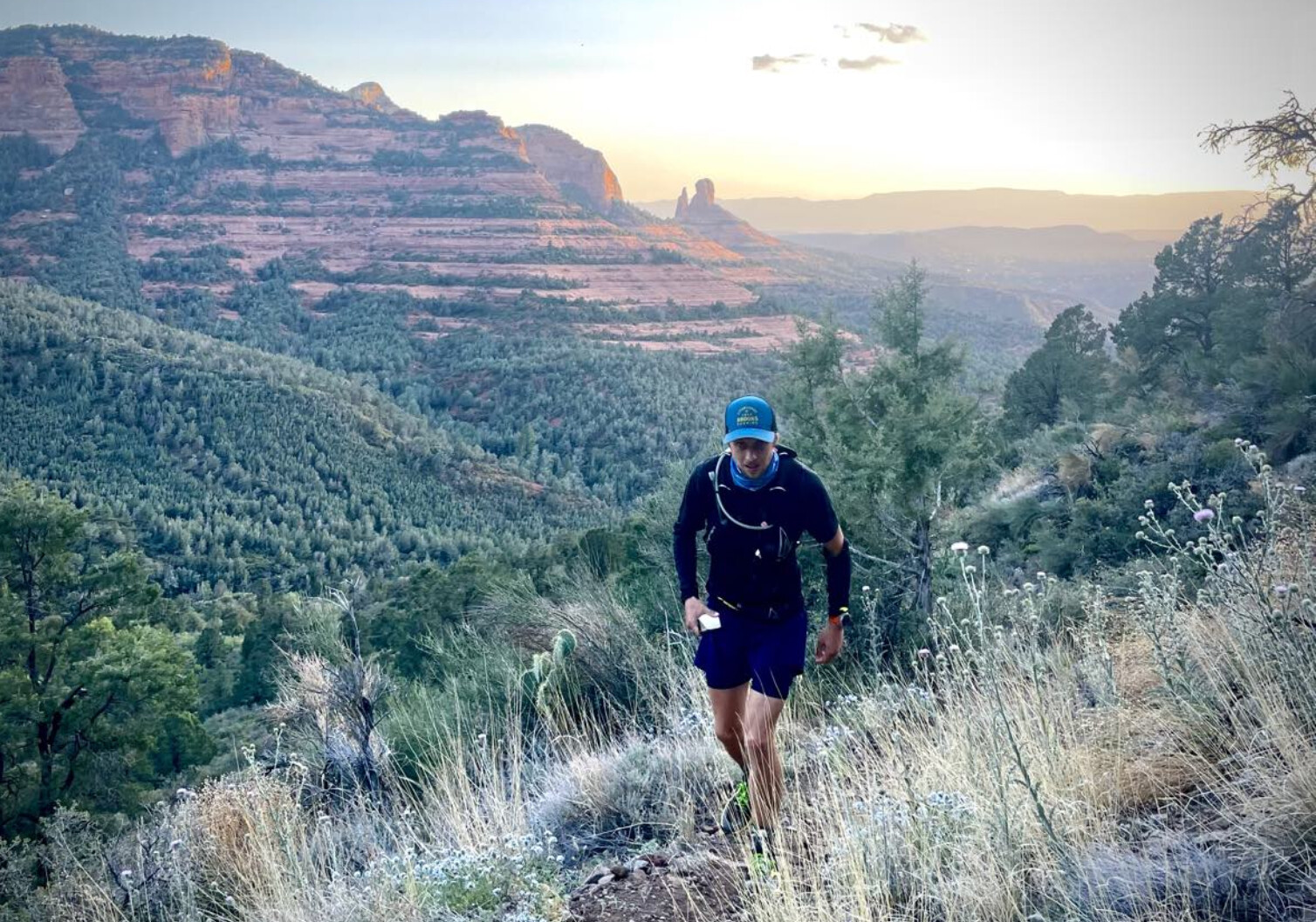
This year’s event, put on by Aravaipa Running, did not disappoint and saw some impressive times set by those earliest to the finish line.
Thru-hiker and ultrarunner Joe McConaughy and young phenom Annie Hughes clinched the men’s and women’s top spots on Wednesday night and Thursday morning, respectively. At the time of publication, runners continue to trickle across the finish line, totally worked but generally beaming.
2022 Cocodona 250 Mile Men’s Race
Joe McConaughy, aka Stringbean (his trail name in the thru-hiking community), ran the entirety of the race in absolutely stellar form and broke the tape in a diminutive 59:28:54. That signified a more than six-hour lead over the rest of the field.
Michael McKnight picked up the pace in the back half of the race to close that gap. At 65:39:16, McKnight crossed the threshold at Heritage Square, claiming second place in the men’s race.
United States Marine veteran Matt Smith gained steady momentum, moving from the middle of the pack to round out the men’s podium late in the race. He finished in 73:01:19.
2022 Cocodona 250 Mile Men’s Results
Joe McConaughy (Brooks) – 59:28:54
Michael McKnight (Salomon) – 65:39:16
Matt Smith – 73:01:19
Kevin Goldberg– 74:24:58
Jason Koop – 75:47:25
(05/07/2022) ⚡AMPby I Run Far
Running Home: Michael Wardian Begins His Run Across America
Michael Wardian is running across America to raise money for World Vision.
On Sunday, May 1, from City Hall in San Francisco, California, runner Michael Wardian set off on his latest adventure — a run the whole way across the United States, ending at Rehoboth Beach, Delaware, to raise money for World Vision’s clean water projects around the world. He will be following Route 50, America’s loneliest highway, through some of the remotest parts of the country, and will travel through 13 states, covering over 3,200 miles.Wardian has a host of wild and wonderful running accomplishments to his name, and this latest challenge seems fitting for the runner, who holds the Guinness World Record for the fastest marathon run in Antarctica — 2:54:54, run on January 23, 2017.
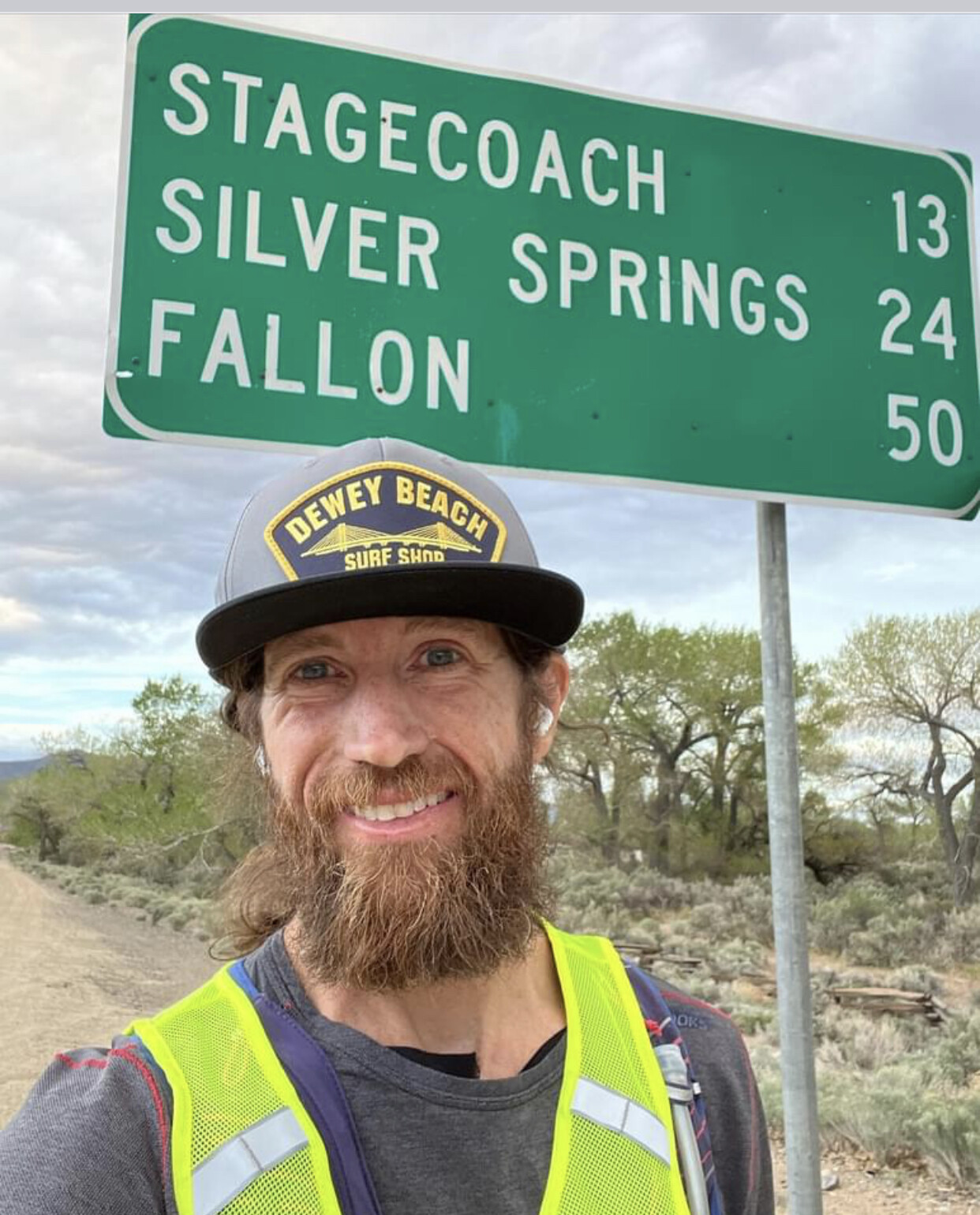
This was the first leg of his World Marathon Challenge, consisting of seven marathons on seven continents in seven days. Wardian holds the fastest cumulative time for the event at 19 hours, 21 minutes, and 36 seconds, averaging 2:45:57 per marathon. His Antarctica run is believed to be the only sub-three-hour marathon run on the ice-covered continent.
Wardian also previously held the record for the fastest marathon pushing a stroller, which he set with the help of his then 10-month-old son Pierce, at the Frederick Marathon in 2007, in a time of 2:42:21.
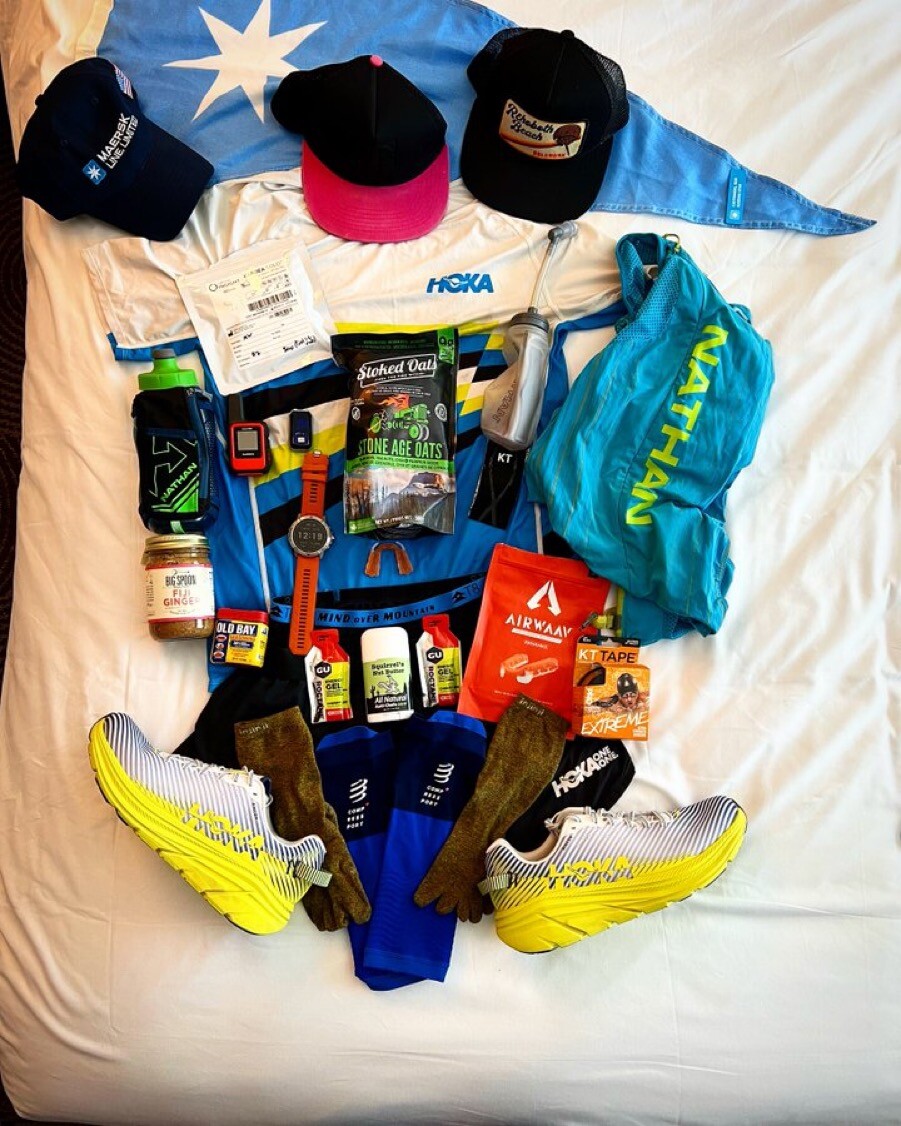
More recently, in 2020, Wardian won the Quarantine Backyard Ultra, completing 262.5 miles, or 63 laps, in a tight circuit around his local neighborhood in Arlington, Virginia, to abide by social distancing requirements during the COVID-19 pandemic.
For the first day of his latest challenge, which is called Running Home because he’s running in the direction of his home, the public was invited to share in Wardian’s send-off and to run a few miles with him.
He told iRunFar he had 20 to 30 people accompany him for the first part of his run from City Hall to Ocean Beach. There he dipped his toes in the Pacific Ocean before heading east on his quest toward the Atlantic, covering 57.97 miles on the first day.
All going well, Wardian’s schedule will see him averaging just over 50 miles per day to finish the traverse, appropriately, on July 4.
When asked about his motivation, he told iRunFar: “I’m trying to raise $100,000 for World Vision for clean water projects. I think right now we’re 14% of the way, so hopefully each day we get a little more and change a lot of lives. I think right now we’ve already impacted [about] 350 lives. It’s so cool, every day I get texts saying that somebody donated five bucks, and imagine if everybody donated just five bucks!”
You can follow Wardian’s run on the live tracker and send him a supportive message, make a donation to his World Vision fund, and help him reach his goal of raising $100,000 for this most worthy cause.
Update: Michael has crossed California and is now in Nevada.
(05/07/2022) ⚡AMPby I Run Far
Timothy Cheruiyot and Jakob Ingebrigtsen will resume rivalry in Eugene Mile
Reigning Wanda Diamond League champion Timothy Cheruiyot and Olympic champion Jakob Ingebrigtsen will resume their rivalry in the men's 1500m when they go head to head in the prestigious Bowerman Mile at the Prefontaine Classic in Eugene on May 28th.
Cheruiyot claimed his fourth career Diamond Trophy when he edged out Ingebrigtsen in the final in Zurich last year, just weeks after the Norwegian had beaten him to the gold medal in Tokyo.
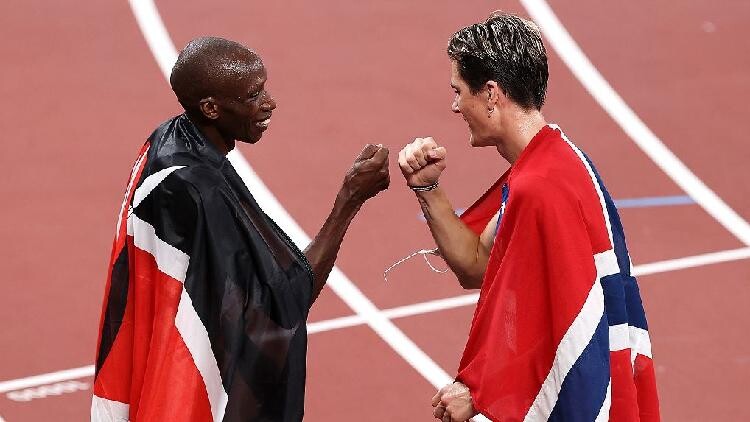
Ingebrigtsen, 21, already has a rich history of success in the Bowerman Mile. At the 2017 Pre Classic Ingebrigtsen became the youngest to ever break the four minute barrier, running 3:58.07 at the age of 16. One year later he would lower his time to 3:52.28 and come back again in 2019 with a 3:51.30. In last year’s race, Ingebrigtsen captured his first Bowerman Mile victory, running the fastest time ever on U.S. soil, 3:47.24. After breaking the Olympic record in Tokyo last summer and taking down the indoor 1500 meter world record earlier this year, it’s clear the Norwegian is ready to cement himself further in the record books.
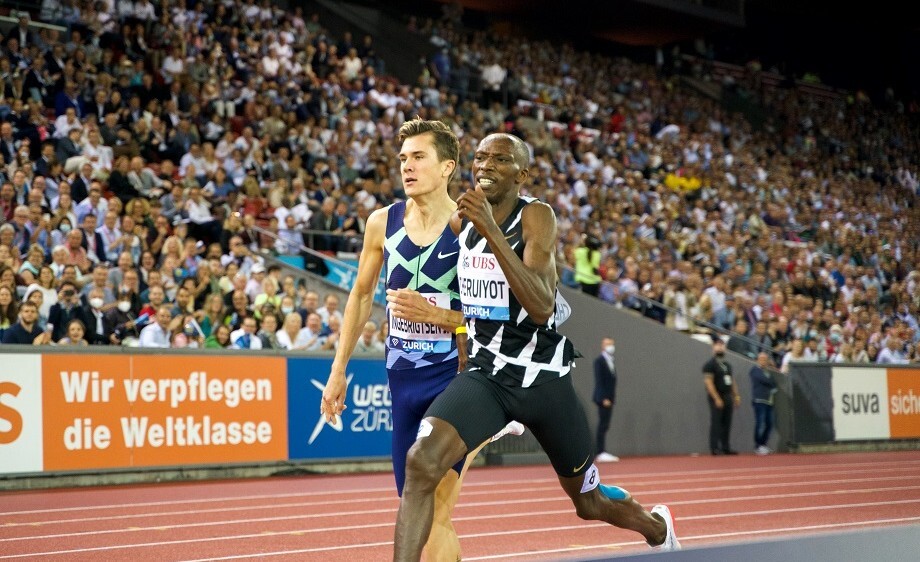
The budding rivalry between Ingebrigtsen and Cheruiyot will add another chapter at the Pre Classic in 2022. After winning the Bowerman Mile and claiming gold at the World Championships in 2019, Cheruiyot took silver at the Olympic games last year. He would ultimately bounce back to beat the Norwegian in Zurich.
The third Wanda Diamond League meeting of the season will also feature a strong field in the men's 5000m, with Canada's Olympic silver medallist Mo Ahmed taking on home hero Paul Chelimo and 2018 Diamond League champion Selemon Barega of Ethiopia.
In the women's discus, meanwhile, 2021 Diamond League champion Valarie Allman will be looking to use home advantage to get valuable points on the board in her bid to defend her title, going up against the likes of Olympic silver medallist Kristin Prudenz and six-time Diamond League champion Sandra Perkovic.
(05/06/2022) ⚡AMPPrefontaine Classic
The Pre Classic, part of the Diamond League series of international meets featuring Olympic-level athletes, is scheduled to be held at the new Hayward Field in Eugene. The Prefontaine Classicis the longest-running outdoor invitational track & field meet in America and is part of the elite Wanda Diamond League of meets held worldwide annually. The Pre Classic’s results score has...
more...Betty Deer, 80, has been running in marathons across the country since 1986, the Indianapolis Mini Marathon this Saturday will be her last
The running began 48 years ago in a modest neighborhood in New Palestine. Betty Deer was a 32-year-old mother of two girls, a mother who, if truth be told, hoped a jog after dinner might keep those nagging extra five pounds away.
She set out from her driveway that first evening in 1974 and started jogging. A couple of neighbors spotted her and stopped Betty.
"Hey, we'd like to try running, too," they told her.

At first, they kept it short, about a mile and a half from the end of the street down to Sugar Creek.
"And then we'd get down there and it was like, 'Well now, you've got to figure out how to get back,'" said Betty. "How do we get back that mile and a half?"

That was Betty Deer at 32. On Saturday, she will run her 34th Mini-Marathon at 80, a race she has finished in the top three in her age division the past 13 years.
It will be a bittersweet day, an end of an era. Betty has run more than 12 full marathons and too many half marathons and shorter distance races to count.
More than 50 medals hang in the den of her Greenfield home. Others are on the desk still wrapped in plastic. Many have been donated to sick kids at Riley Hospital for Children. Some have gone to Goodwill.
But on Saturday, Betty says she will cross the Mini-Marathon finish line one final time.
"I wouldn't count on it," her husband Larry Deer quickly chimes in. He can hardly believe his wife of 61 years would really give up marathoning. "I don't think so. She might have another in her."
No, Betty says adamantly. When she runs long distances, right hip pain nags at her. The foot pain is there, too, and even the Asics shoes she has sworn by for decades aren't giving her relief.
"This will be my last," she said. "It really will be my last."
The neighborhood jogs turned to running with co-workers after Betty clocked out at Community Hospital East, where she was a patient representative before going back to school to get a degree in social work.
"One of the ladies there said, 'You know Shirley runs the Mini. Why don't you do that?'" Betty said. "That's how it began."
It was 58 degrees, drizzling and overcast in May 1986. Betty drove to Indianapolis Motor Speedway where buses picked up runners and shuttled them downtown for the start of the race.
This was the 10th Mini-Marathon; the race began in 1977. It was Betty's first. She finished that race with the best time of her 33 runs: One hour and 59 minutes.
She was hooked.
In the early days of the Mini, Betty ran the entire race.
"It was a mental thing in the beginning. I thought you had to run it," she said. The only time she would walk was to grab a paper cup of water, drink it quickly, and then start running again.
"But now I find out that I do just as well if I walk some of it," she said. On Saturday, she plans to run five minutes, walk 30 seconds, run five minutes, walk 30 seconds the entire race.
Her times have slowed as the years have passed. But it's all relative. Betty remains at the top of her age group. At 64 years old, she finished fourth in her age group, running the Mini in 2:07. Every Mini-Marathon since, she has finished in the top 3.
In 2019, Betty placed first in the 75-79 age group with a time of 2:41:27, beating the next closest competitor by a full six minutes and the fifth place finisher by 32 minutes.
"But I'm not fast. I'm not fast," she said. "See, I don't consider myself a competitive runner."
If not that, then what is she?
As running goes, Betty has been lucky. At 80, she hasn't had to have surgery on her knees or hip. She did have a thyroid issue and a couple of bouts with cataracts.
In the hundreds of races she has competed in, Betty has crossed the finish line every single time, though there was one Mini where she almost didn't.
It was the 10th mile of the race when she broke the third metatarsal bone in her foot.
"I didn't know what to do and I started walking, but it was painful," she said. "And I decided, 'Well, I might as well finish it.' And so I started running and actually it felt better after I started running. And I finished that race."
Betty doesn't have any rituals for the Mini-Marathon, no carb-loaded spaghetti dinners with garlic bread the night before. "It just depends what I feel like eating that night," she said.
In the morning, she usually has half a bagel with a smidge of peanut butter on the way to the race.
Her training consists of some type of workout six days a week. She runs three days, does spin classes and Pilates classes on two days and walks with a neighbor one day.
Betty saves her long runs for Sundays. To prepare for the Mini this year, she ran eight miles on Sundays in January, nine miles in February, 10 miles in March and 11 or 12 miles in April.
This week leading up to the Mini, she ran nine miles on Sunday, took a spin class and a Pilates class Monday and ran three miles Tuesday. She will rest until Saturday.
Now to run her final Mini-Marathon.
"The thing I've enjoyed most is running with my friends," Betty said. "If I'd stop running with them that would be devastating to me. So I'm going to keep running, just not to this level."
(05/06/2022) ⚡AMPby Dana Husinger Benbow
OneAmerica 500 Festival Mini-Marathon
The mission of the 500 Festival is to produce life-enriching events and programs while celebrating the spirit and legacy of the Indianapolis 500 and fostering positive impact on the city of Indianapolis and state of Indiana. As an organization providing multiple events and programs, many of which are free to attend and impact over 500,000 people annually, our mission to...
more...Six-year-old’s marathon sparks controversy on social media
On Sunday at the Flying Pig Marathon in Cincinnati, Ohio, a family of eight from Bellevue, Ky., all completed the 42.2 km together in eight hours and 35 minutes. Since then, their family marathon outing has sparked controversy online as two of the children are under 12, and one is only six.
Ben Crawford‘s Facebook post about his family’s marathon finish sparked criticism over the advisability of allowing his six-year-old son, Rainier, to cover the marathon distance. Many experienced marathoners and coaches, including Lee Troop and Kara Goucher, have weighed in online, stating that six is too young for the marathon.
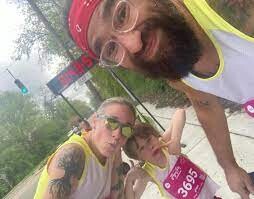
Most experts advise against heavy training for children, whose bones are still developing. Even at 11, growth plate development is not complete; children who run marathons before puberty may be at risk of future musculoskeletal issues. Also, extreme training may also reduce levels of serum HGH (human growth hormone) and testosterone in children who have not yet gone through puberty. Many commenters question whether, even in the absence of long-term physical effects, so much training at such a young age could possibly lead to a lifelong love of the sport. It’s for these reasons that marathons have rules that entrants must be 18 or older.
Crawford posted that “On the marathon course, Rainier knew they usually hand out Pringles around mile 20. He was struggling physically and wanted to take a break and sit every three minutes. After 7 hours, we finally got to mile 20 and only to find an abandoned table and empty boxes. He was crying and we were moving slow so I told him I’d buy him two sleeves if he kept moving. I had to promise him another sleeve to get him in the family pic at the finish line. Today I paid him off.”

Crawford also has a YouTube channel that includes multiple posts with titles like “6 Year Old Runs 6 Miles–NO PROBLEM” and “5-Year-Old Trains for Marathon.”
In their defence, parents Ben and Kami Crawford say they have never forced their children to run and that Rainier begged to join them at this race. “We gave him a 50/50 chance of completing it and were ready to pull the plug at any moment if he requested it,” Crawford says on his Facebook page. “Yes there were tears, and yes he had a fall but every single member of our family has cried during a marathon.
“We go to great lengths to prioritize our kids’ health and experience of the day over sharing it with anyone else. Communicating these stories is a passion project that we do with our children’s co-operation and permission.”
This isn’t the first time the Crawford family has embarked on what some would see as a questionable challenge for a family with a young child; in 2019, he published a book called 2,000 miles Together: The Story of the Largest Family to Hike the Appalachian Trail. (Rainier was three at the time.)
The Flying Pig Marathon issued the following statement:
“Our marathon takes the safety and security of all participants very seriously. We receive numerous requests for special accommodations each year and carefully evaluate each one. Our goal is to provide a positive race experience for all participants while supporting them along the course. The Flying Pig Marathon was founded on the idea of hosting a world-class road race experience and will always strive to do so.”
(05/06/2022) ⚡AMPCincinnati Flying Pig Marathon
This beloved race found it's name from Cincinnati's pork history which dates back to the early 1800's. Cincinnati is also known as "Porkopolis."Our weekend line up of events are designed to welcome athletes of all abilities from the Diaper Dash to the full Marathon and everything in-between, we truly have something for everyone. We even added a dog race several...
more...Five excuses for when it’s OK to skip your run
You know the feeling–your run has turned into a slog. You’re underslept, underfuelled, and something hurts (more likely, multiple things hurt). Do you call it a day and go home?
If it’s an easy run, long run or a workout, in most cases you’re better off just gutting it out and finishing. Even if you don’t accomplish what you set out for, the effort you put in is still valuable and will contribute to your mental strength and fitness down the road. But sometimes, bailing on a run can be for the better. Here are a few examples of times when it’s more than OK to cut your run short.

1.- If you have an injury
This is a no-brainer, but you’d be surprised how many athletes push themselves through an injury when they shouldn’t be exercising at all. If you’re injured, try to resist the urge to run until the issue is under control (no pain). If the injury gets worse while you’re running, you need to stop immediately, as pushing yourself through the last few intervals or kilometres could potentially set you back more weeks or even months.

Try to distinguish between the pain associated with an injury and common aches and soreness from running. It’s better to be safe than sorry.
2.- If you are sick
If you have the flu, infection or a virus, take a break from hard training and let your body recover. Hard or long efforts can damage an already weak immune system and open the door for further sickness or delayed recovery. If you insist on running, keep it short and easy. The rule of thumb is that if what ails you is above the neck (such as a sore throat or headache), you can still run, but be cautious. If it’s below the neck (such as in the chest/lungs), you should completely avoid hard training until things clear up.
3.- Mental and physical exhaustion
Running through a bit of physical fatigue is common, especially when you are training for longer distances. The first couple of kilometres are tough on tired legs, but you can shake off a bit of exertion after a few clicks. If you’re drained and lack energy or enthusiasm, it may be necessary to cut the workout short or reschedule the run to another day. Mental stress can carry over, leaving you unmotivated or unable to complete a workout.
Be honest with yourself and evaluate how you feel mentally and physically. If you are struggling and/or are completely exhausted, you might want to push your run to another day.
4.- Emergencies
This is obnious. Some things in life are bigger than you training to lower your marathon PB. In the case of an emergency, you shouldn’t even think about getting mileage in. Whether it’s a family or personal emergency, making sure you are following your training plan should be low on your priority list.
5.- A severe weather warning or natural disaster
Although the weather is usually beyond our control, runners are the first to blame the external conditions. Many old-school coaches will say there’s no such thing as bad weather, just a bad attitude (or bad clothing), but that’s not necessarily true. If there are high wind warnings or a tornado brewing, you may be able to finally use the weather as an excuse. Treadmills were invented for a reason.
(05/06/2022) ⚡AMPby Marley Dickinson
The USATF Half Marathon Championships hosted by the OneAmerica 500 Festival Mini-Marathon are the fourth stop on the 2022 USATF Running Circuit
With $40,000 of prize money on the line and course conditions ideal for fast times, Olympians Leonard Korir and Emily Sisson headline the men’s and women’s field for Saturday’s USATF Half Marathon Championships in downtown Indianapolis, in what promises to be an exciting morning of racing.
Korir (Colorado Springs, Colorado/USATF Colorado) leads a talented men’s field to the start line in Indianapolis. The two-time USATF Half Marathon champion is having a strong start to his 2022 season, with a runner-up effort at the USATF 15 km Championships and a fourth-place finish at the USATF Cross Country Championships, which puts him atop of the USATF Running Circuit overall standings with 19 points, four points ahead of Shadrack Kipchirchir, who is not racing Saturday.
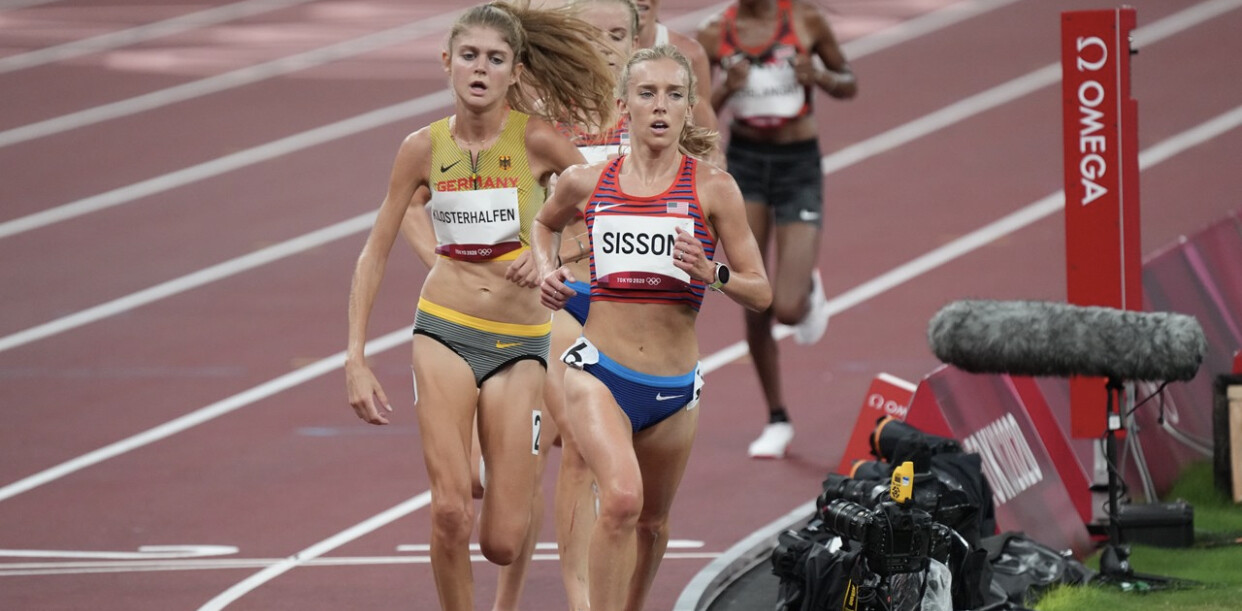
Korir will be joined up front by Futsum Zienasellassie (Flagstaff, Arizona/USATF Arizona), who finished sixth at the USATF 15 km Championships and ninth at the USATF Cross Country Championships. Zienasellassie beat Korir at the 2021 USATF Half Marathon Championships, placing fifth to Korir’s seventh.
At the Credit Union Cherry Blossom Ten Mile Run early last month, Zienasellassie placed an impressive fourth against strong competition, finishing four seconds up on fifth place Reid Buchanan, as well as besting sixth place finisher Lawi Lalang.
Both Buchanan (San Diego, California/USATF Southern California) and Lalang (Colorado Springs, Colorado/USATF Colorado) are entered in Saturday’s contest and will vie for top three finishes. Jacob Thomson (Flagstaff, Arizona/USATF Arizona), who placed tenth at the USATF 15 km Championships, leads the rest of the field, which includes notable road race standouts Noah Droddy (Boulder, Colorado), Sid Vaughn (Flagstaff, Arizona), and Caleb Kerr (Zionsville, Indiana/USATF Indiana). Leading the women’s field, Sisson (Flagstaff, Arizona/USATF New England) seeks to continue her dominance on the roads.
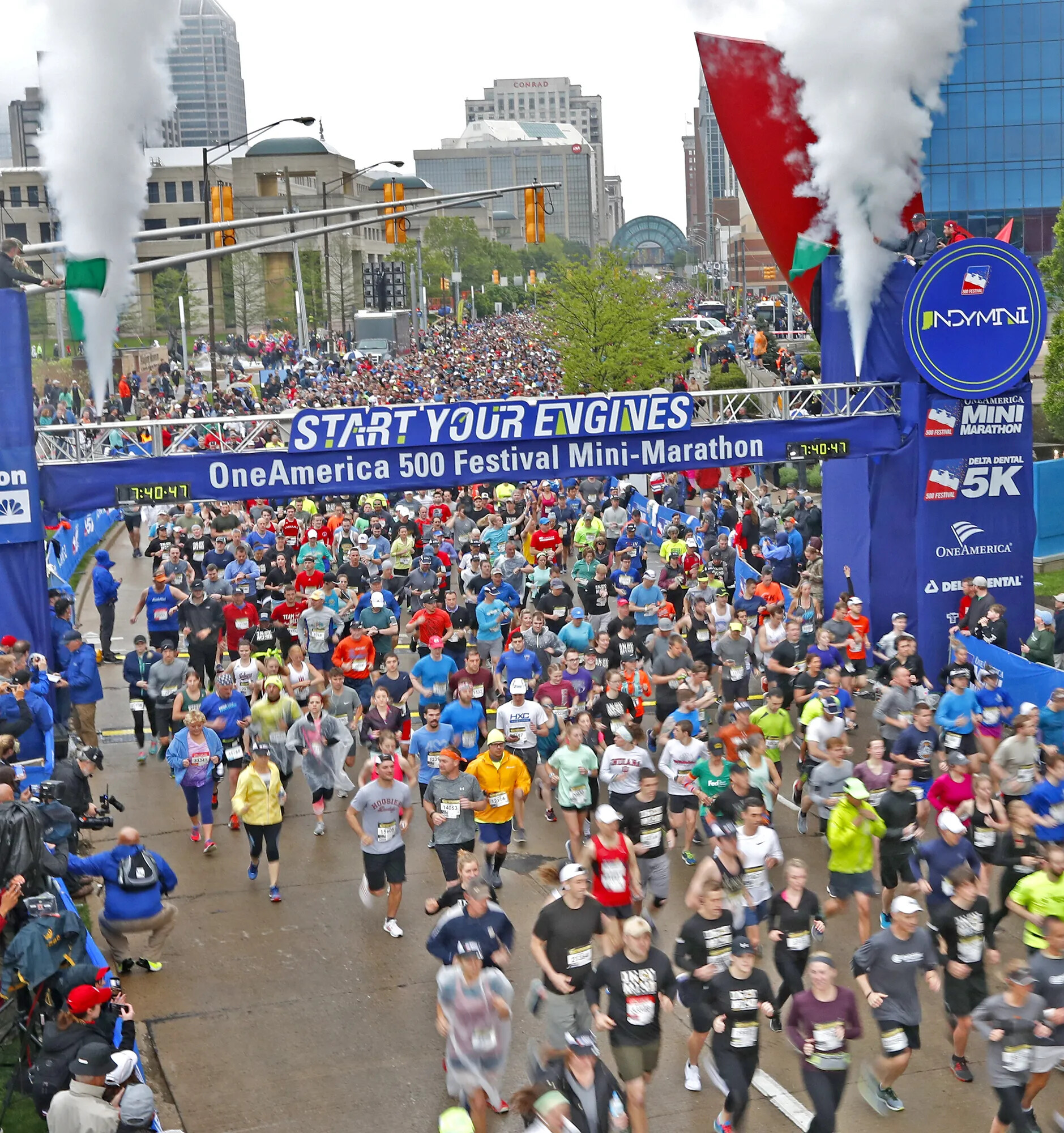
The Providence-based standout has had a quiet start to her 2022, only racing once. That one race though was one to remember, winning the USATF 15 km Championships by nearly two minutes. Sisson currently sits tied for third in the USATF Running Circuit standings with 15 points, only behind Emily Infeld and Emily Durgin, who have 20 and 19 points respectively.
Behind Sisson, notable veteran Allie Kieffer (West Islip, New York/USATF New York) resumes her racing in the United States. Kieffer has raced twice in 2022, once in Great Britain and again in Italy. Her performance at the Roma Ostia Half Marathon in early March was impressive, as she finished fourth in 1:09:17 on the fast Italian course. Kieffer placed fourth in the 2021 USATF Half Marathon Championships in 1:10:44 and will look to improve on that performance on Saturday.
Another top three contender is Tayler Tuttle (Boulder, Colorado/USATF Colorado). Tuttle placed eighth at the Credit Union Cherry Blossom Ten Mile Run last month, while finishing tenth at the USATF 15 km Championships. A top three performance in Indianapolis would move Tuttle into top five on the USATF Running Circuit.
Other key entries include Jane Bareikis (Crestwood, Illinois/USATF Illinois), who has run 1:14 for the half marathon distance twice this year, along with Madison Offstein (Chicago, Illinois/USATF Illinois).
(05/05/2022) ⚡AMPOneAmerica 500 Festival Mini-Marathon
The mission of the 500 Festival is to produce life-enriching events and programs while celebrating the spirit and legacy of the Indianapolis 500 and fostering positive impact on the city of Indianapolis and state of Indiana. As an organization providing multiple events and programs, many of which are free to attend and impact over 500,000 people annually, our mission to...
more...Ethiopians will be vying for course records at 2022 Tartan Ottawa International Marathon
Ethiopia will again be favored to win when the Ottawa International Marathon returns to an in-person event on Sunday, May 29th.
Indeed, the Ethiopian women are expected to extend their 10-year winning streak as they vye to break the course record (CR) of 2:22:17, set in 2018 by returning champion Geleta Burka. Burka will be challenged by the 2019 defending champion, Tigist Girma, who has since run twice under 2:20
These blistering fast women will be challenged by countrywoman Bruktayit Eshetu who finished 2nd in the 2019 Toronto Waterfront Marathon with a personal best of 2:22:40 and Juliet Chekwel of Uganda, who recorded a national record of 2:23:13 in her marathon debut two years ago.
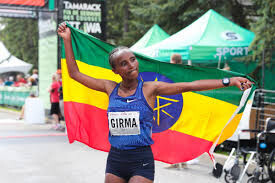
Returning to Ottawa will be Lanni Marchant who broke the 28-year-old national record in 2013 by running it in exactly 2:28:00. Marchant will be heading off against Dayna Pidhoreski, the 2019 Canadian marathon champion with a personal best of 2:29:03.
Unprecedented depth of field in the men’s event

On the men’s side, Ottawa’s new Elite Athlete Coordinator Dylan Wykes, a 2012 Canadian Olympian, has assembled an unprecedented depth of field on Canadian soil. No fewer than eight of the men lining up on the start line will be boasting personal bests under 2:08, with three of them having recently run 2:06 or faster. The course record, set by fellow Ethiopian Yemane Tsegaye in 2014 is 2:06:54.
Wykes will be looking for return competitor Adugna Takele (2:05:57) and his fellow Ethiopian competitors Tsegaye Getachew Kebede (2:05:11) and Andualem Belay Shiferaw (2:05:52) to compete for that CR. The Ethiopians could see a fight from Kenyan Alex Kibet who recently won the Berlin Half Marathon with a personal best of 58:55, indicating his preparations are going well.
“It’s been an interesting challenge to build this start list with so little in-person competition over the past two years,” said Dylan Wykes, the Elite Athlete Coordinator. “Based on what we’ve seen recently with these athletes, and with how fast road races have been generally, I think we are quite likely to see some very fast times on May 29th. I can’t wait.”
The top Canadian in the men’s field is Tristan Woodfine, who was 10th in the 2018 Ottawa Marathon and will be seeking a top 10 finish.
(05/05/2022) ⚡AMPby Paul Gains
Ottawa Marathon
As one of two IAAF Gold Label marathon events in Canada, the race attracts Canada’s largest marathon field (7,000 participants) as well as a world-class contingent of elite athletes every year. Featuring the beautiful scenery of Canada’s capital, the top-notch organization of an IAAF event, the atmosphere of hundreds of thousands of spectators, and a fast course perfect both...
more...

